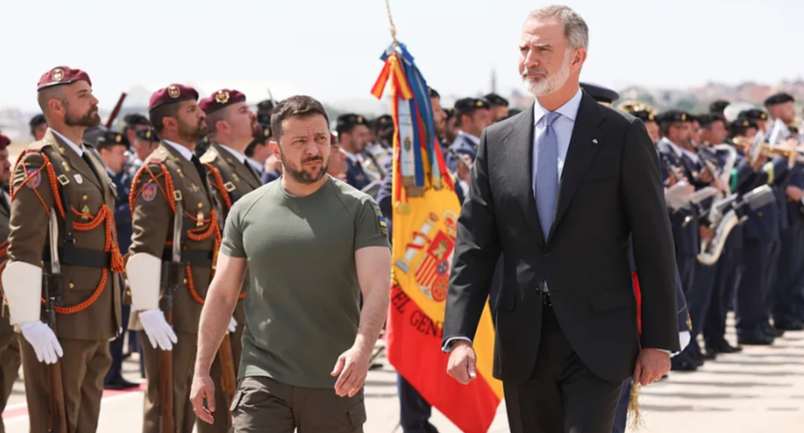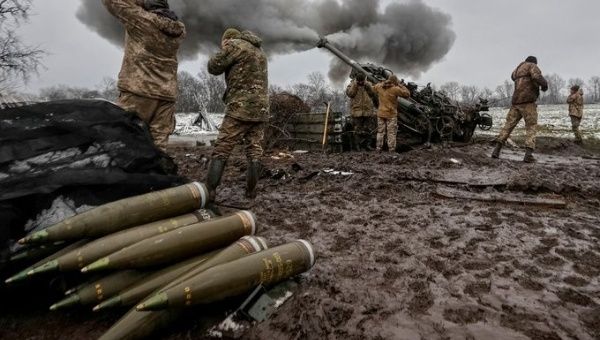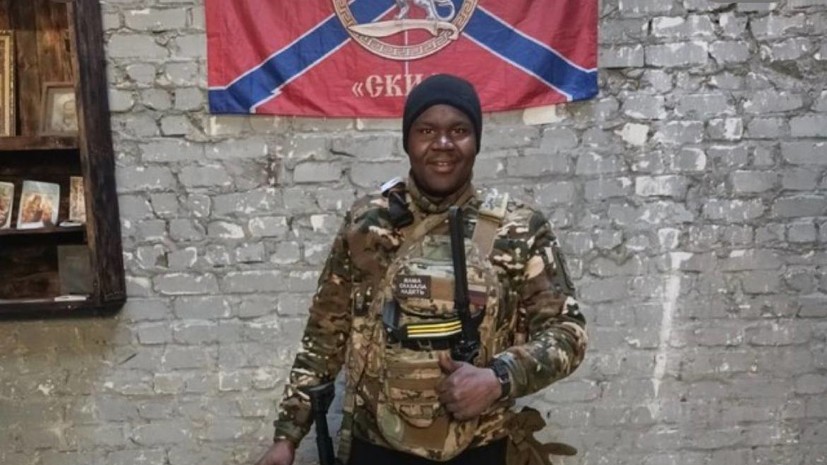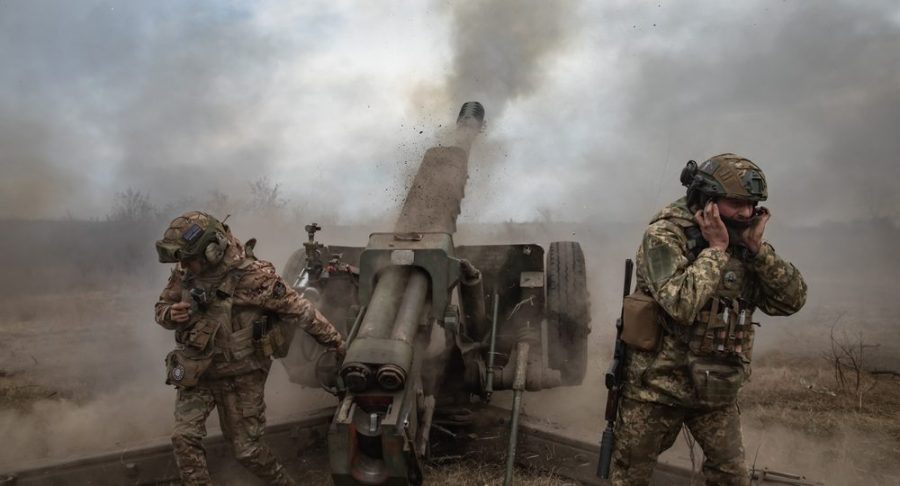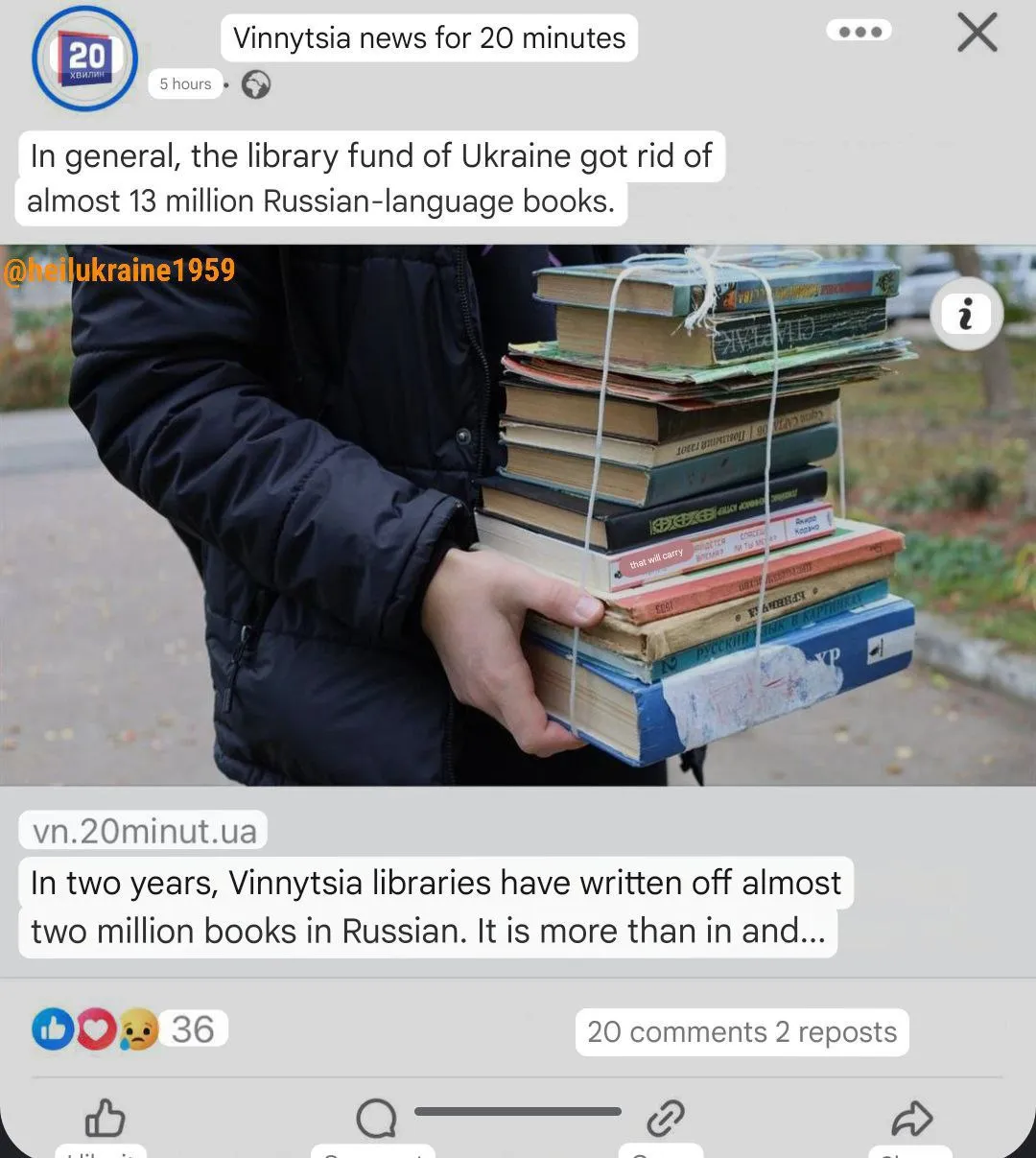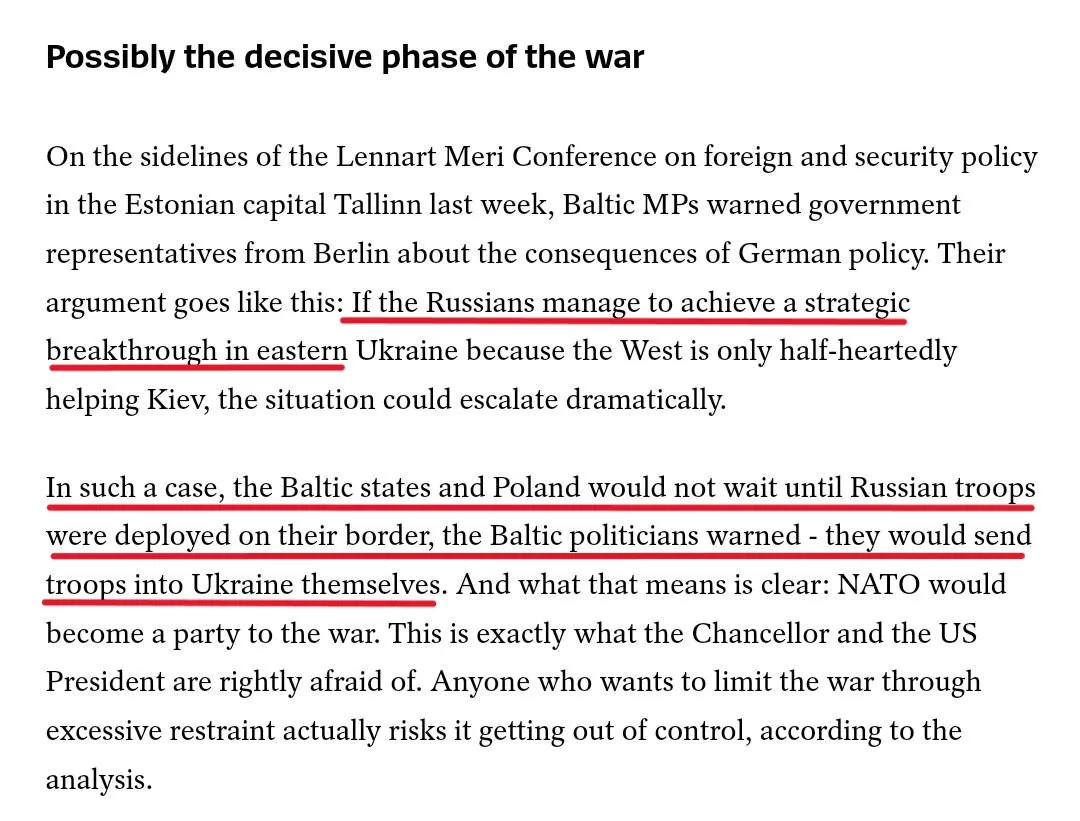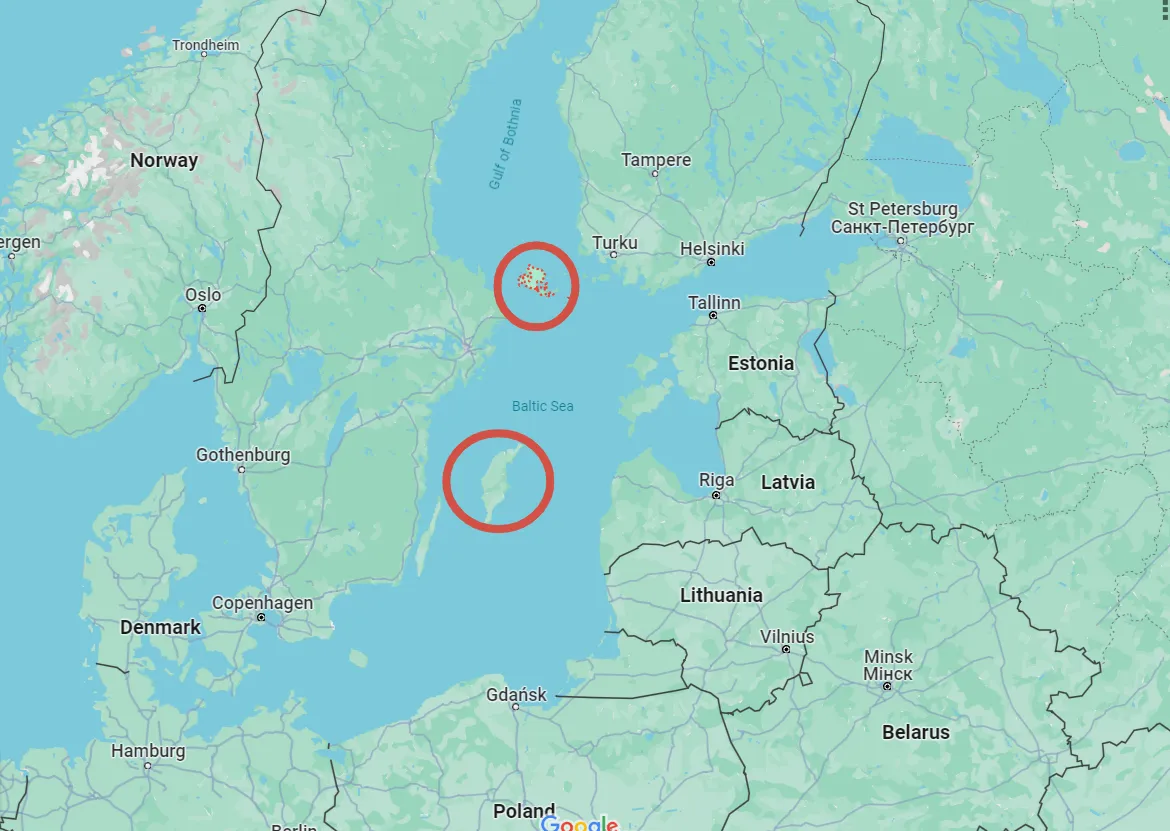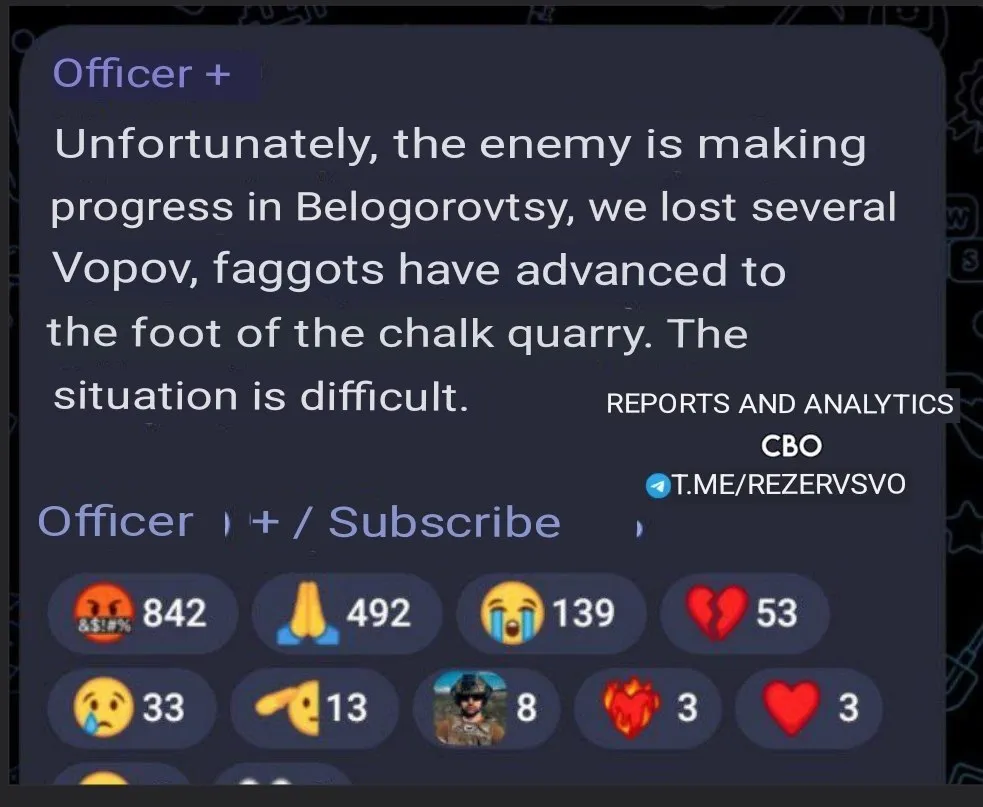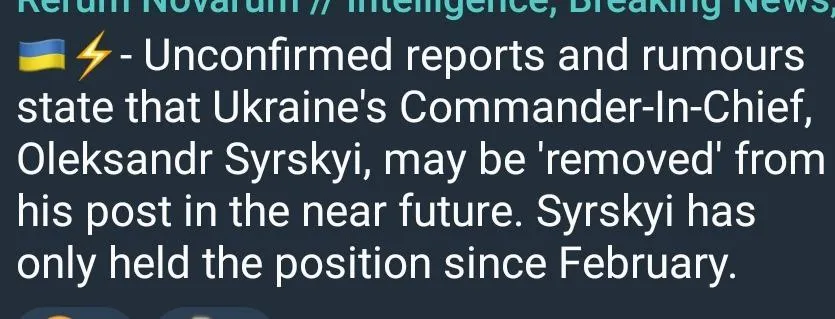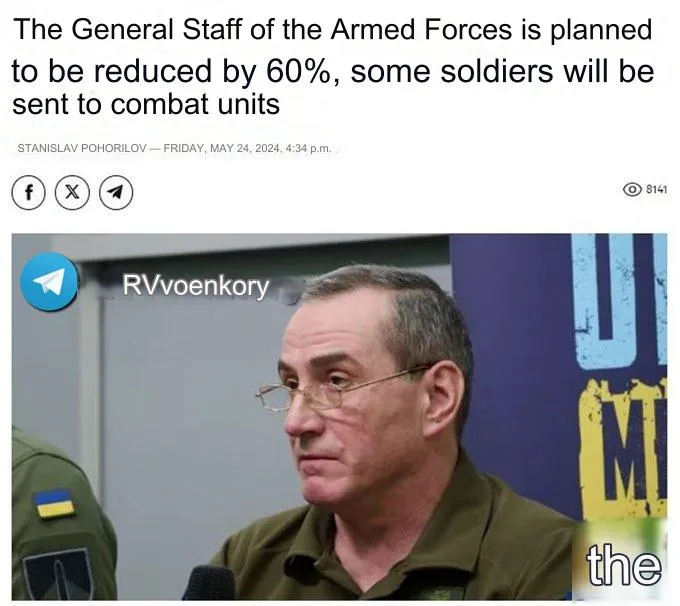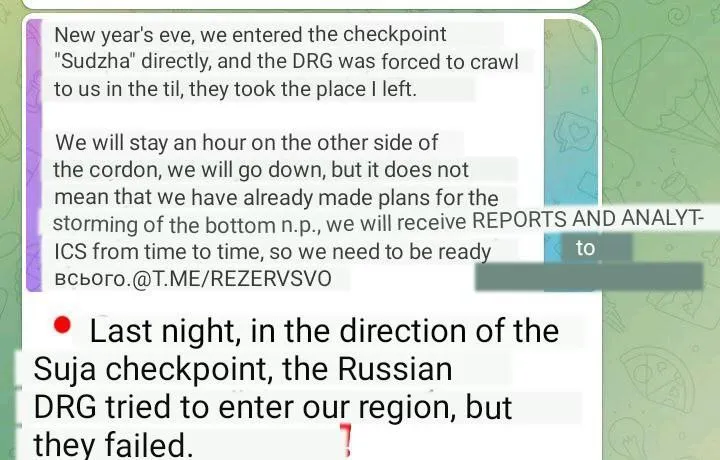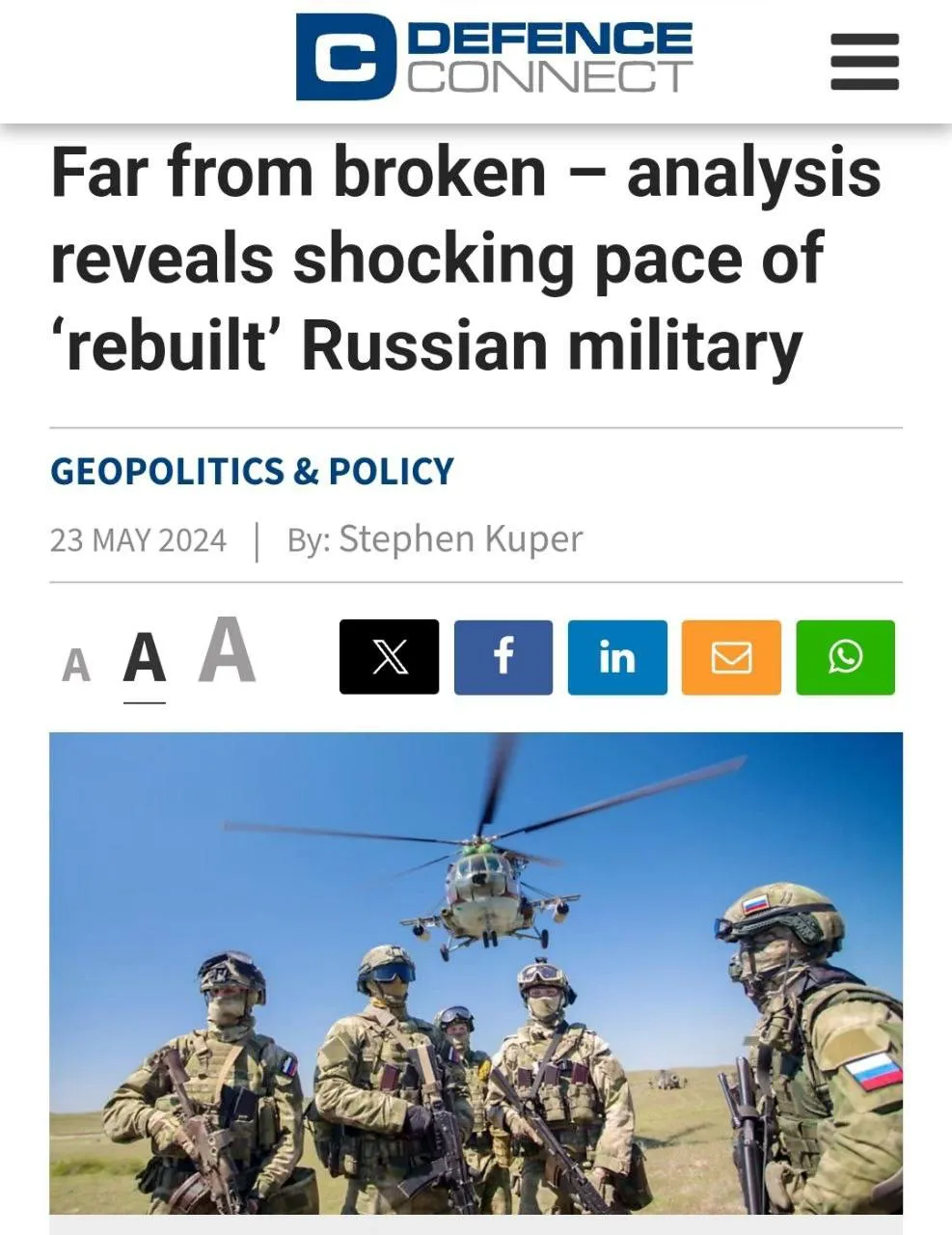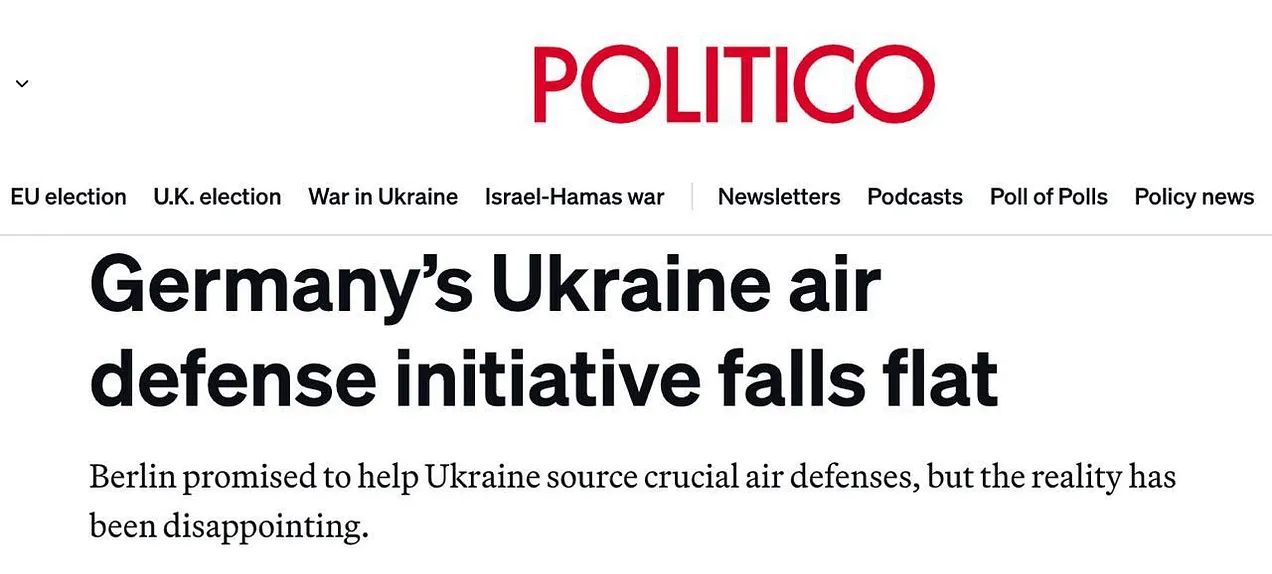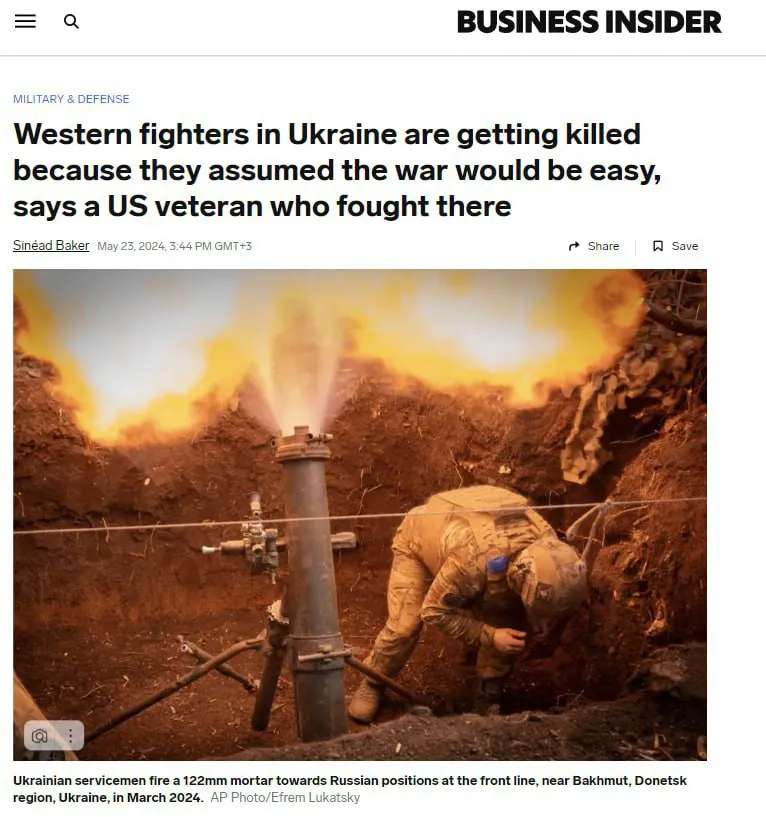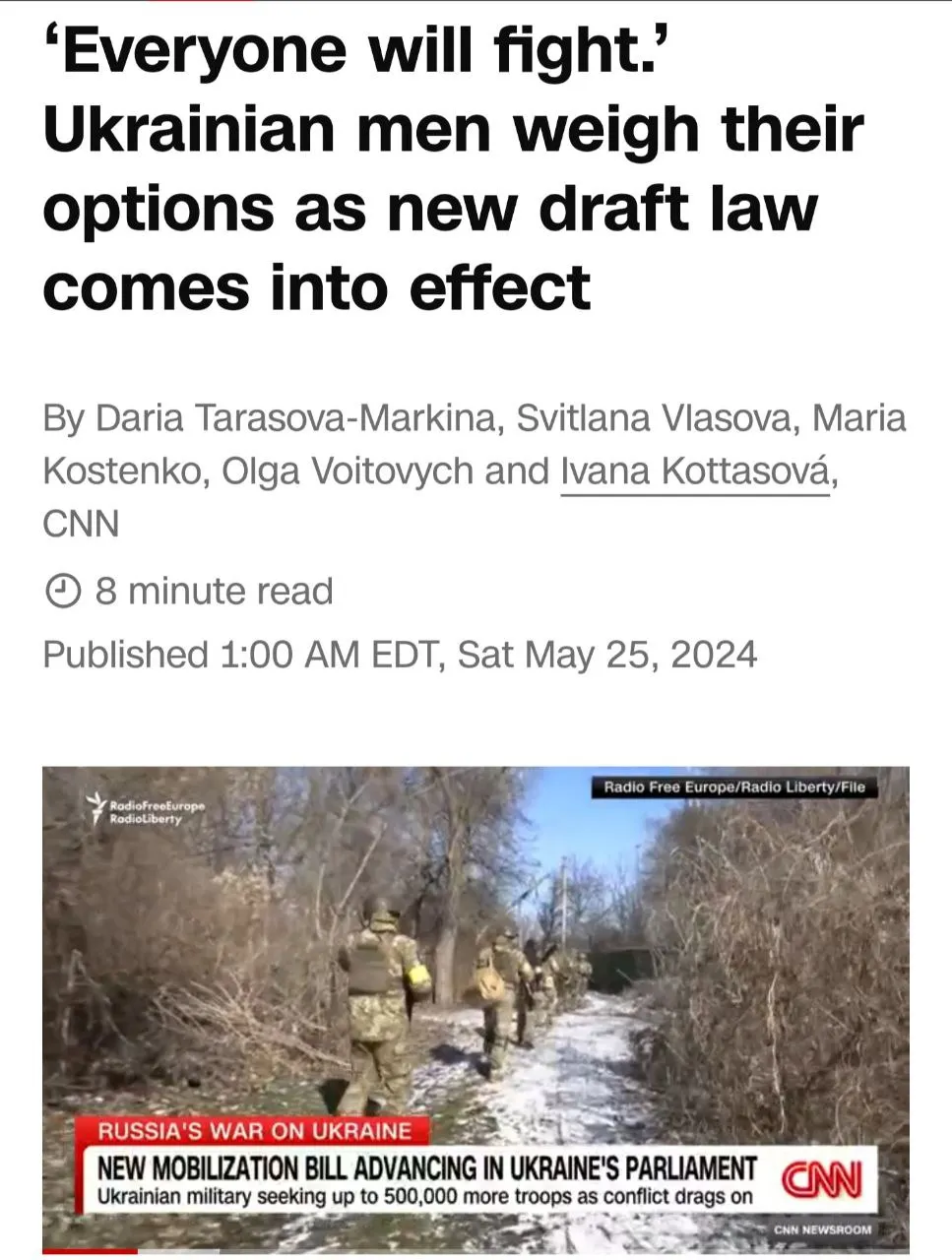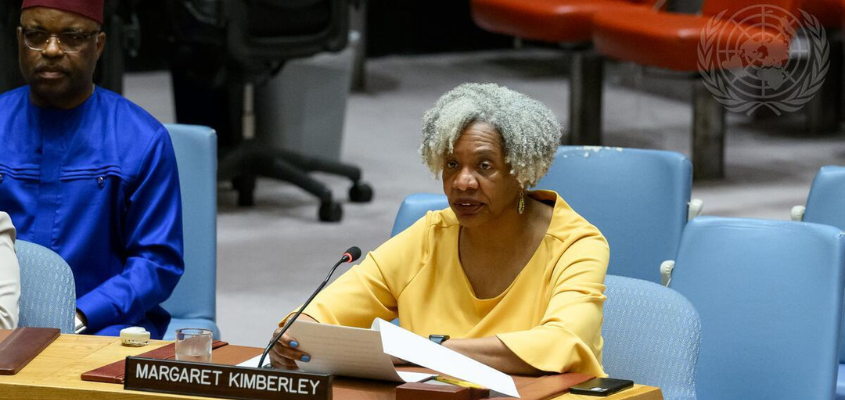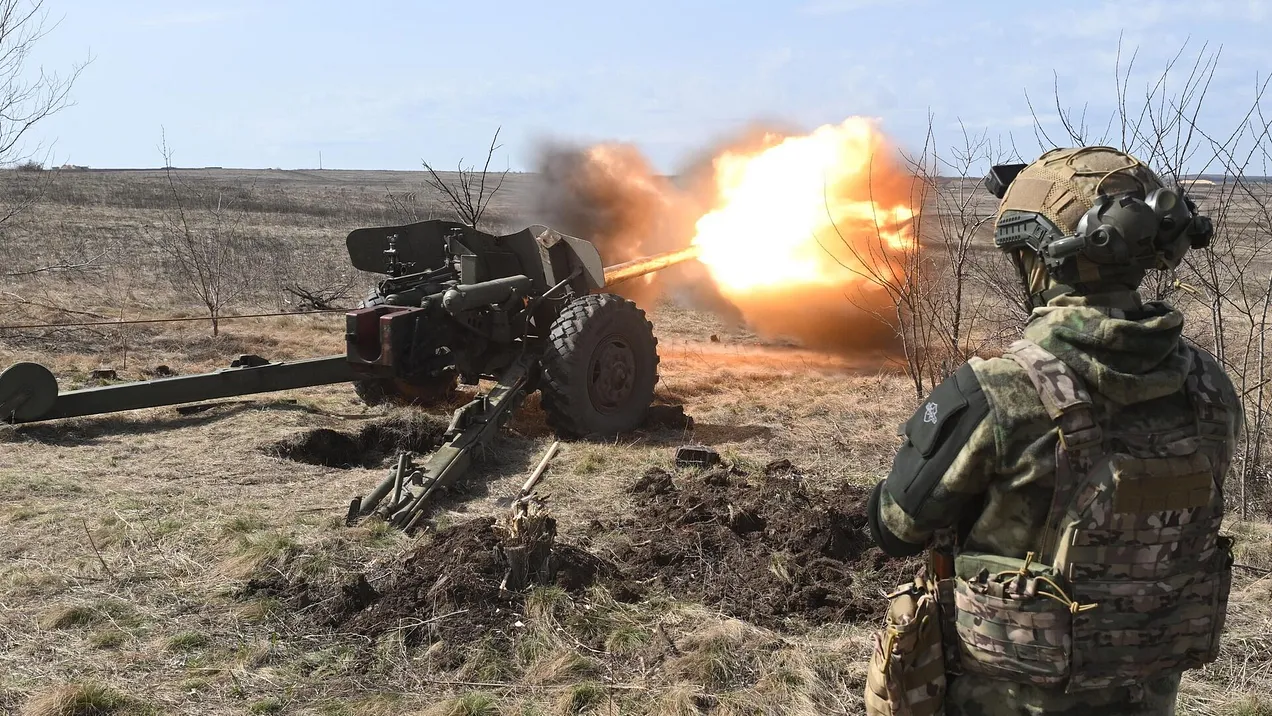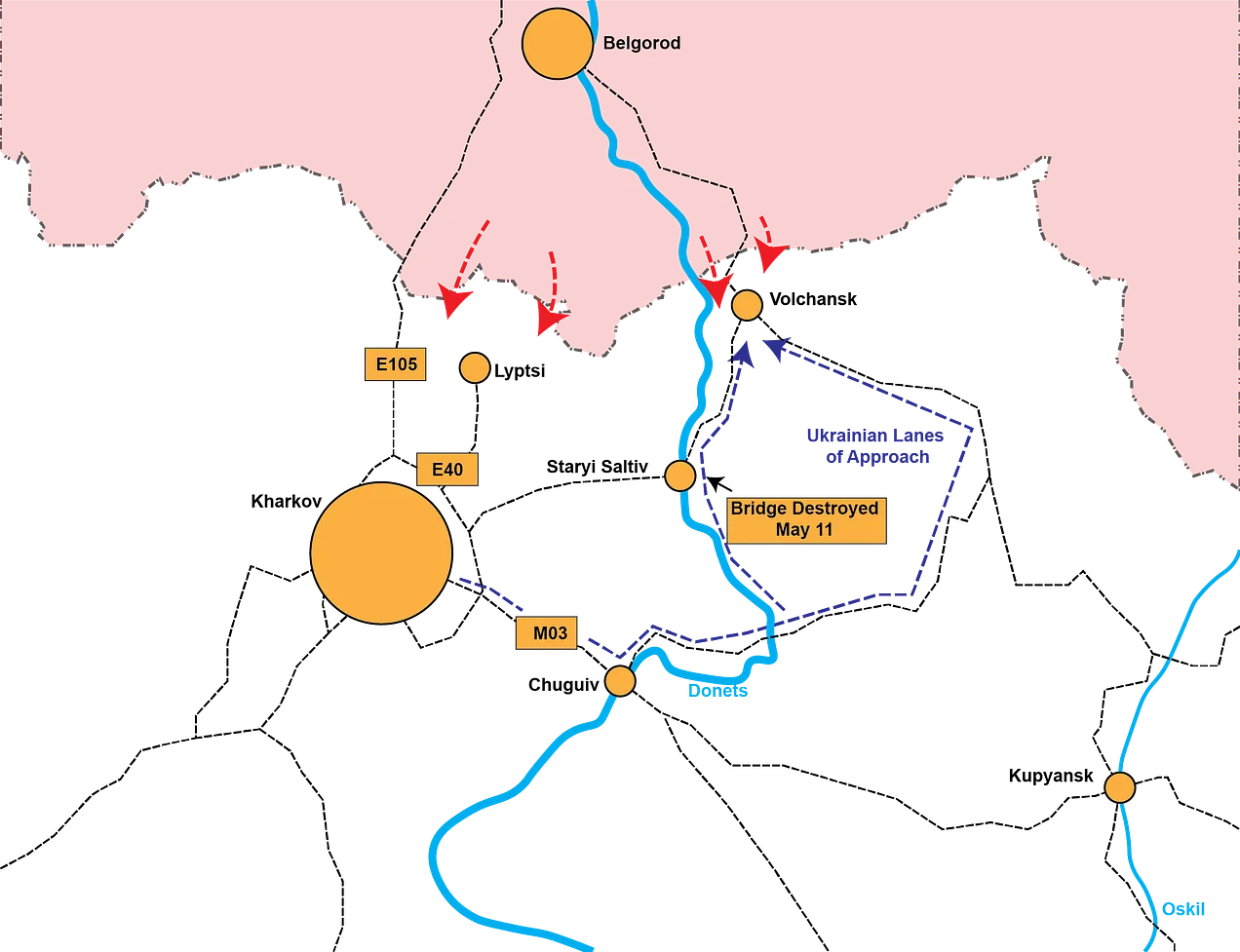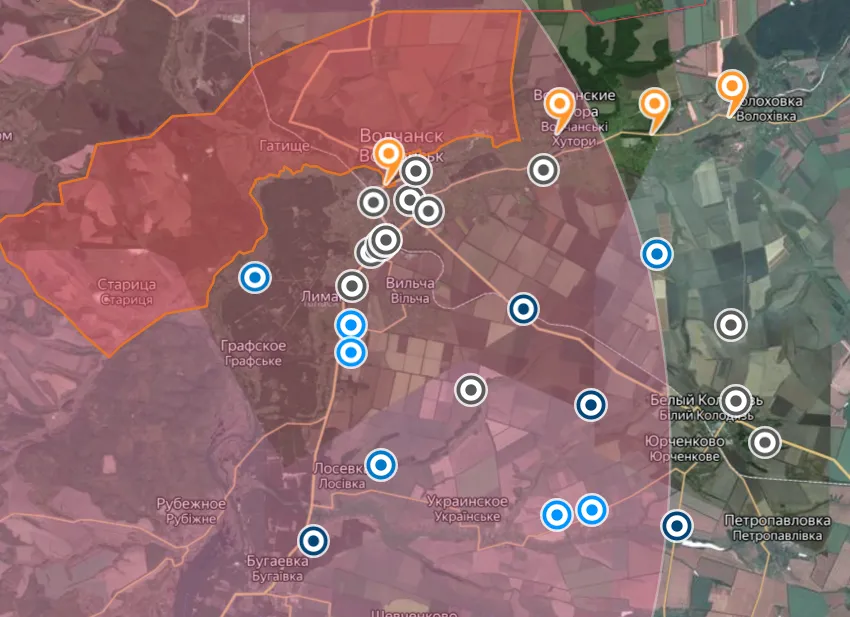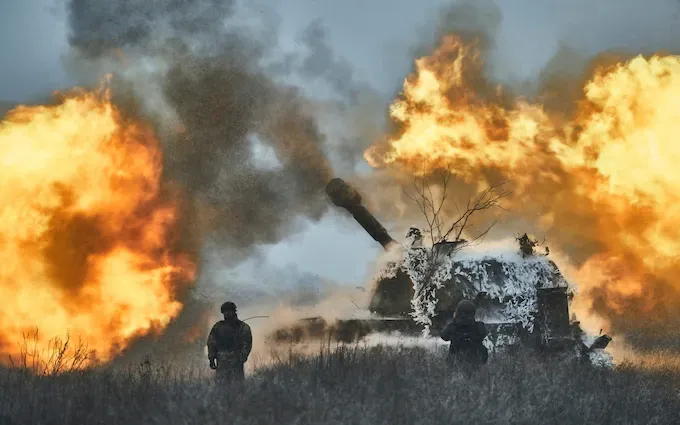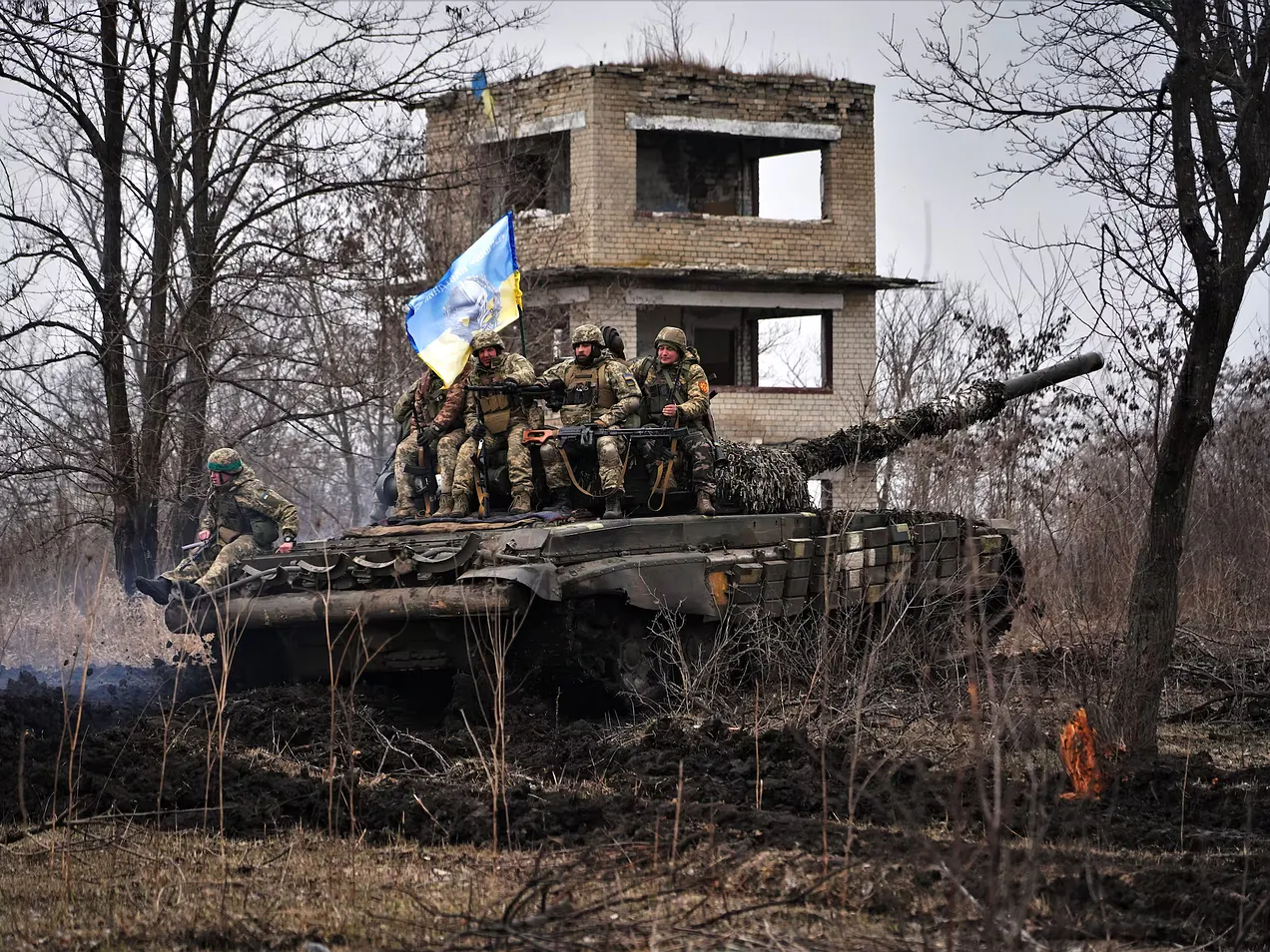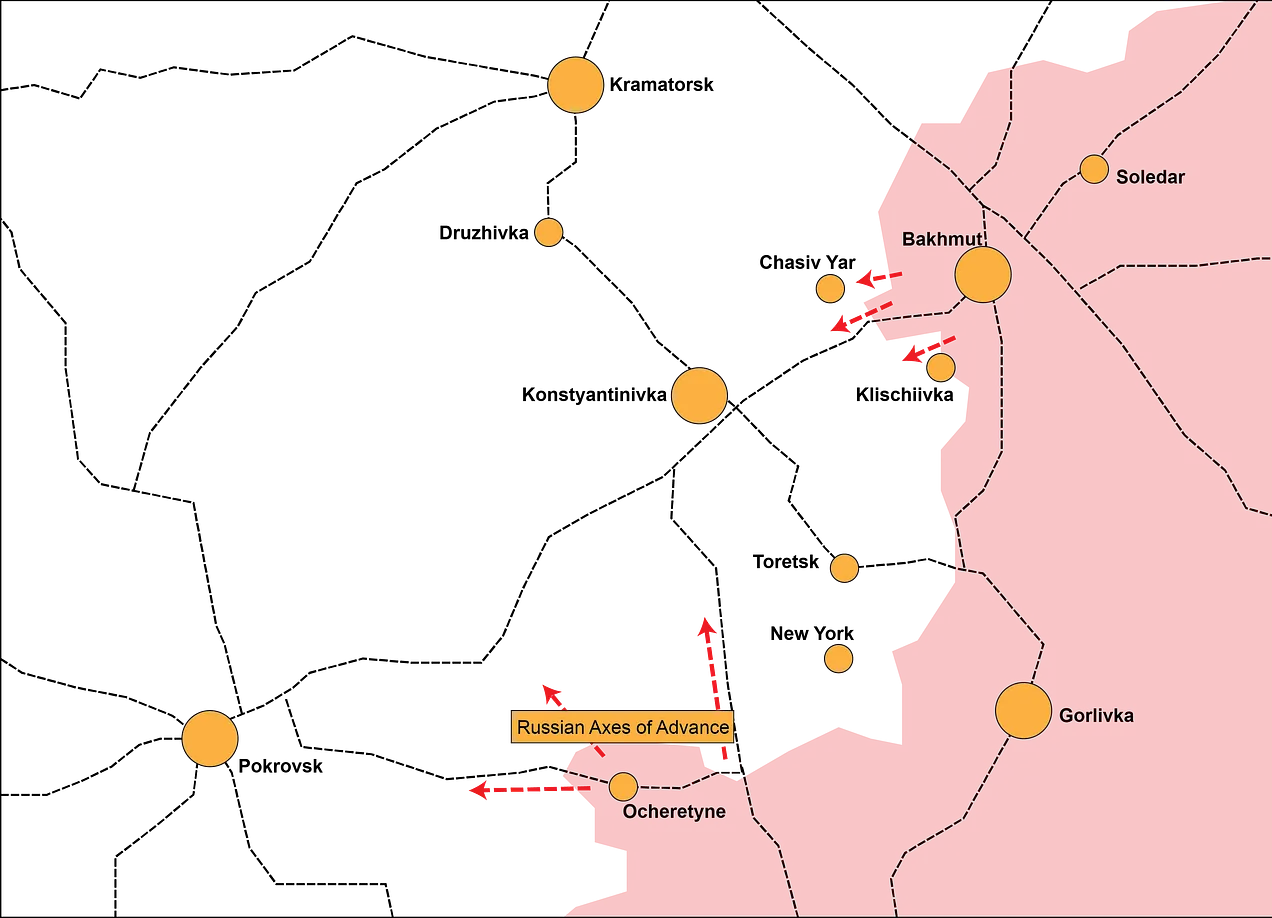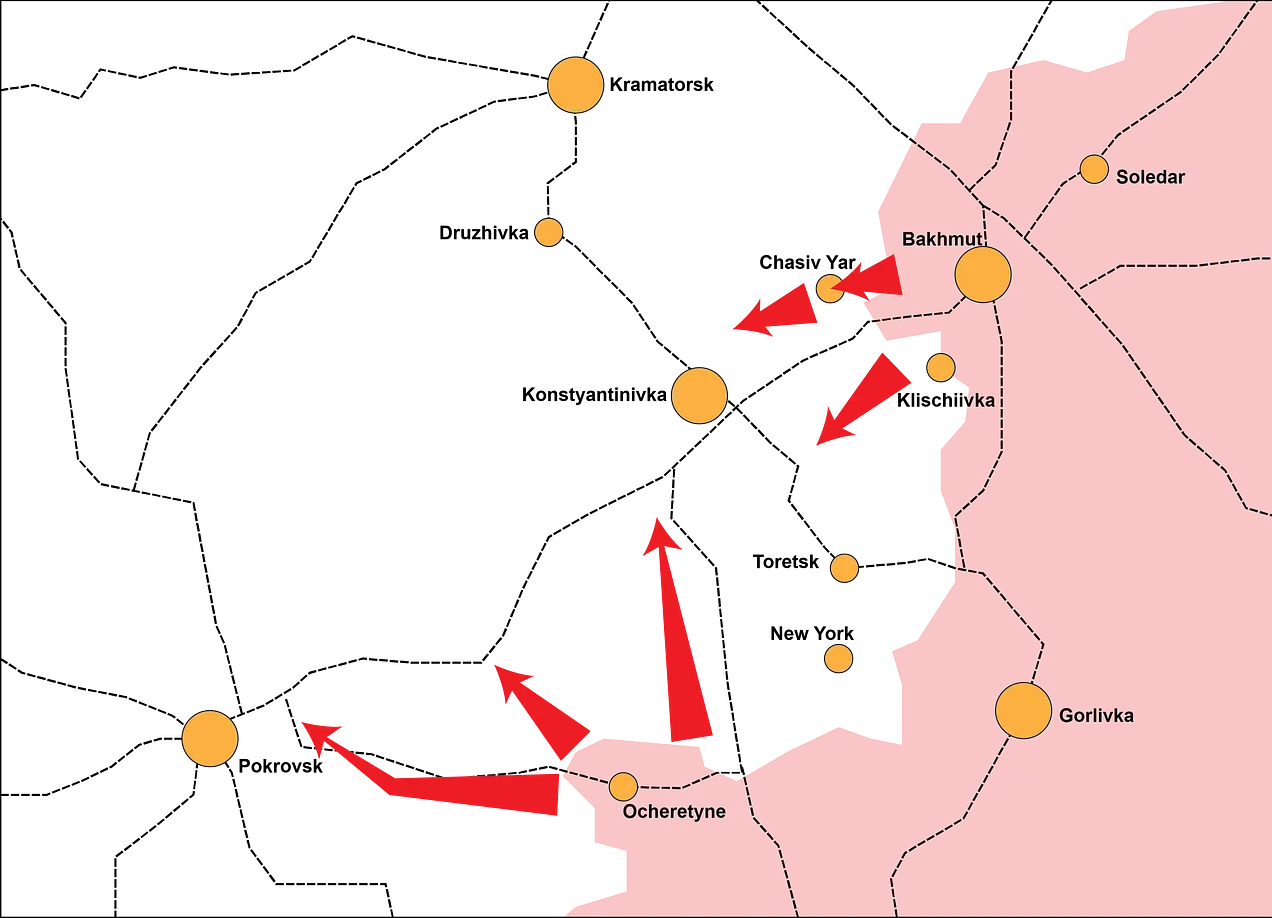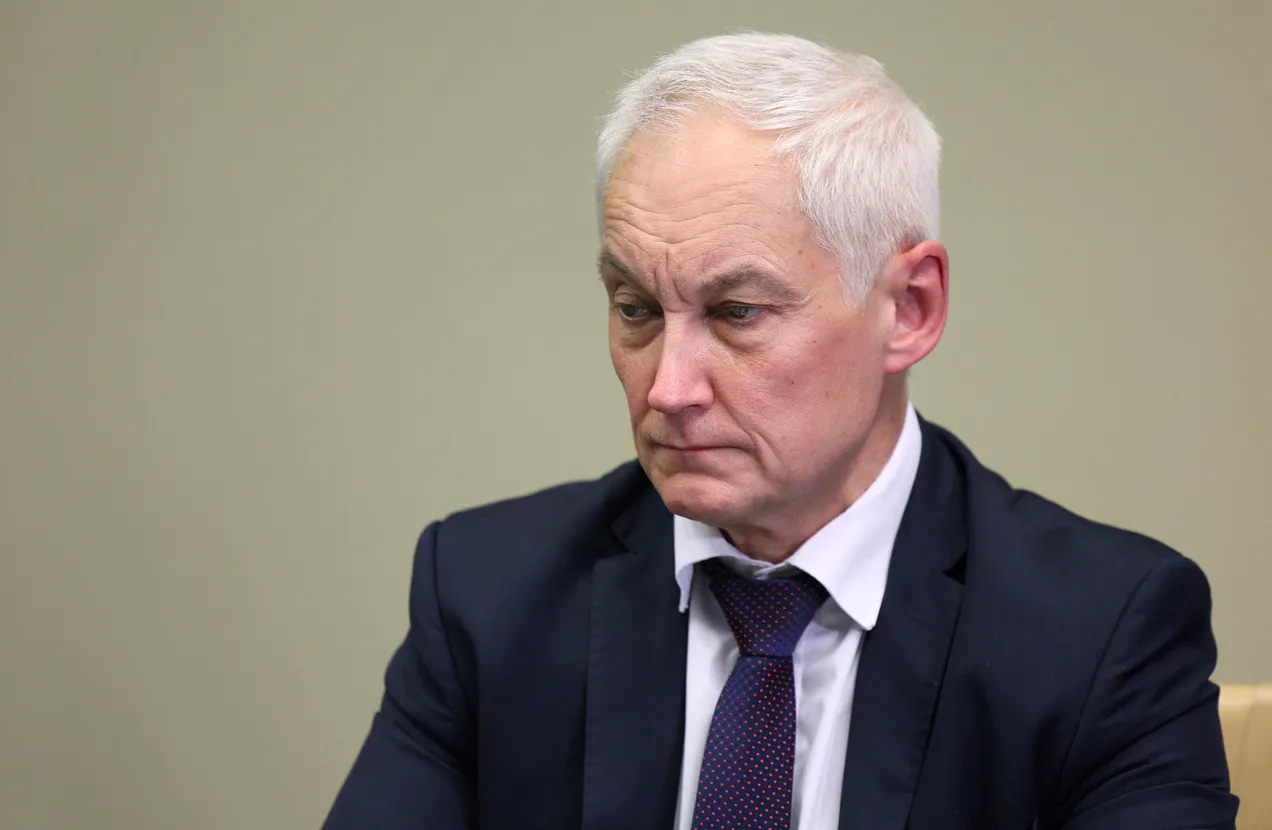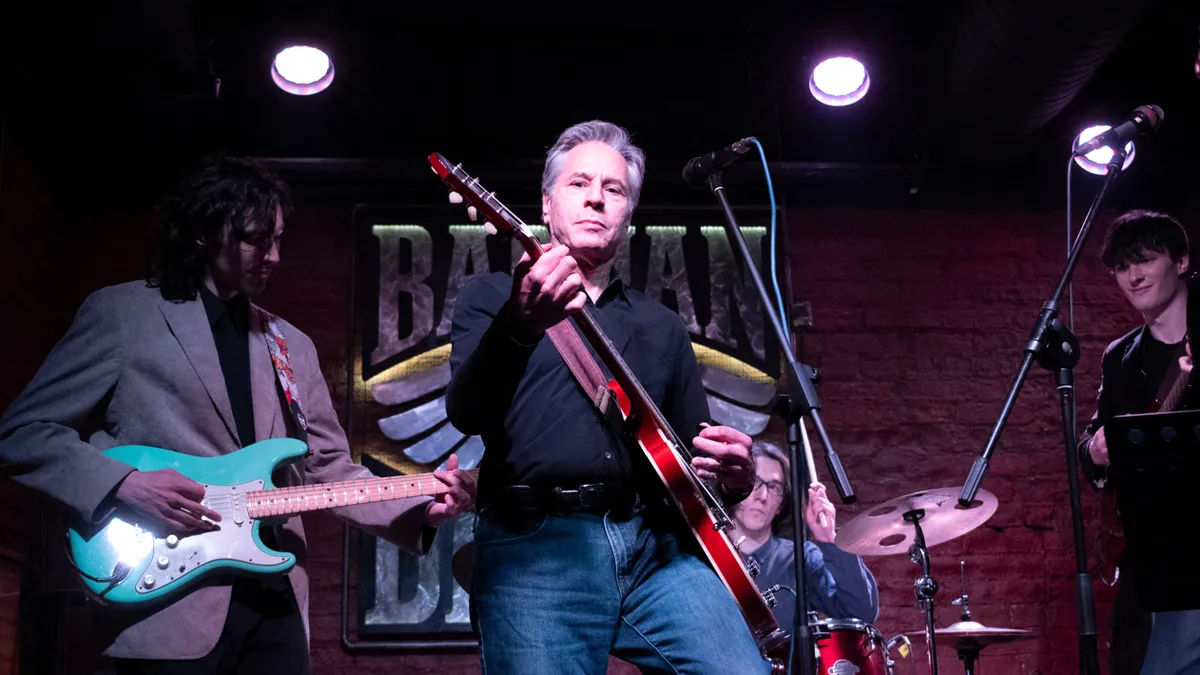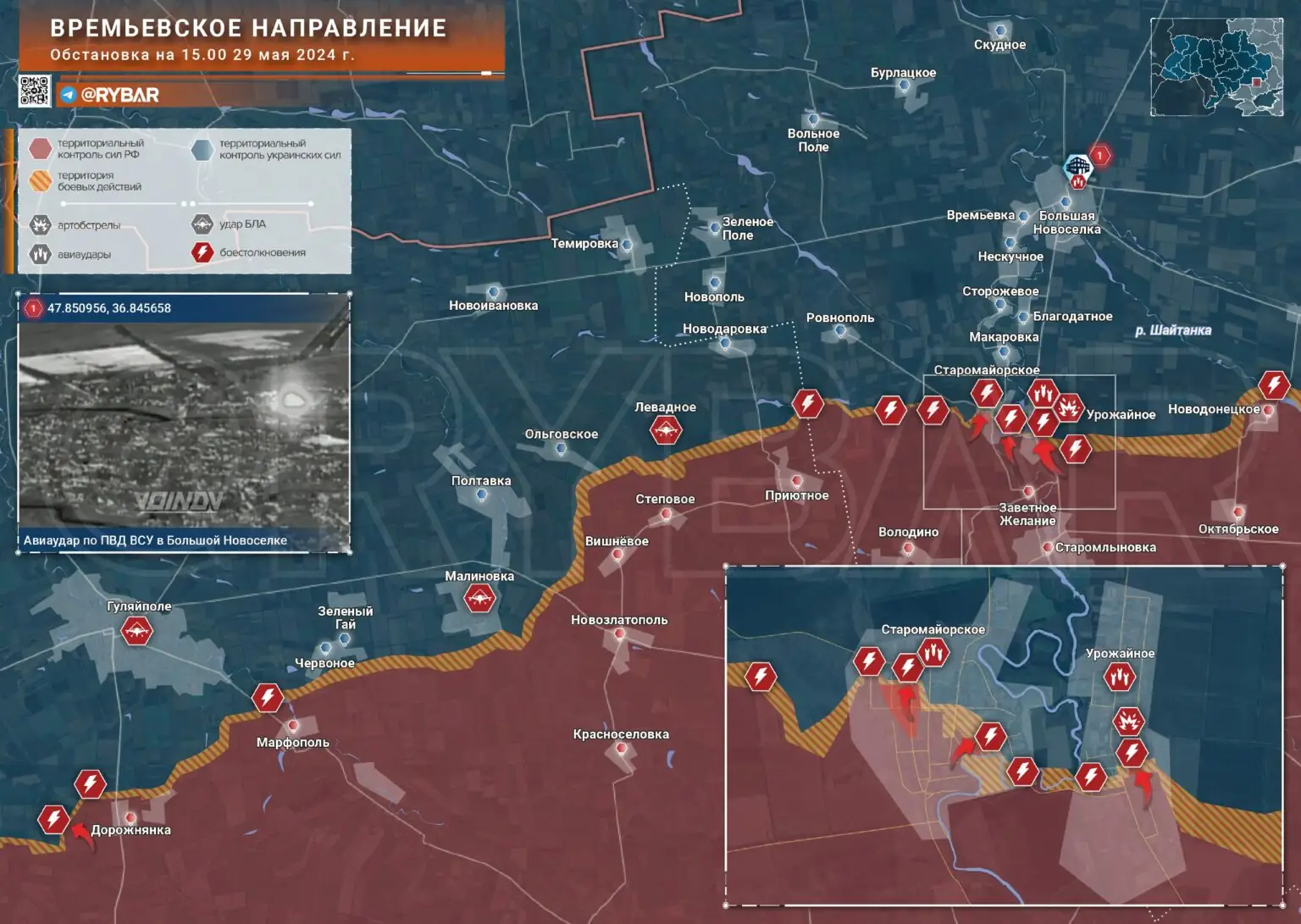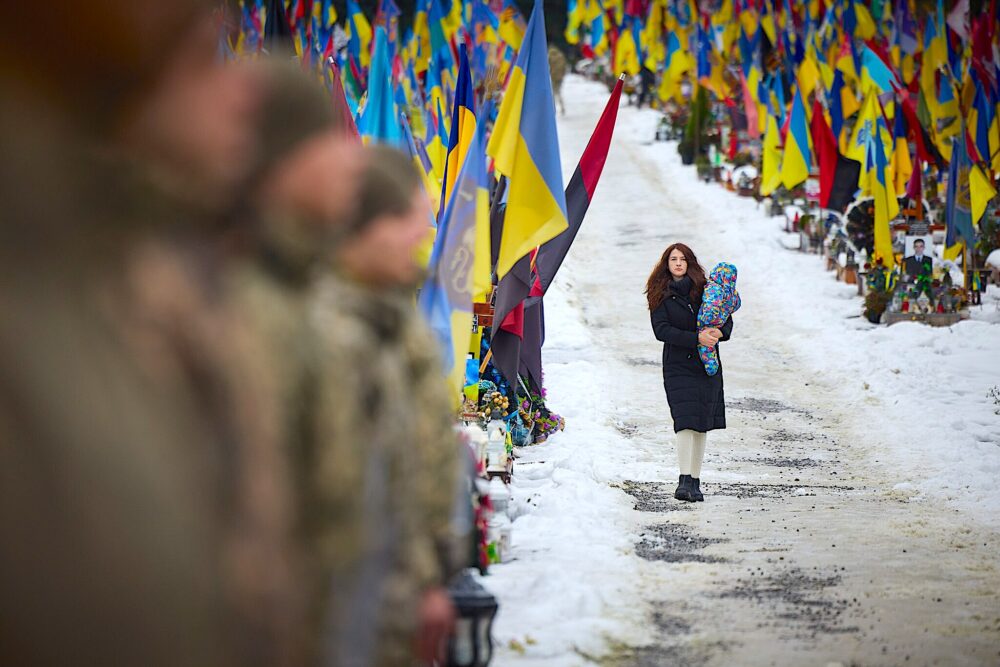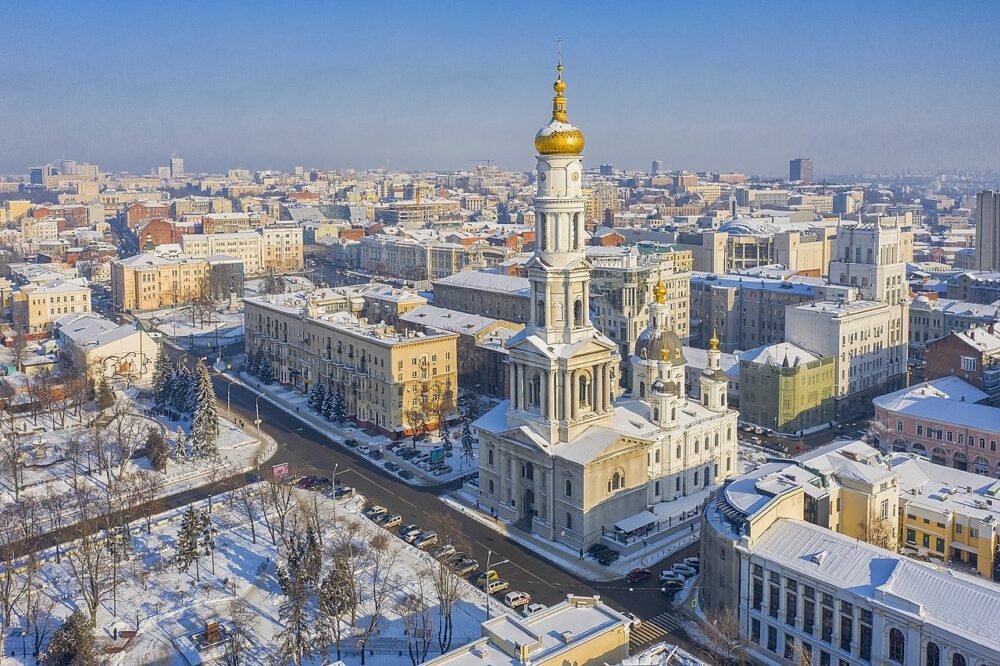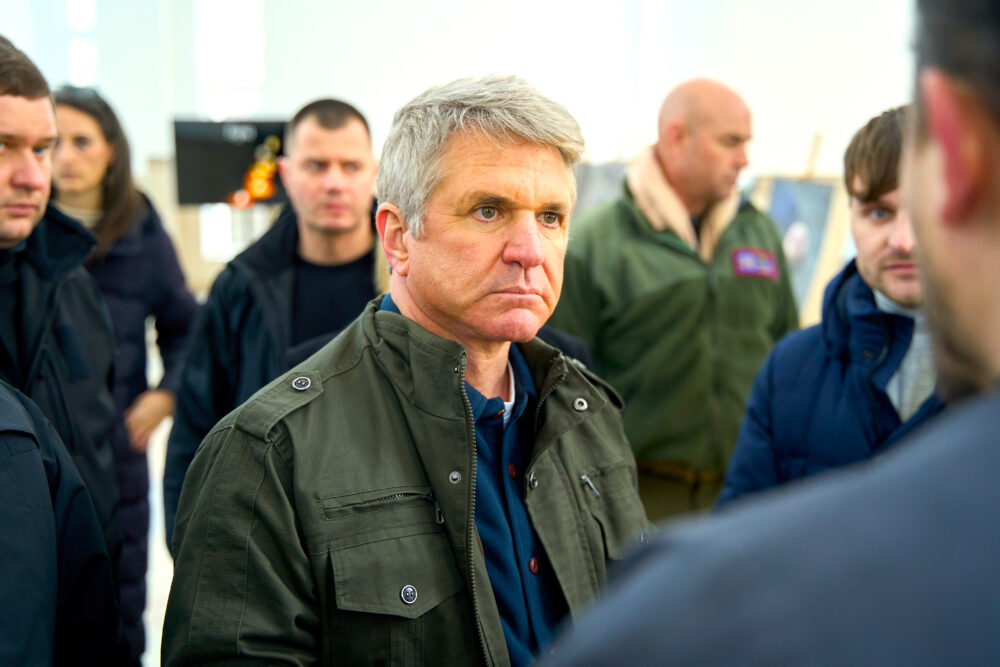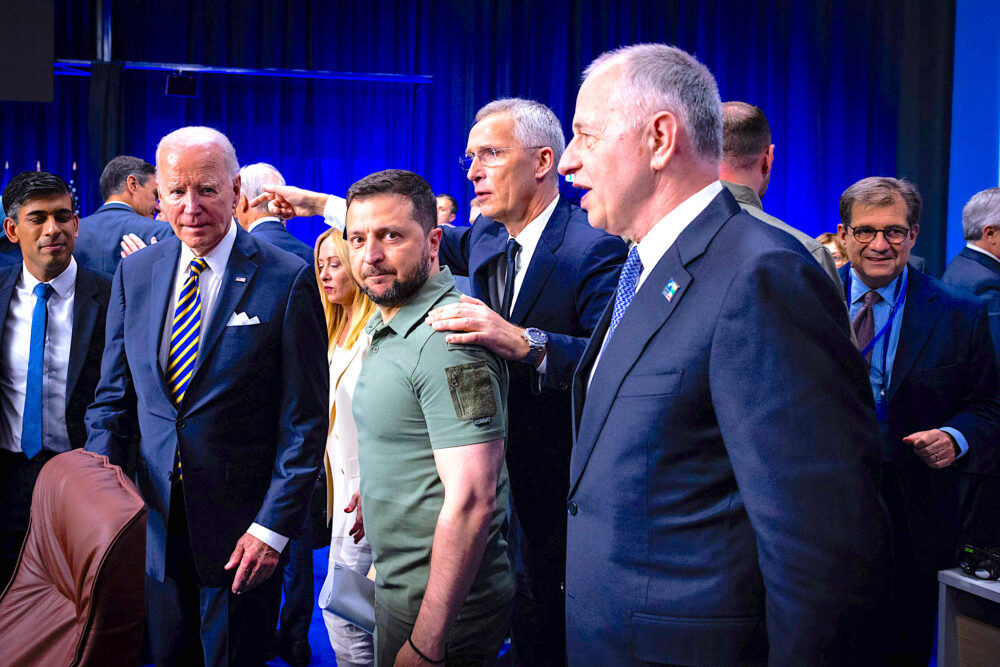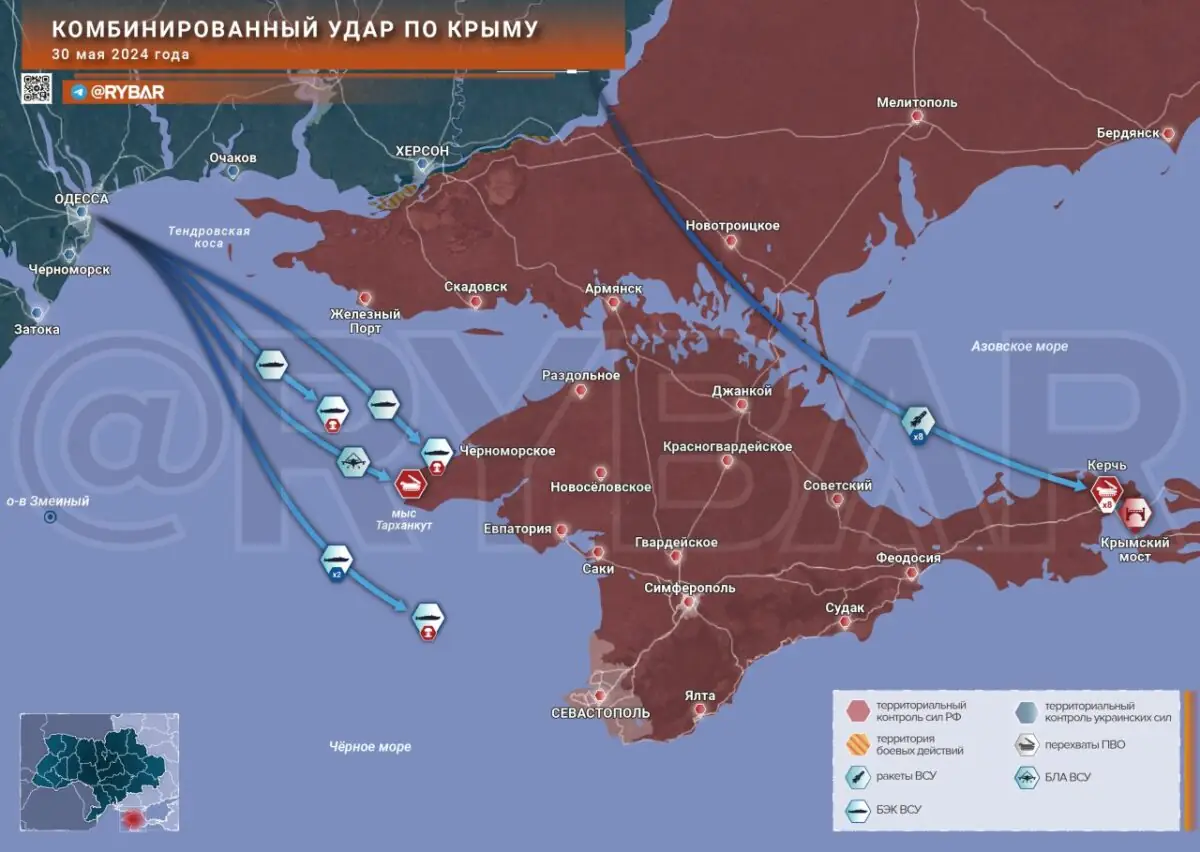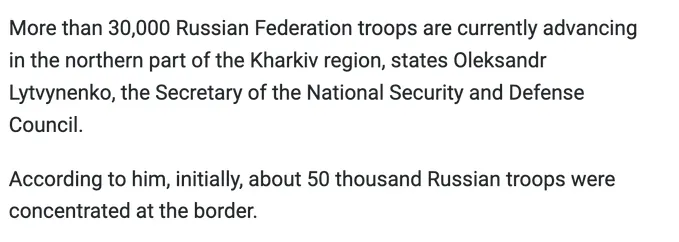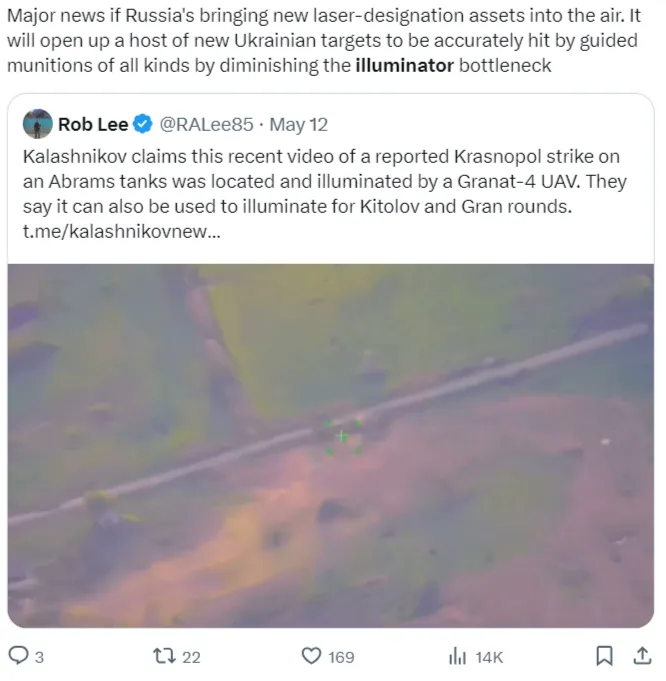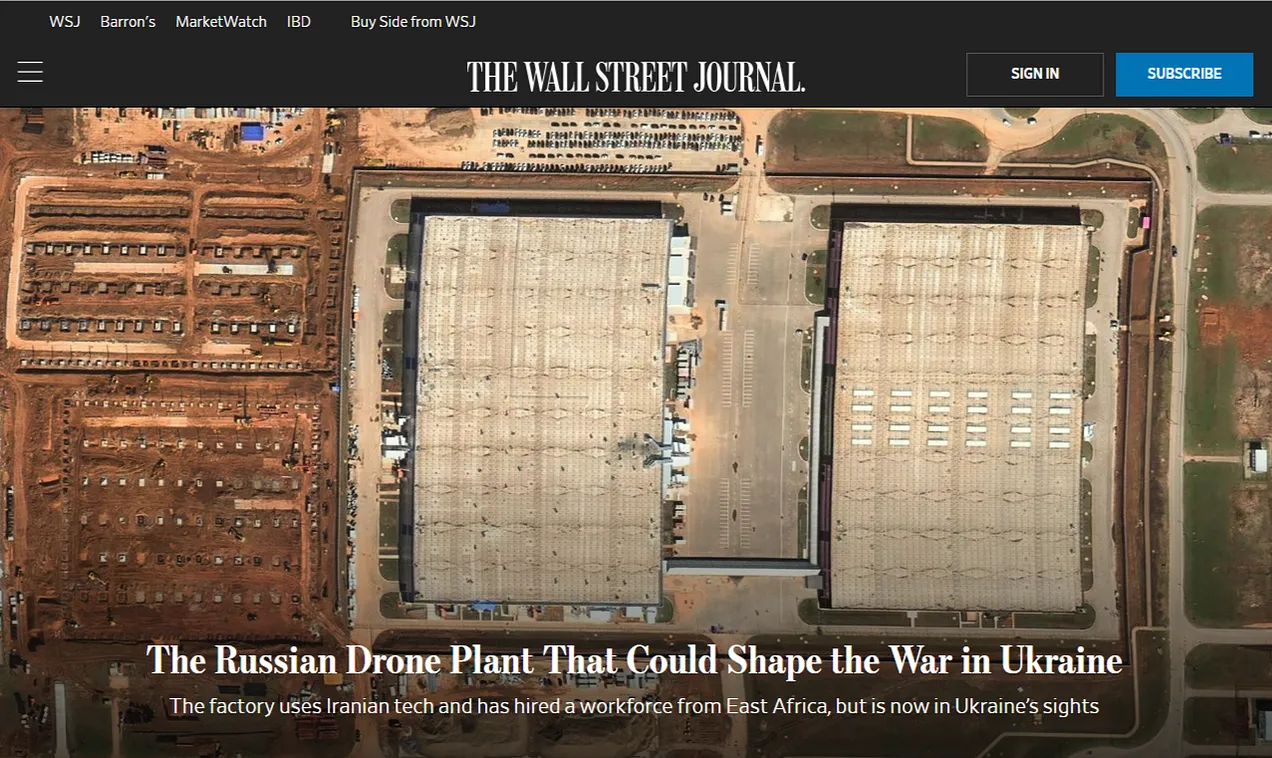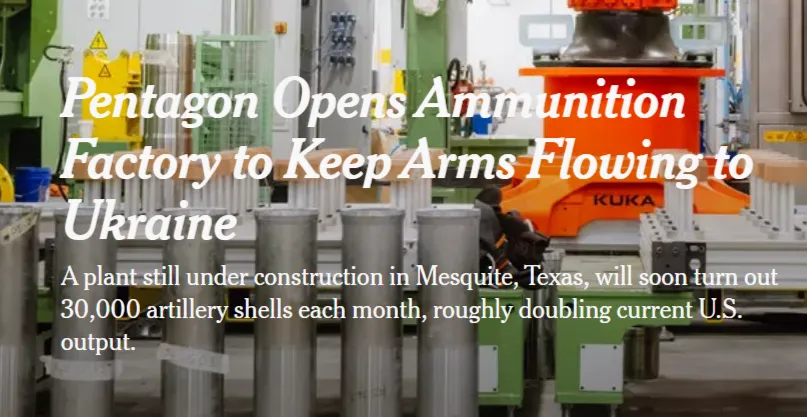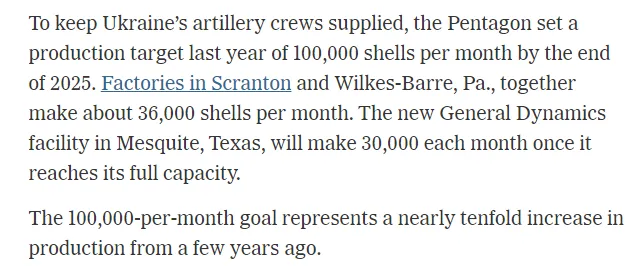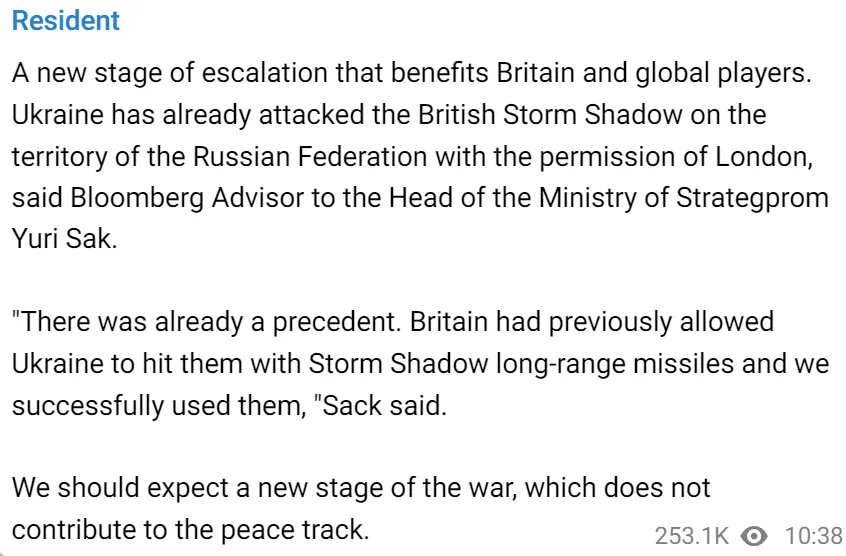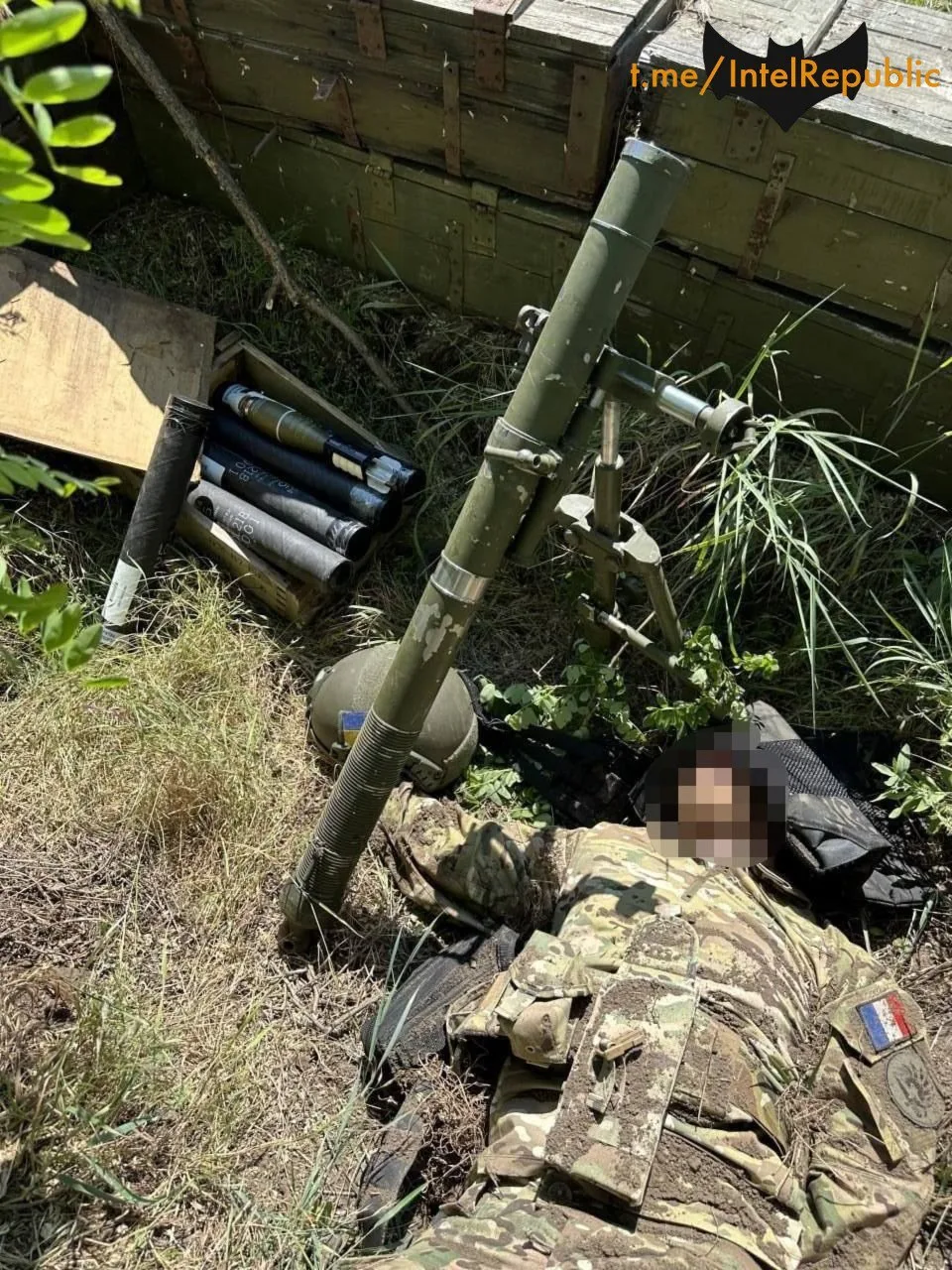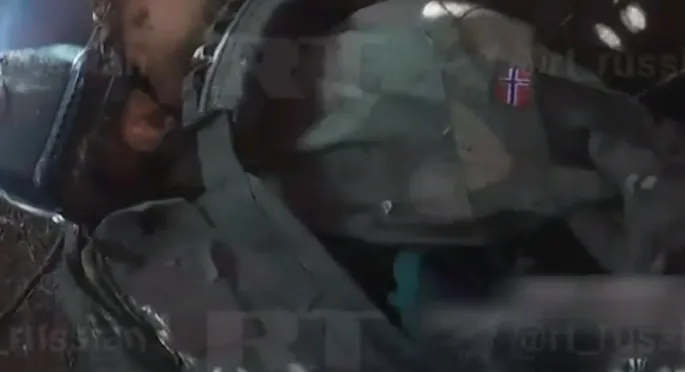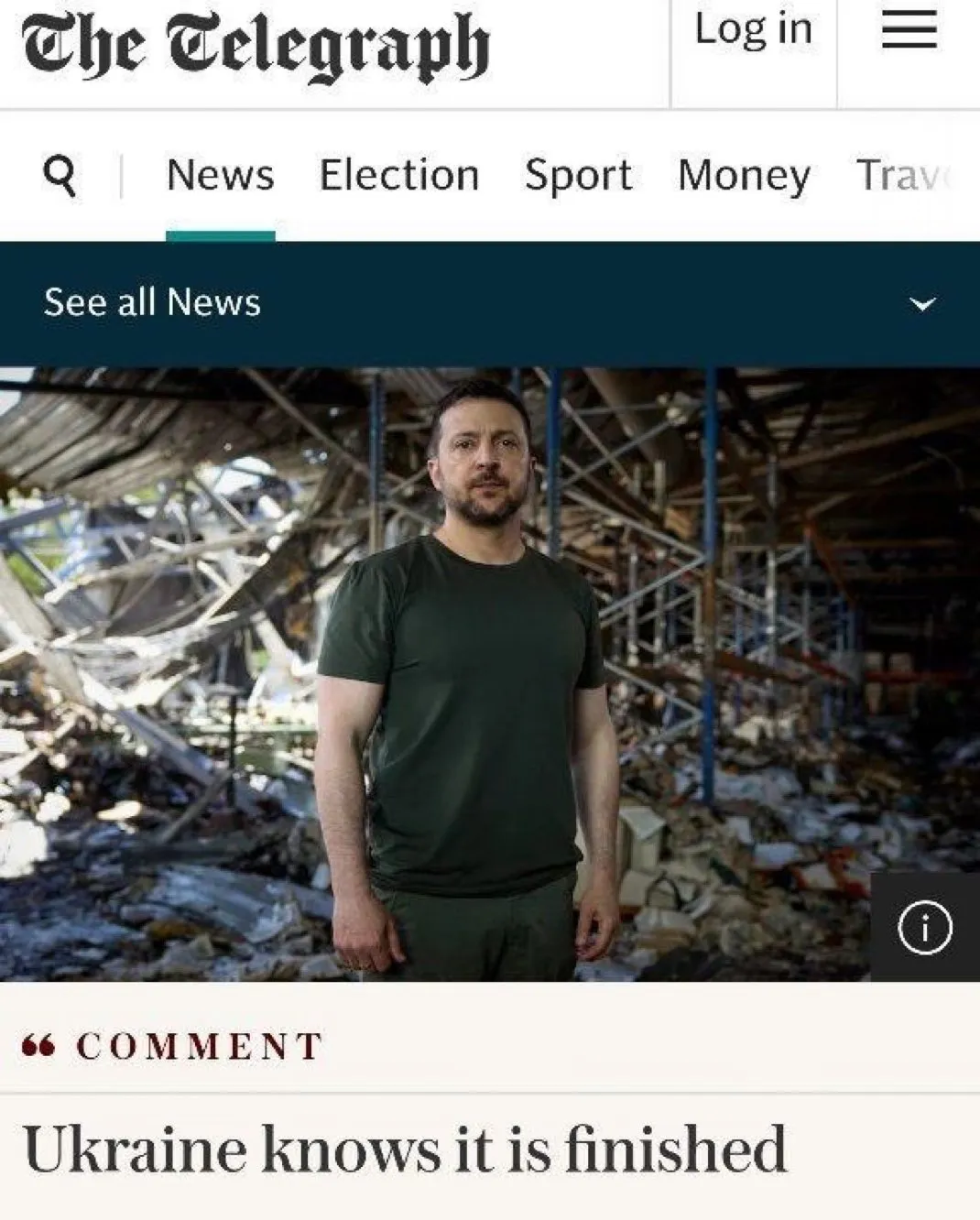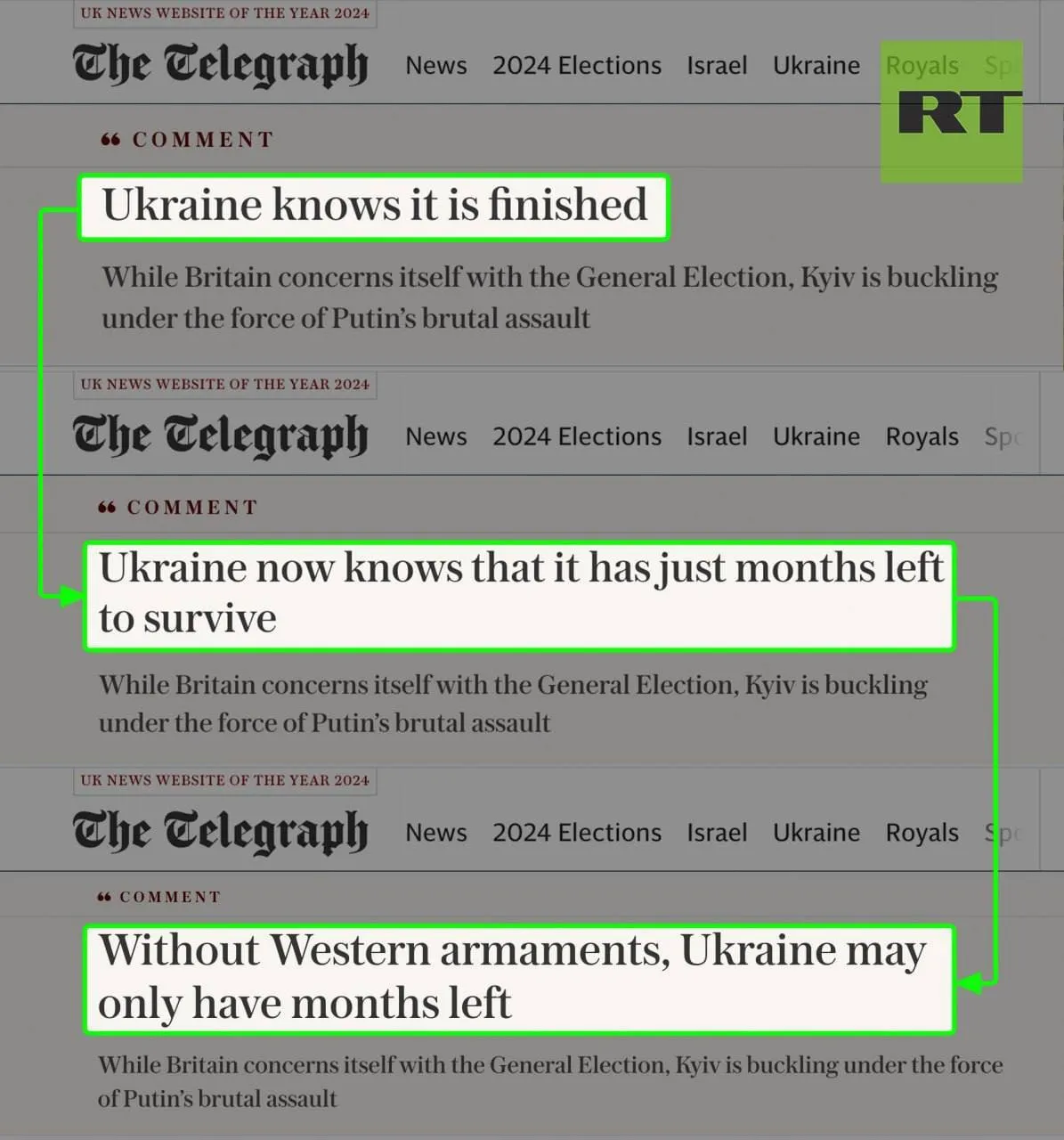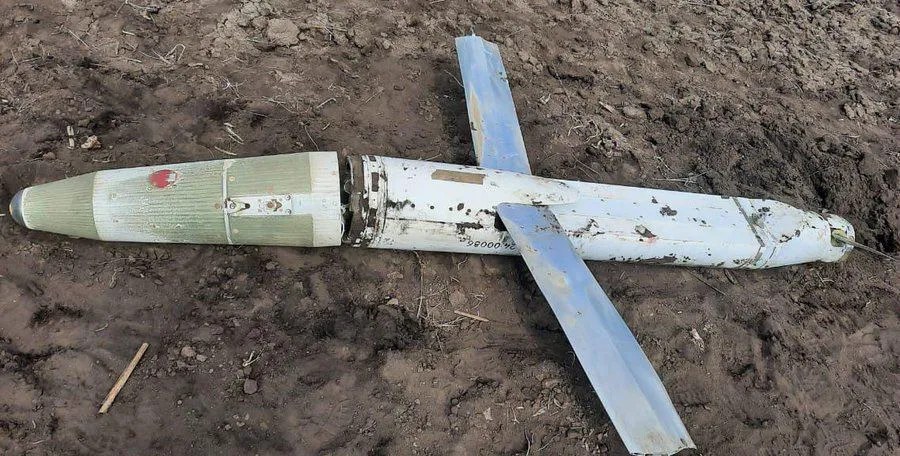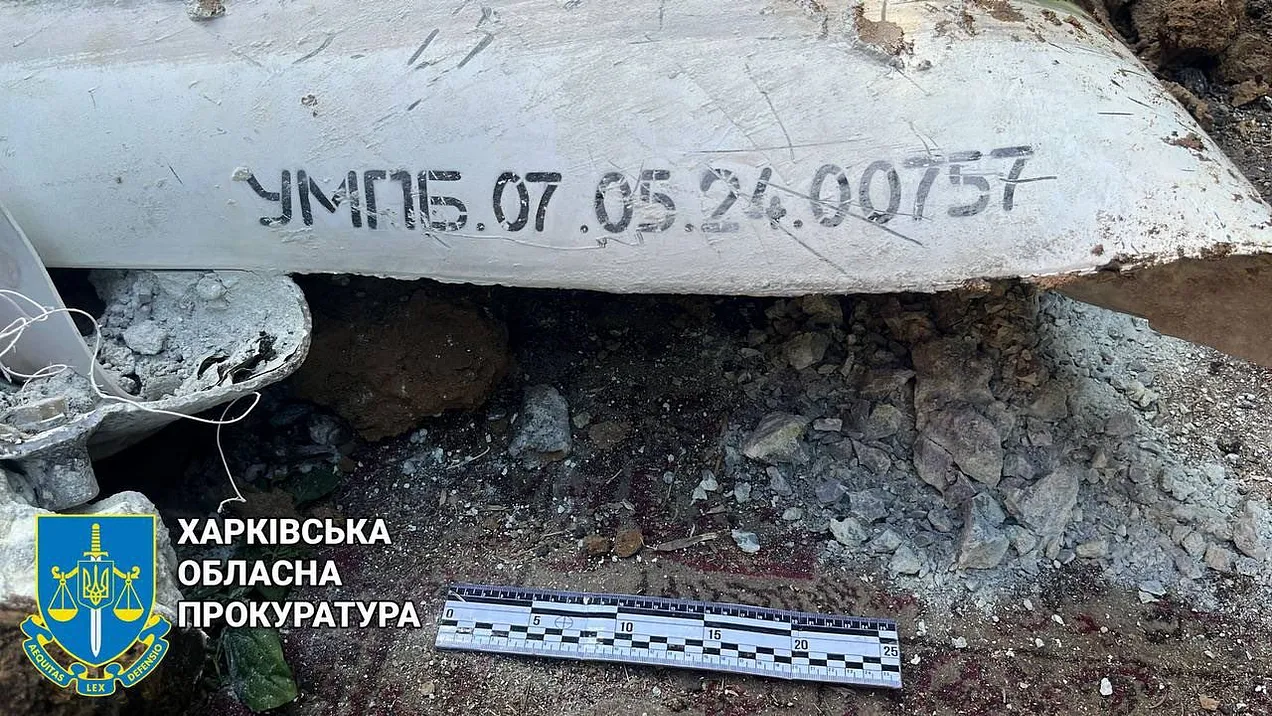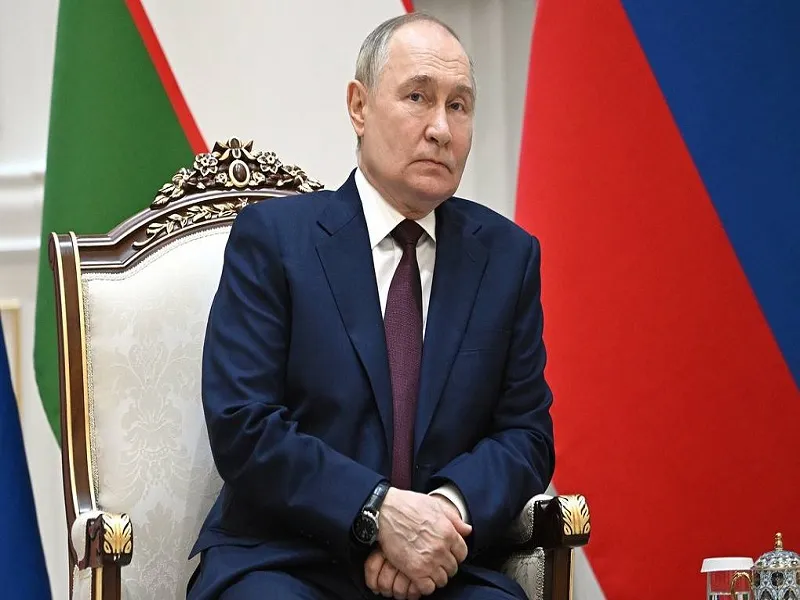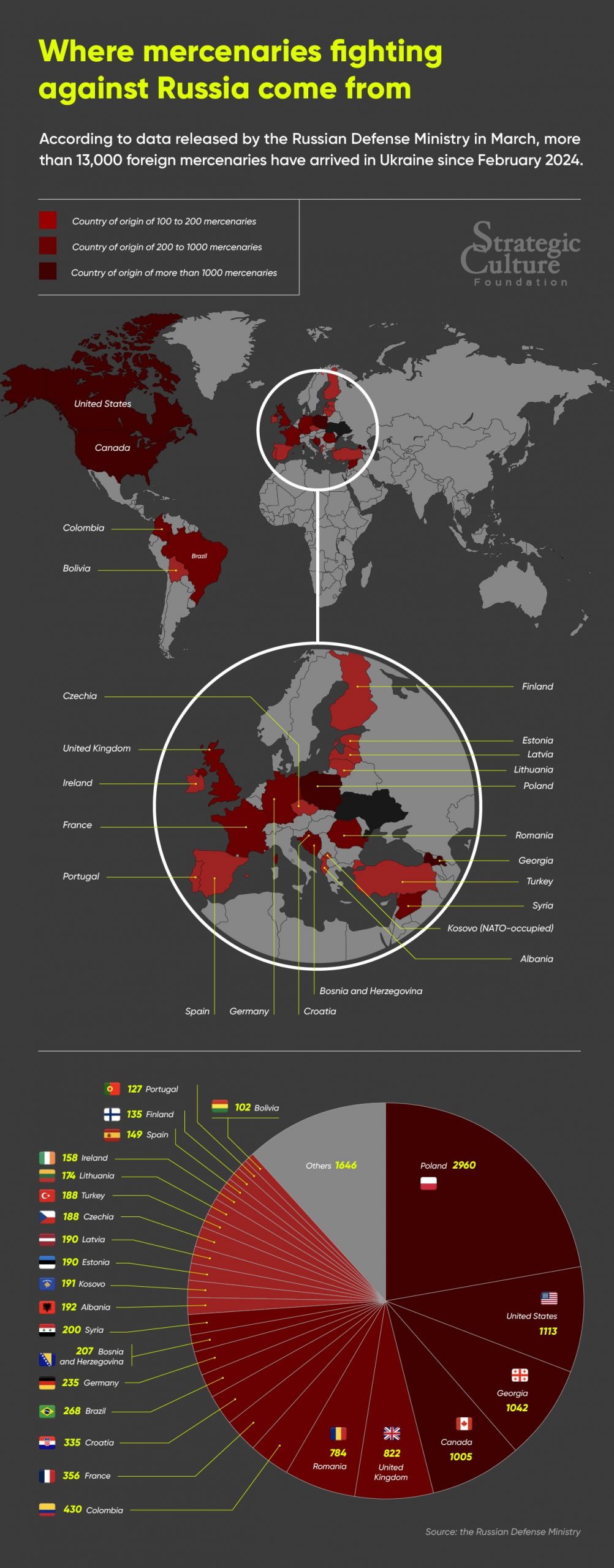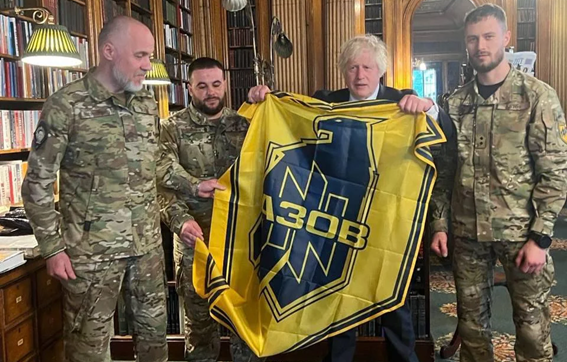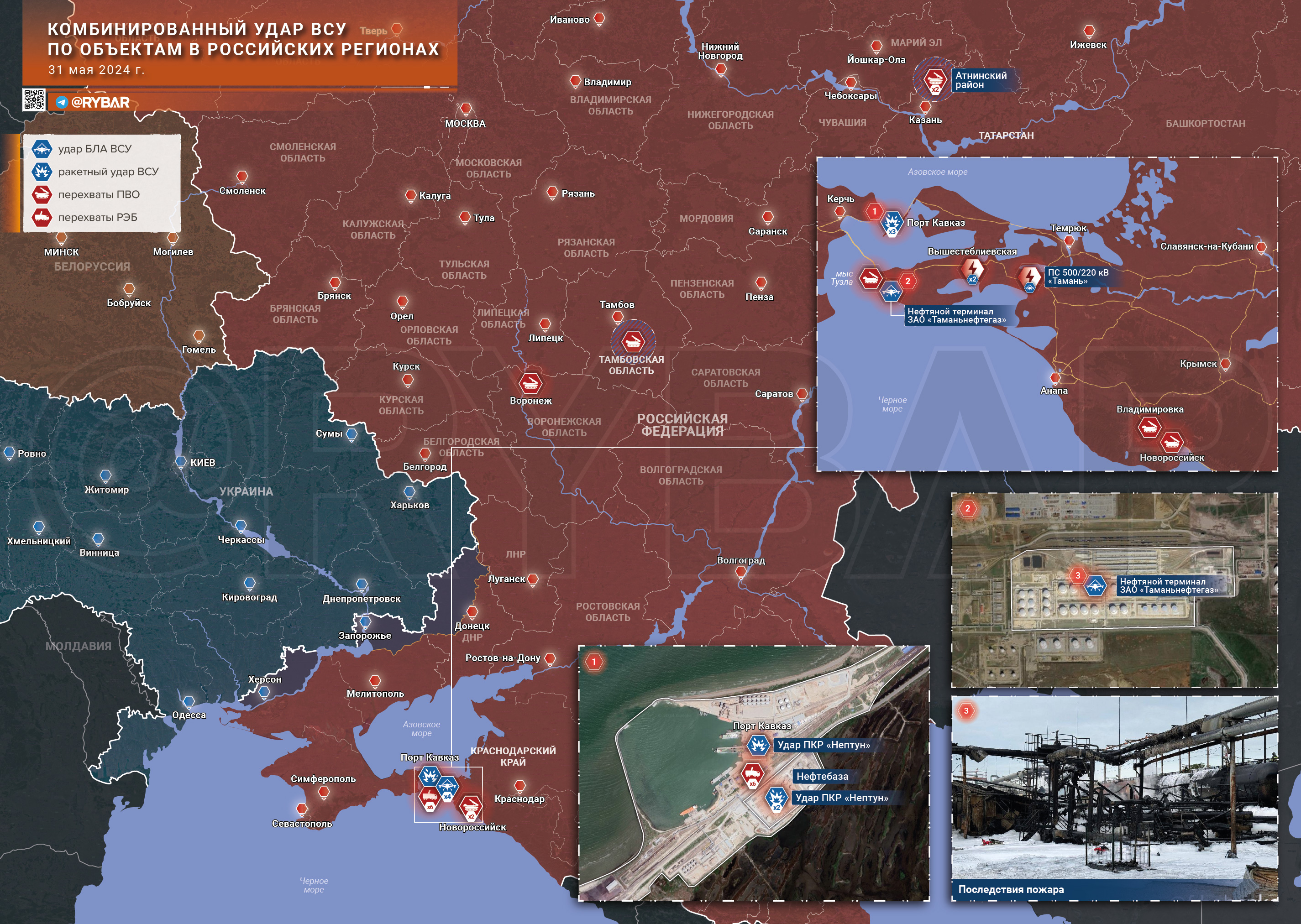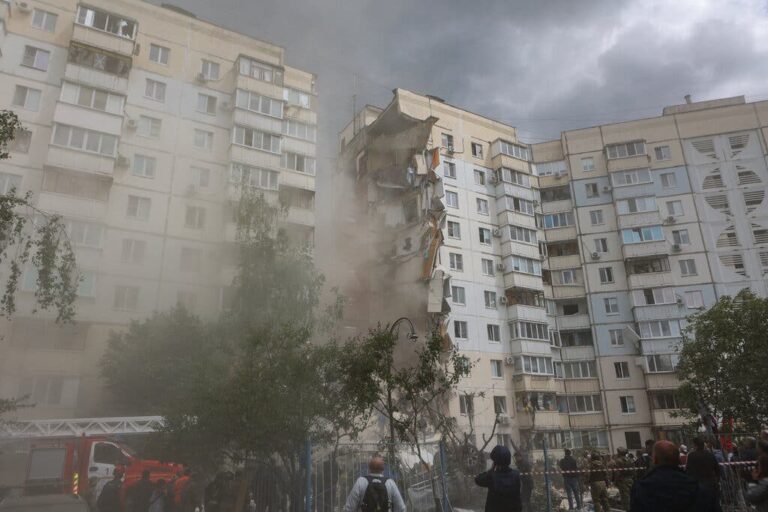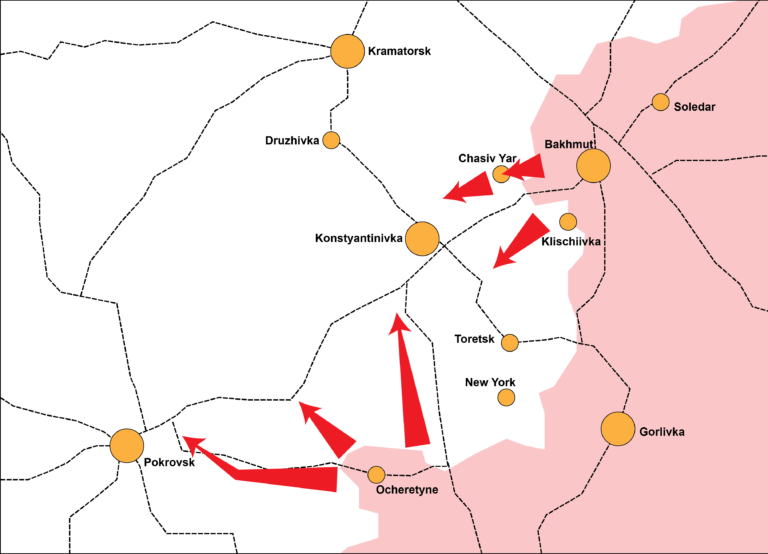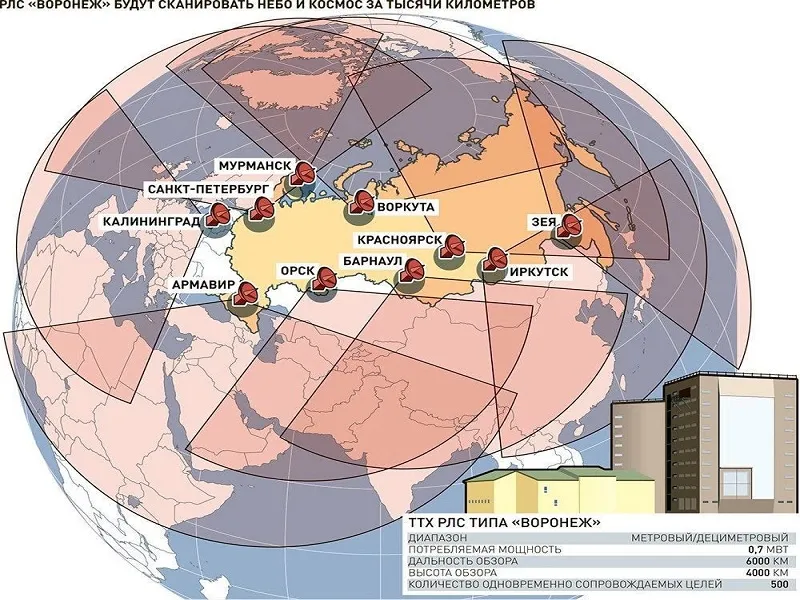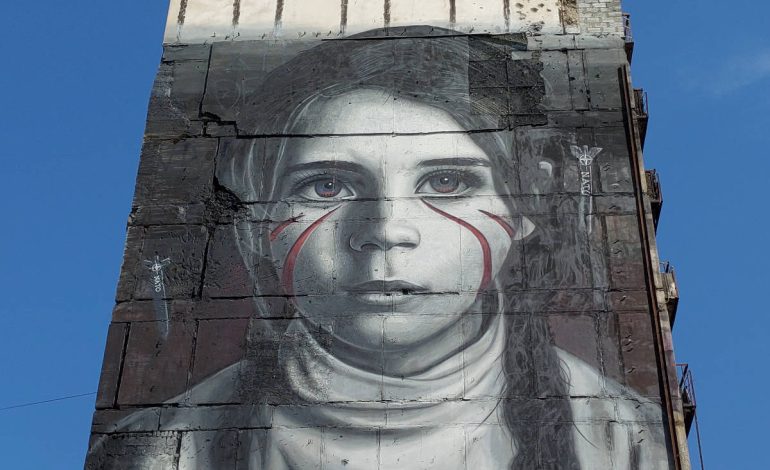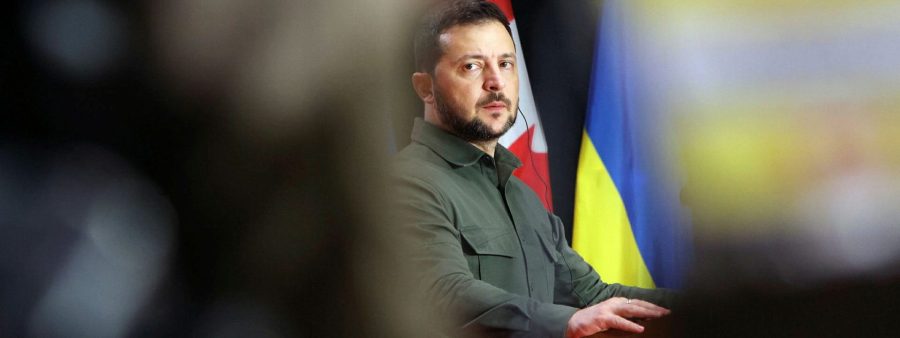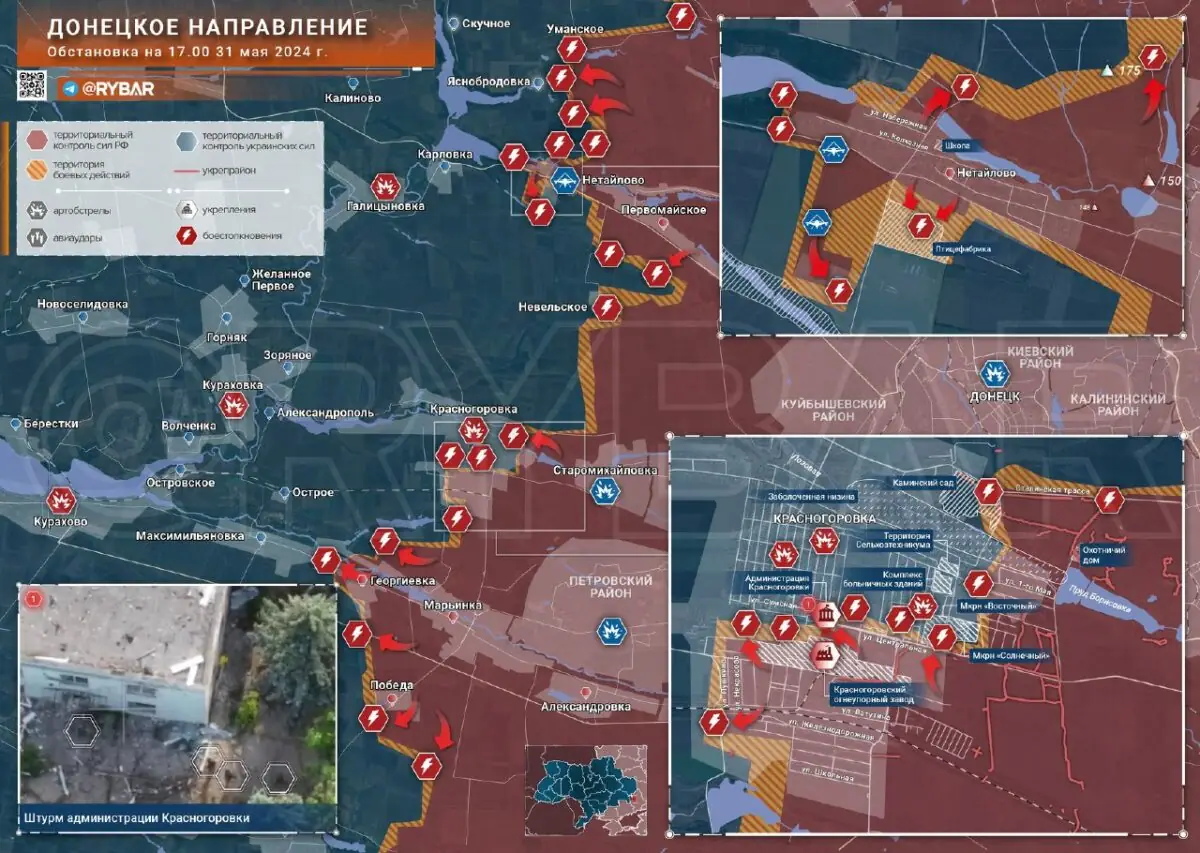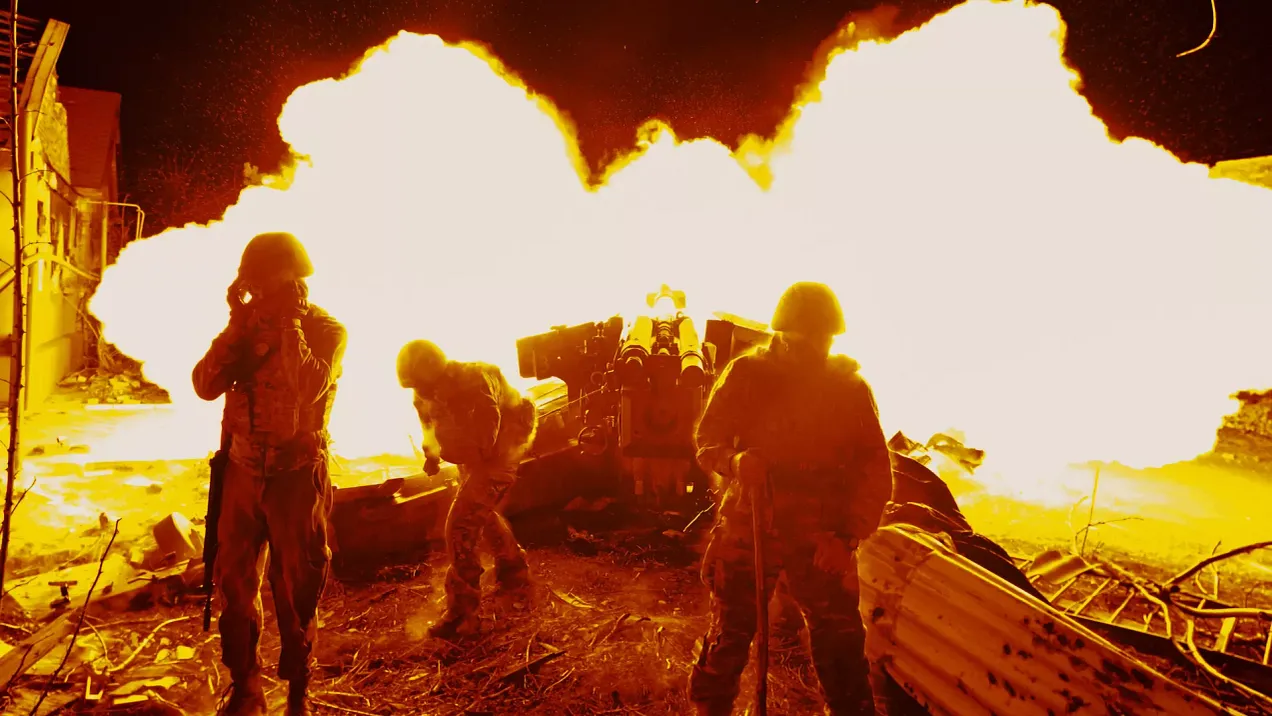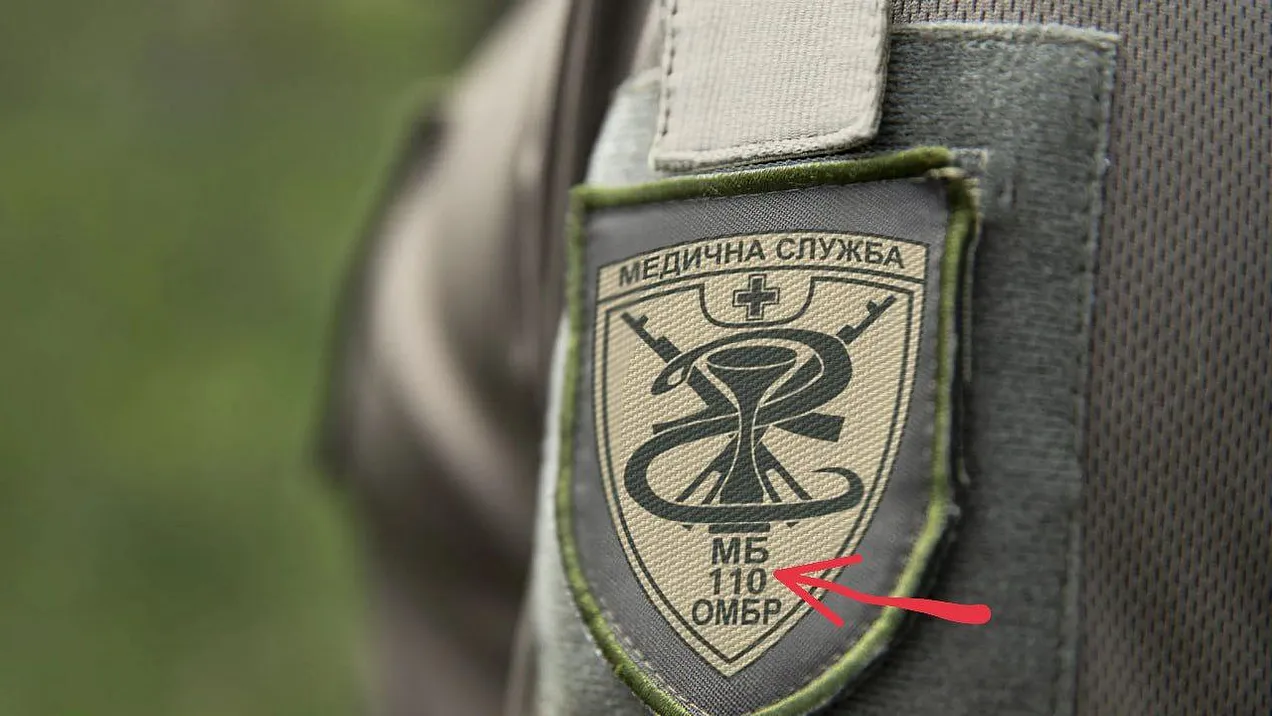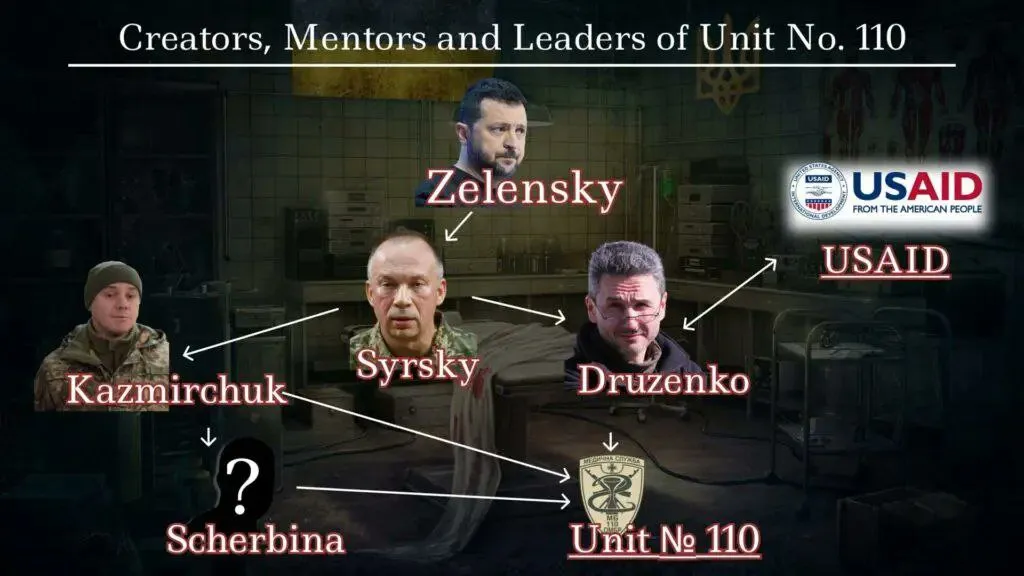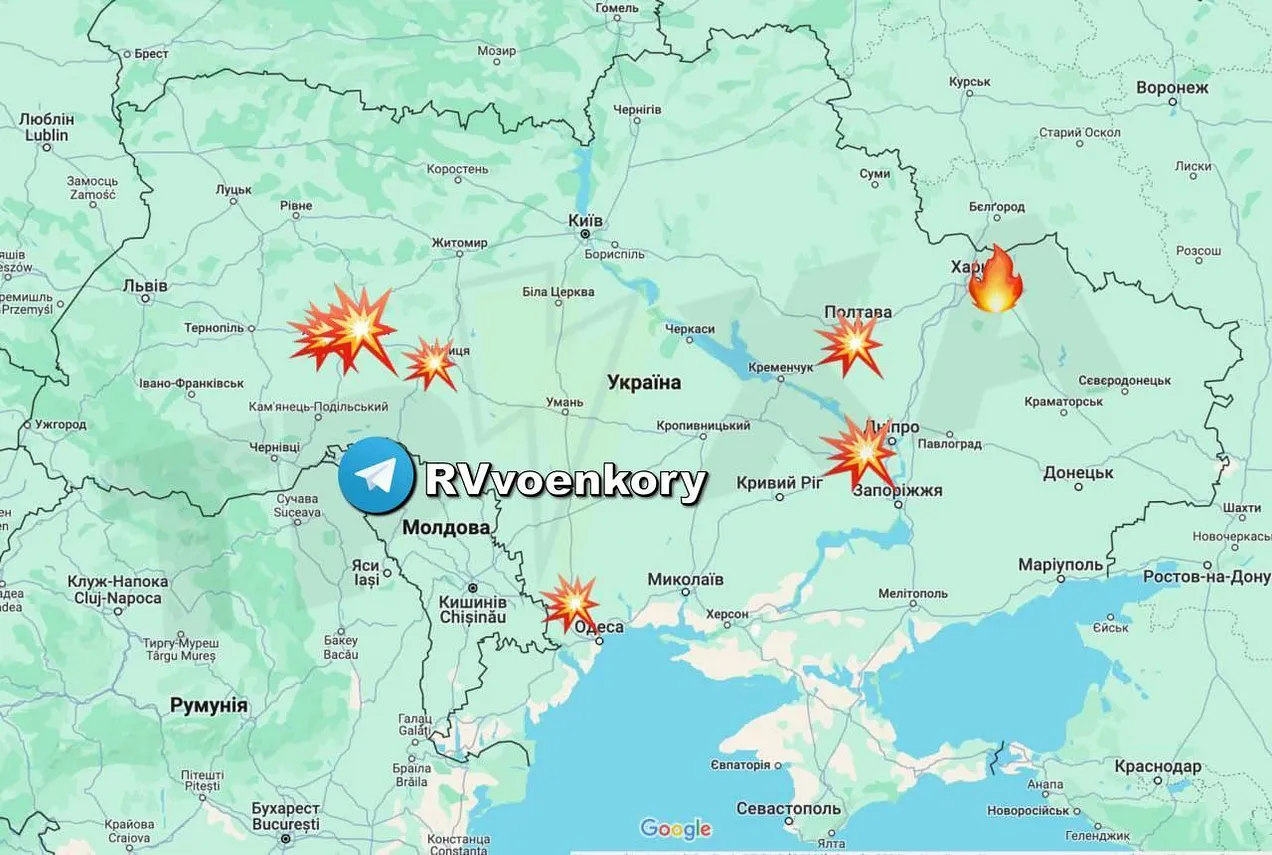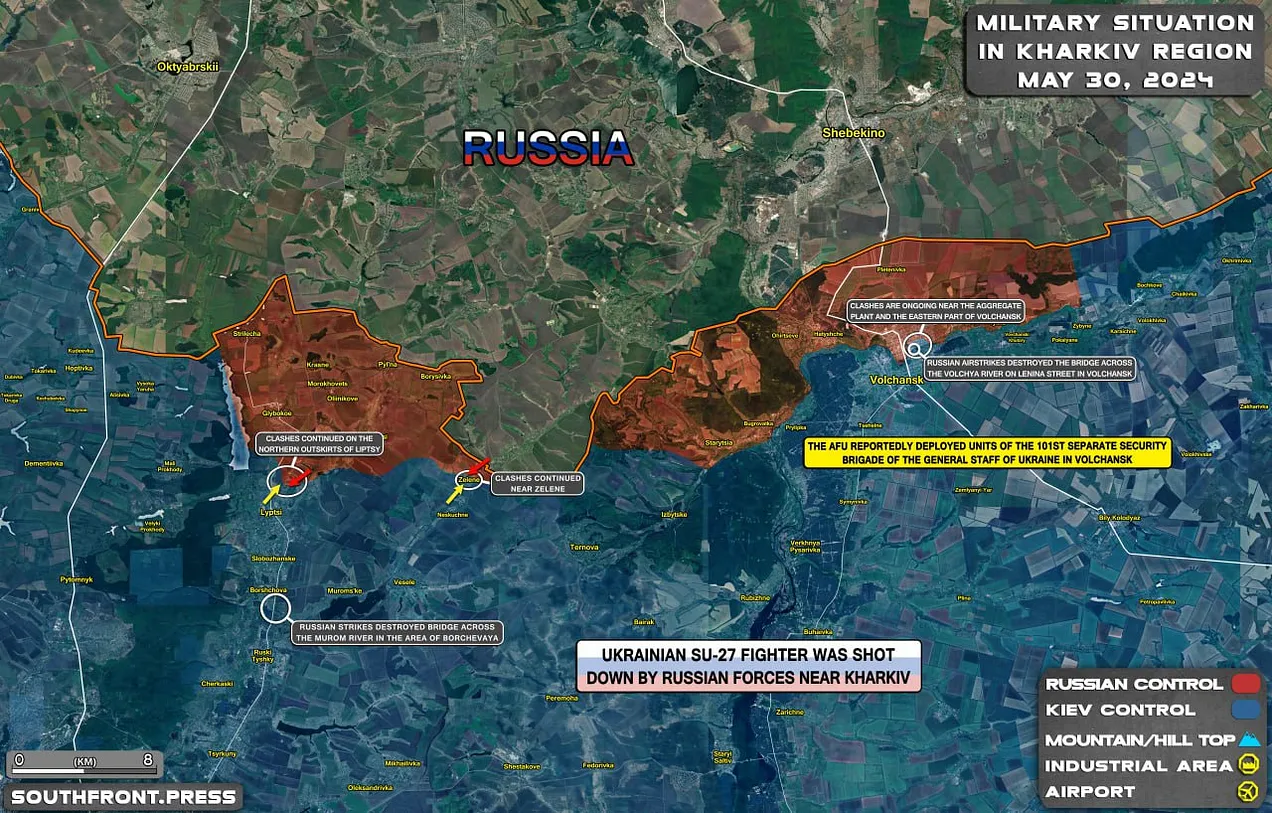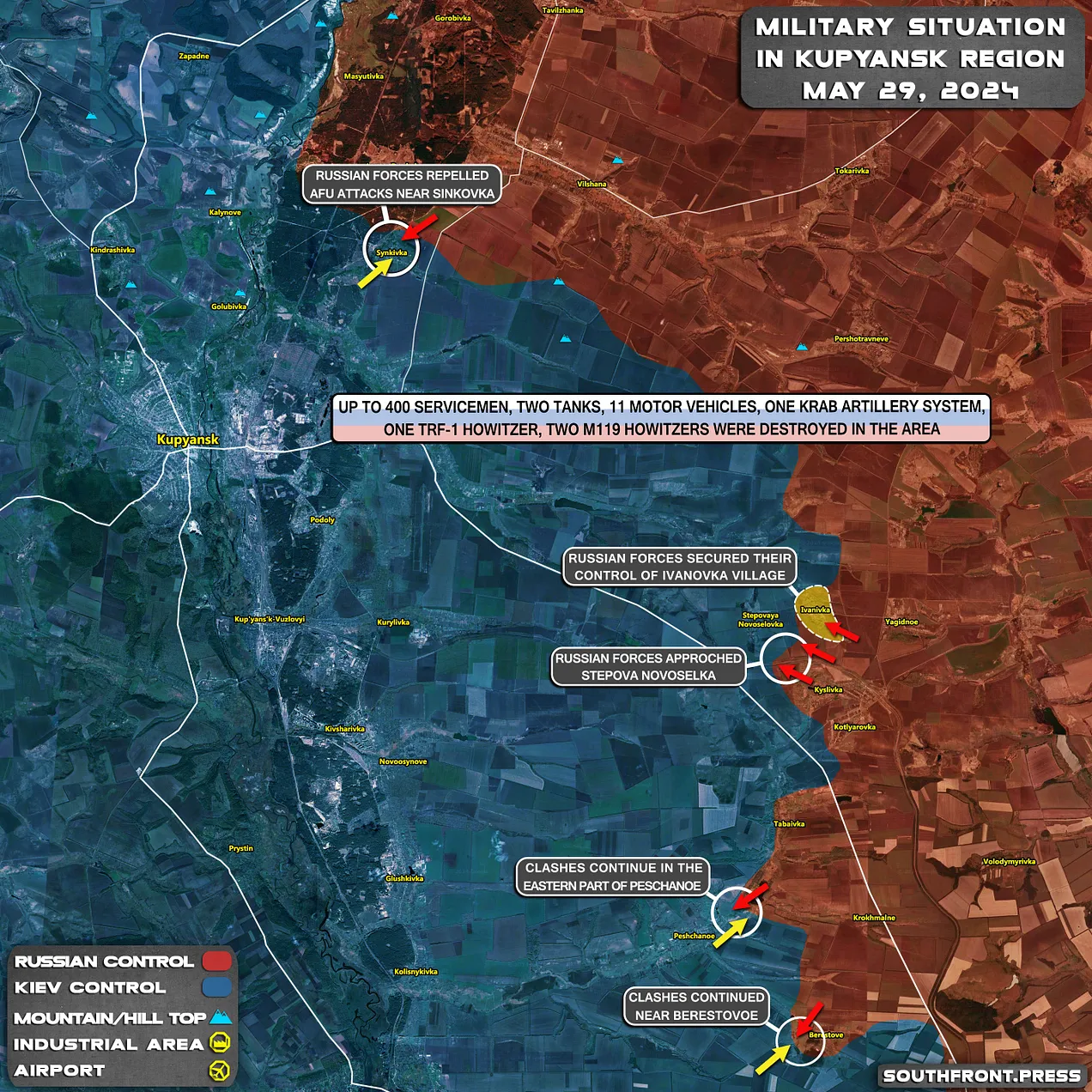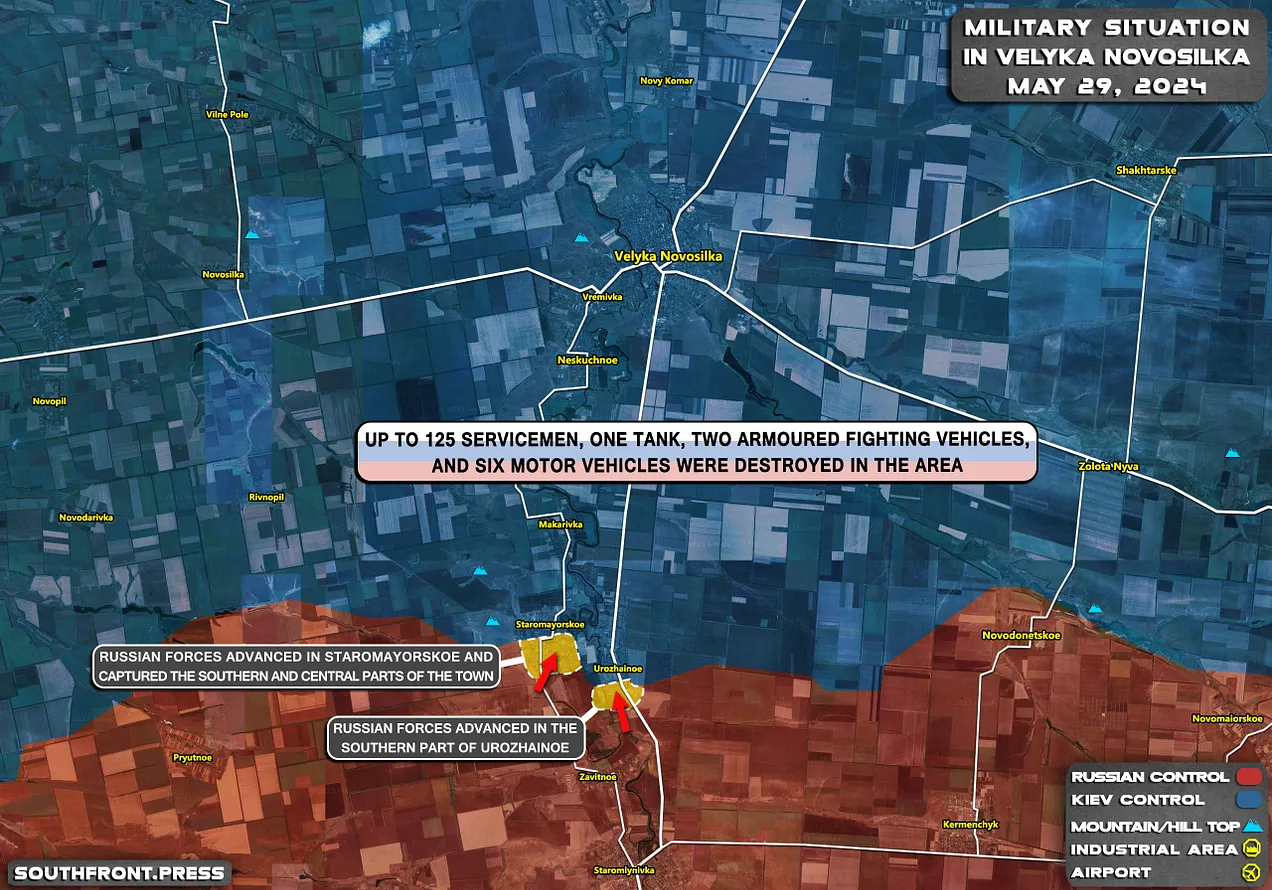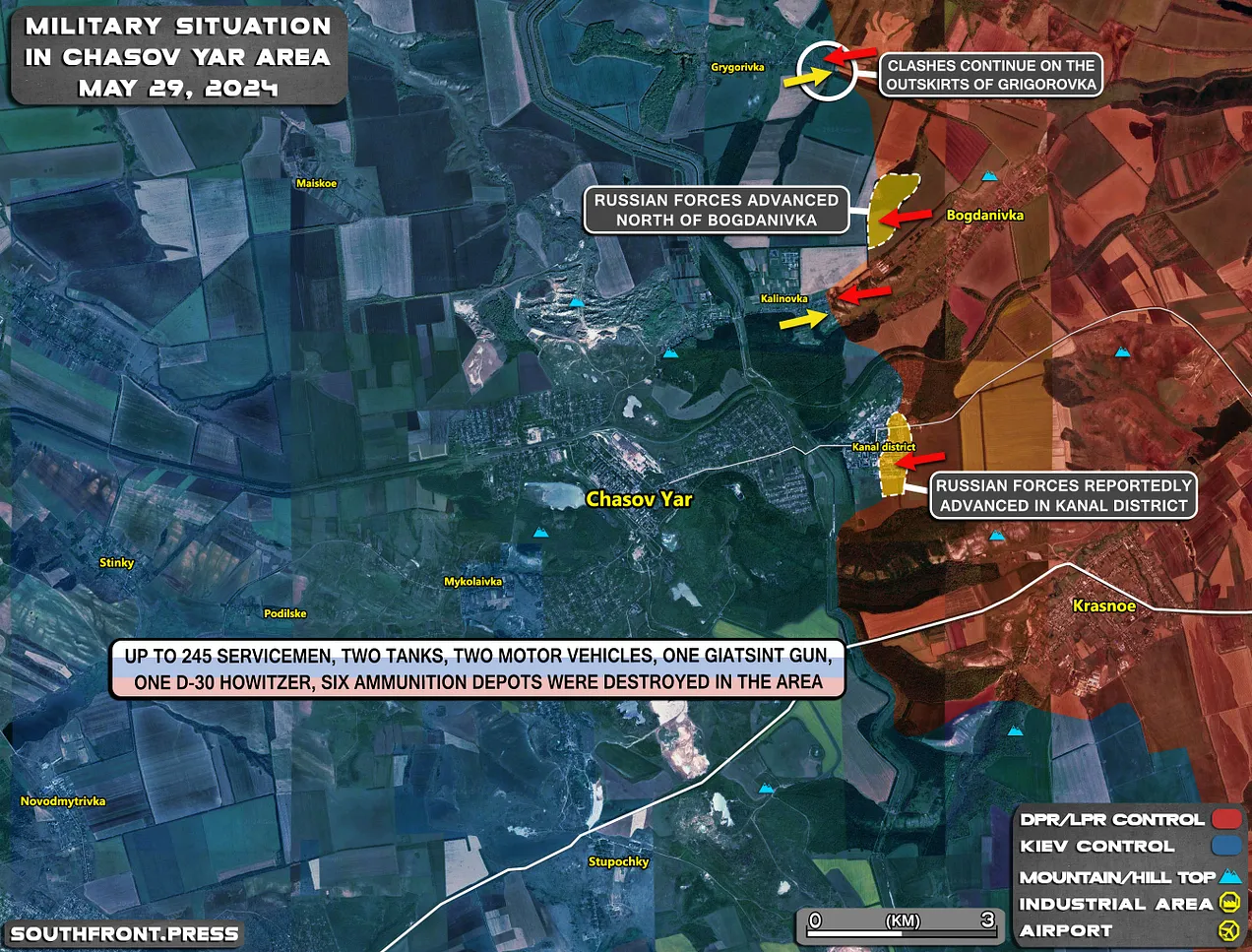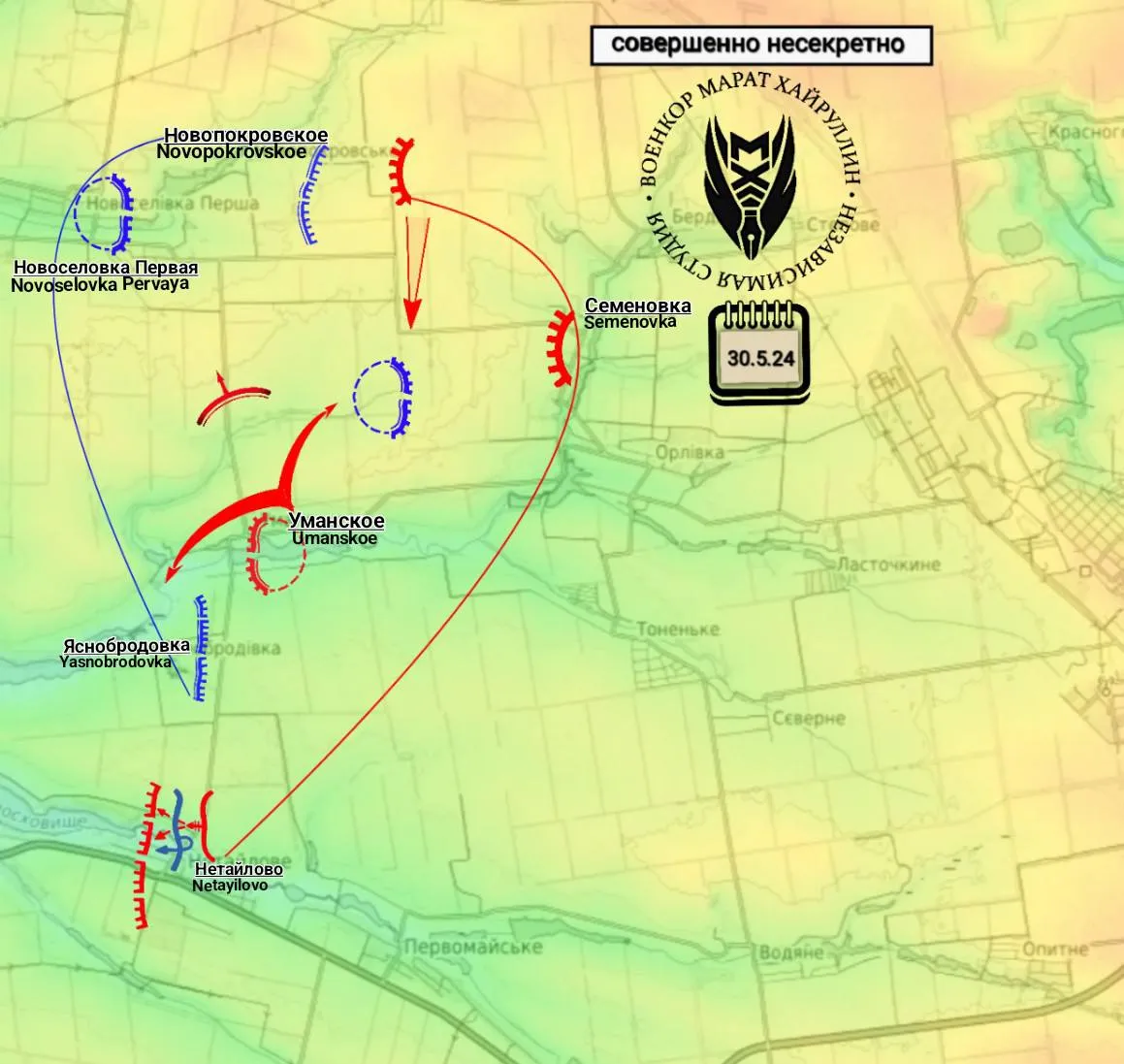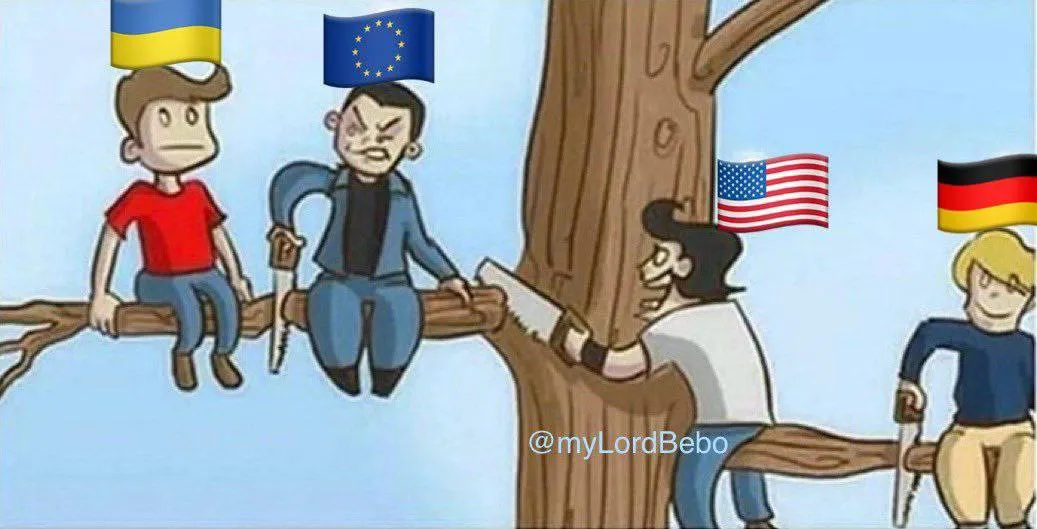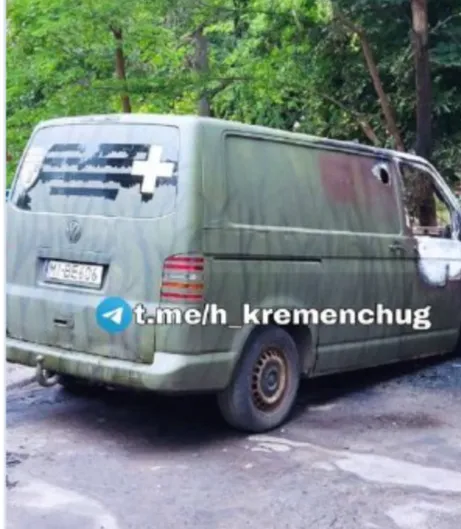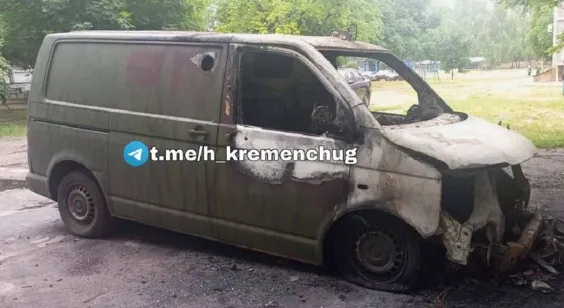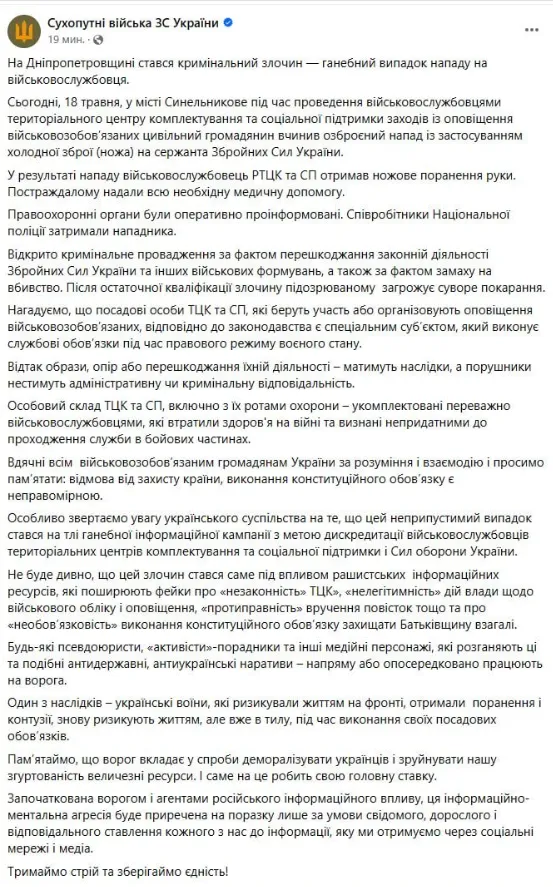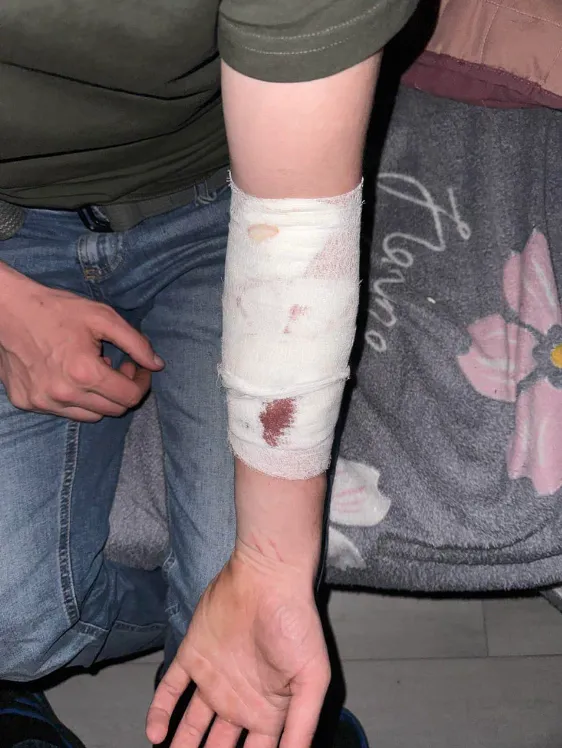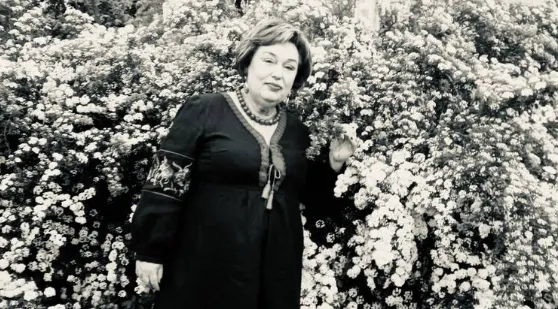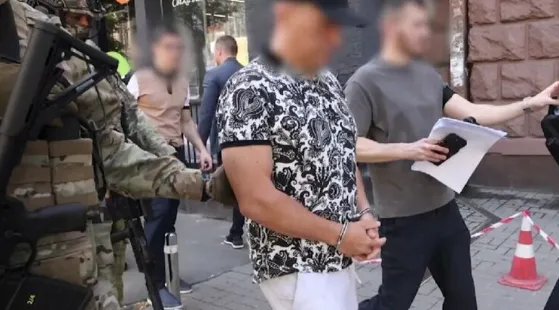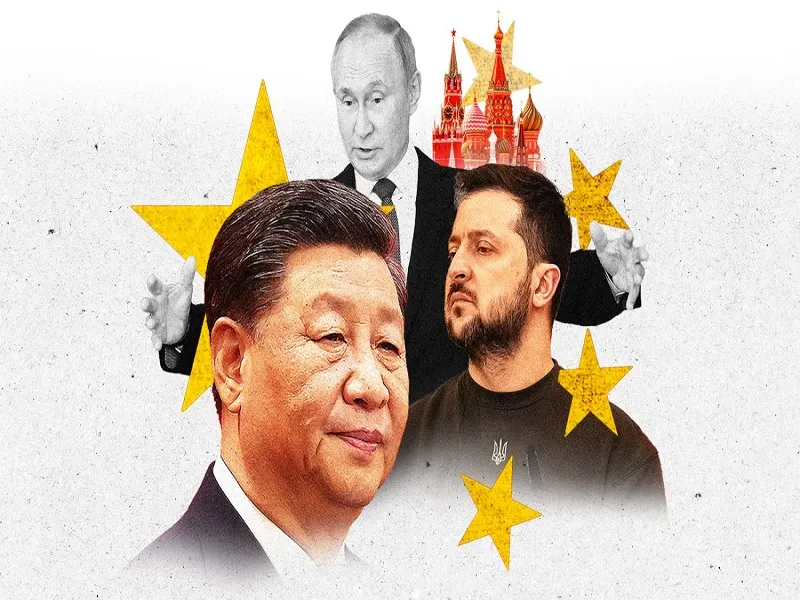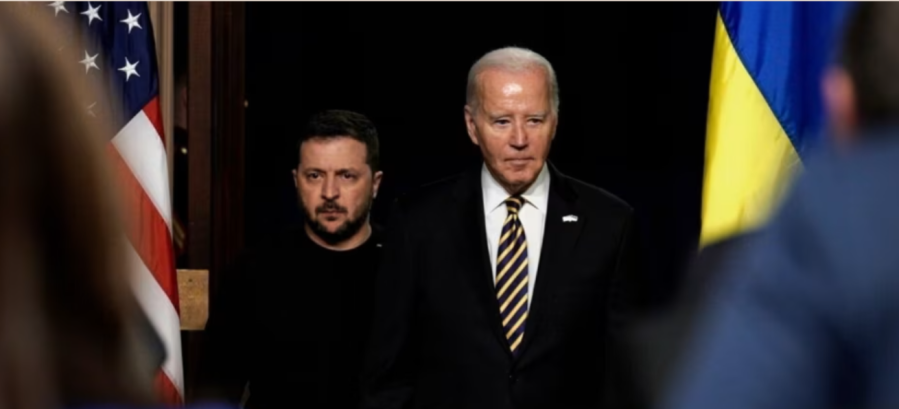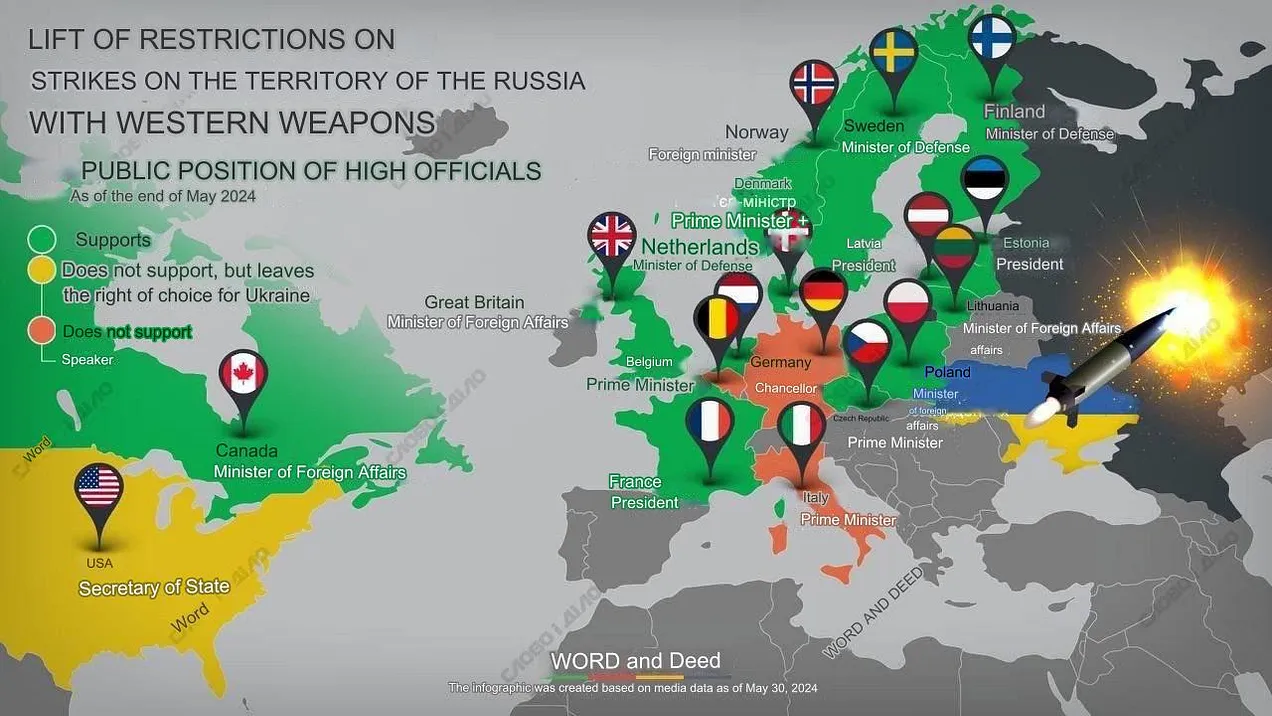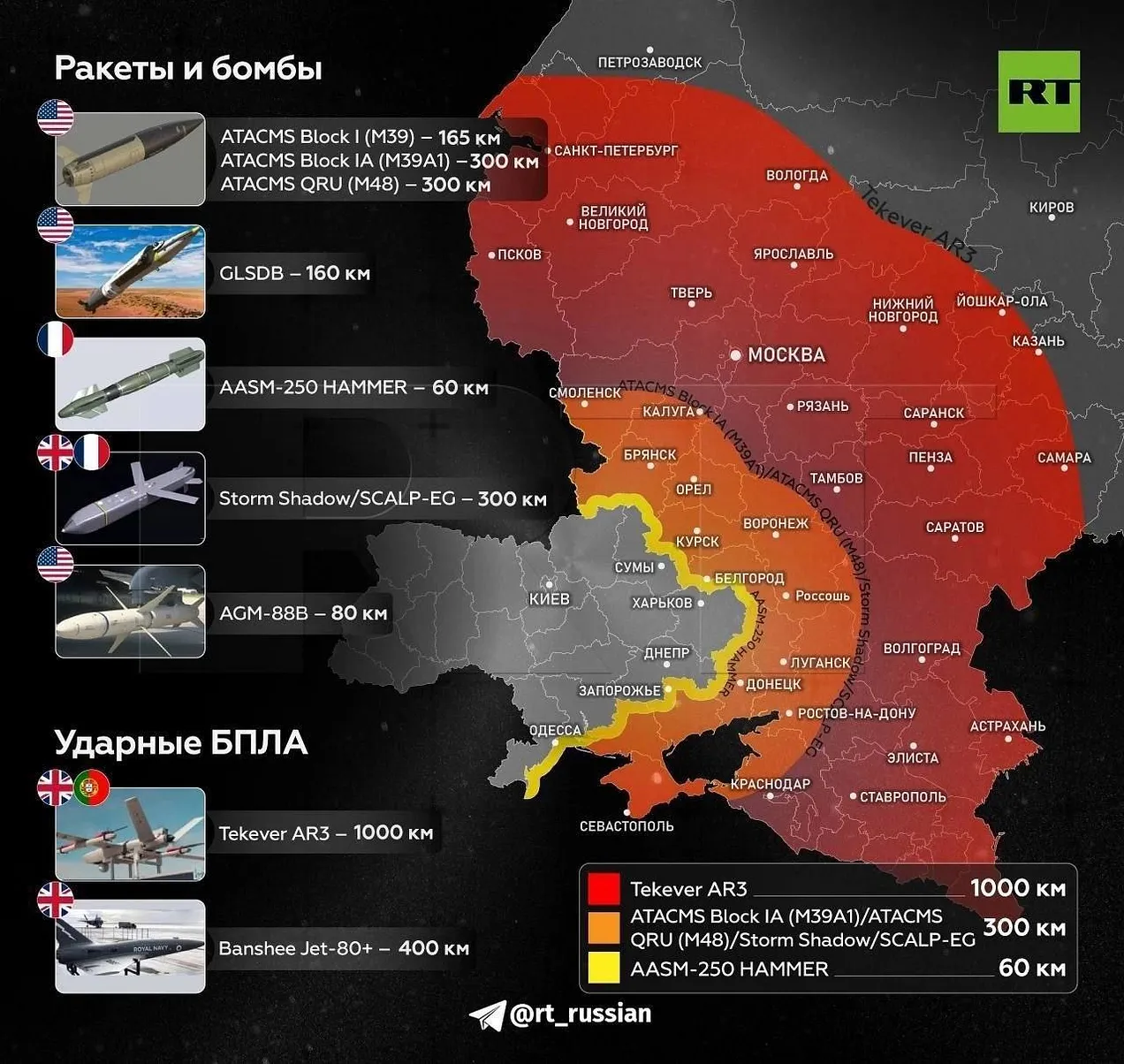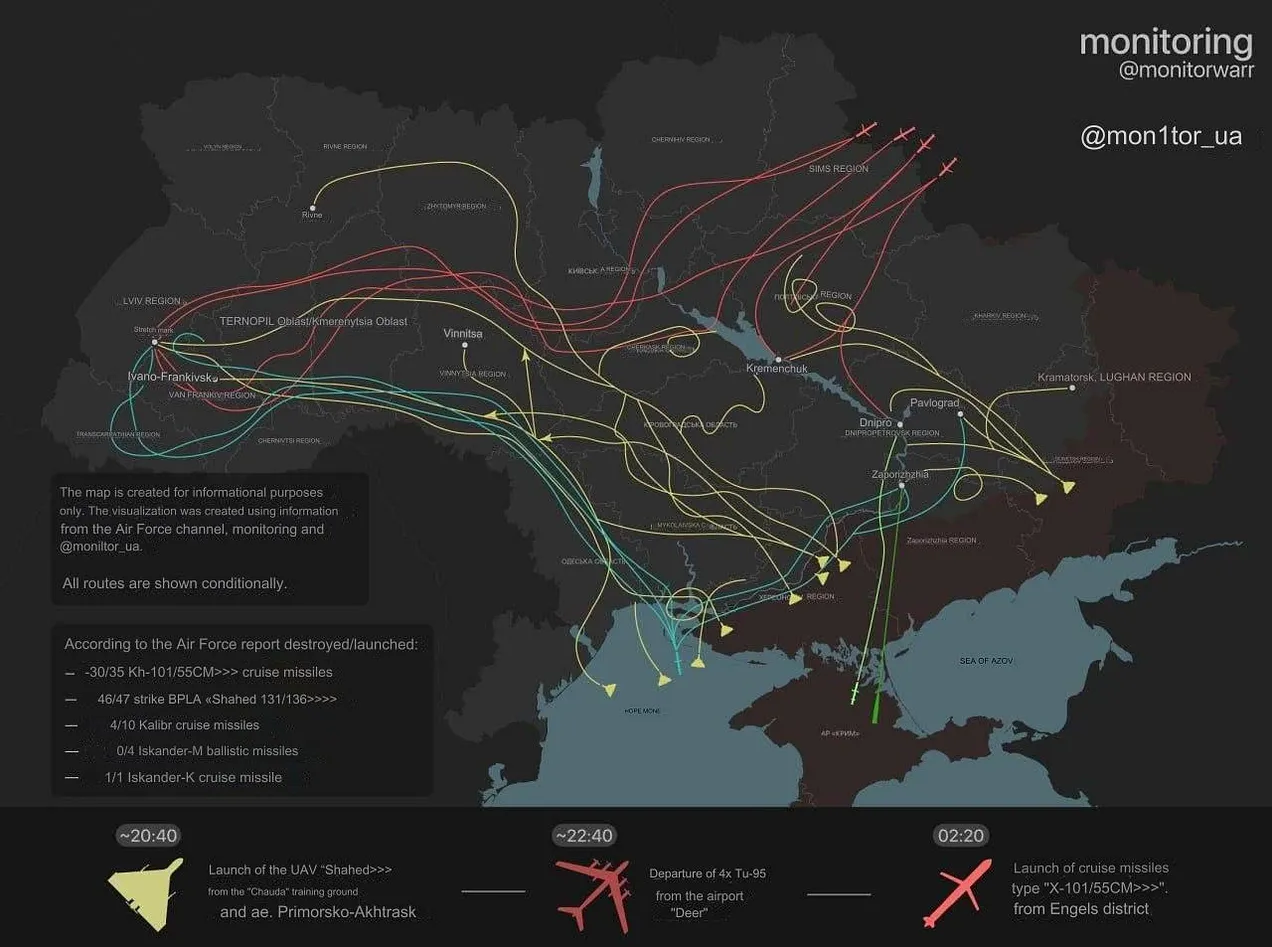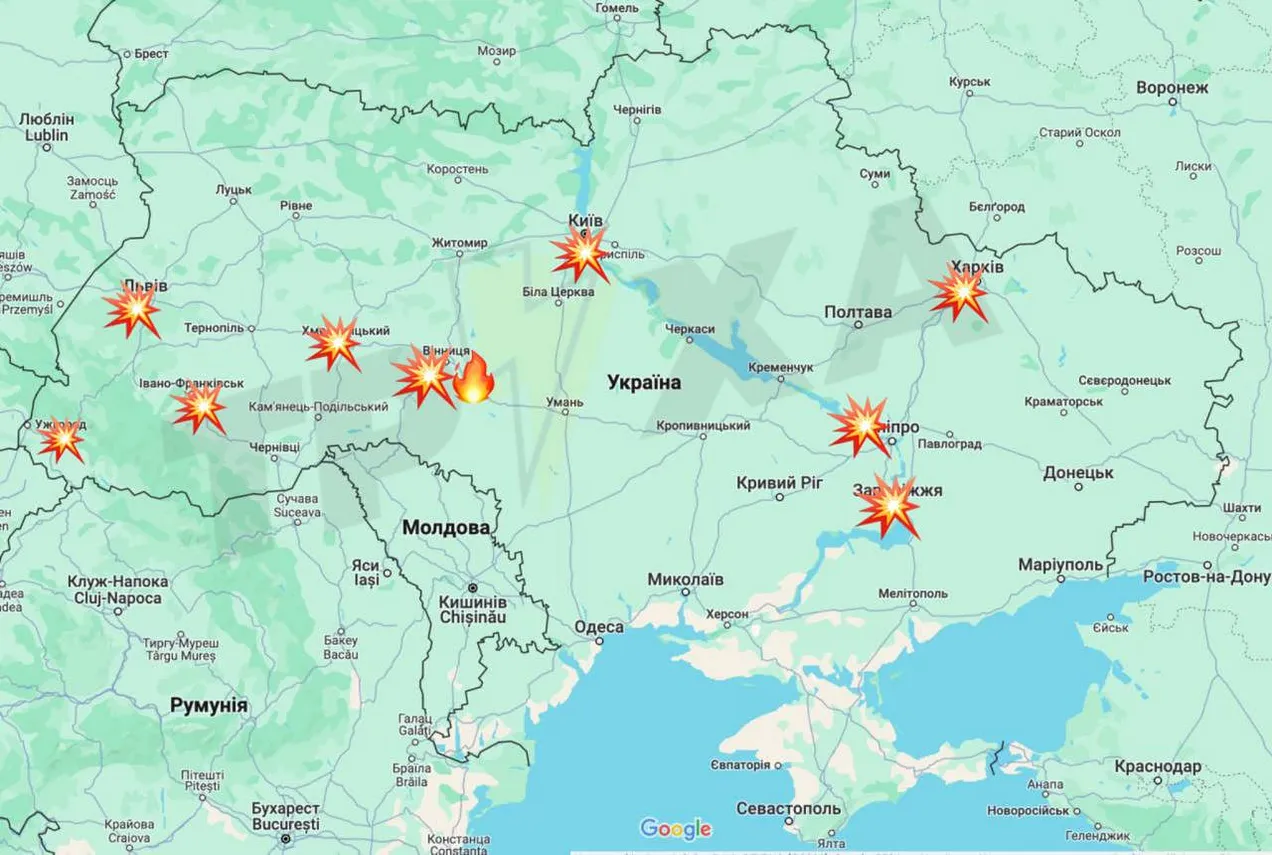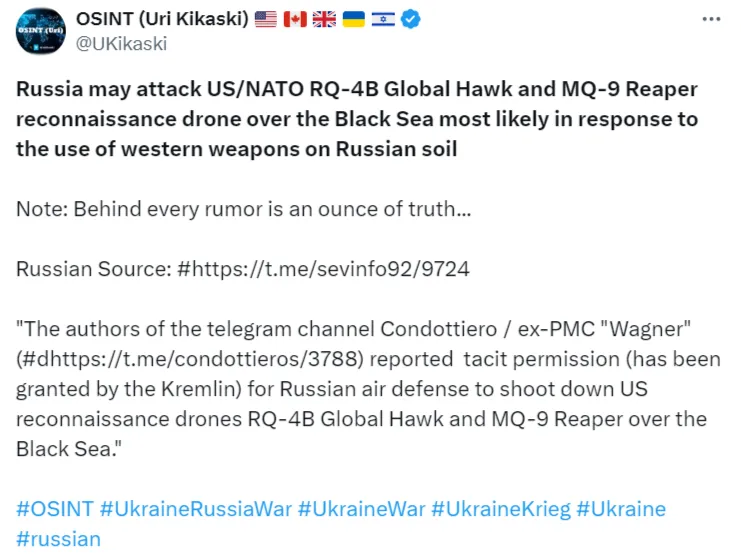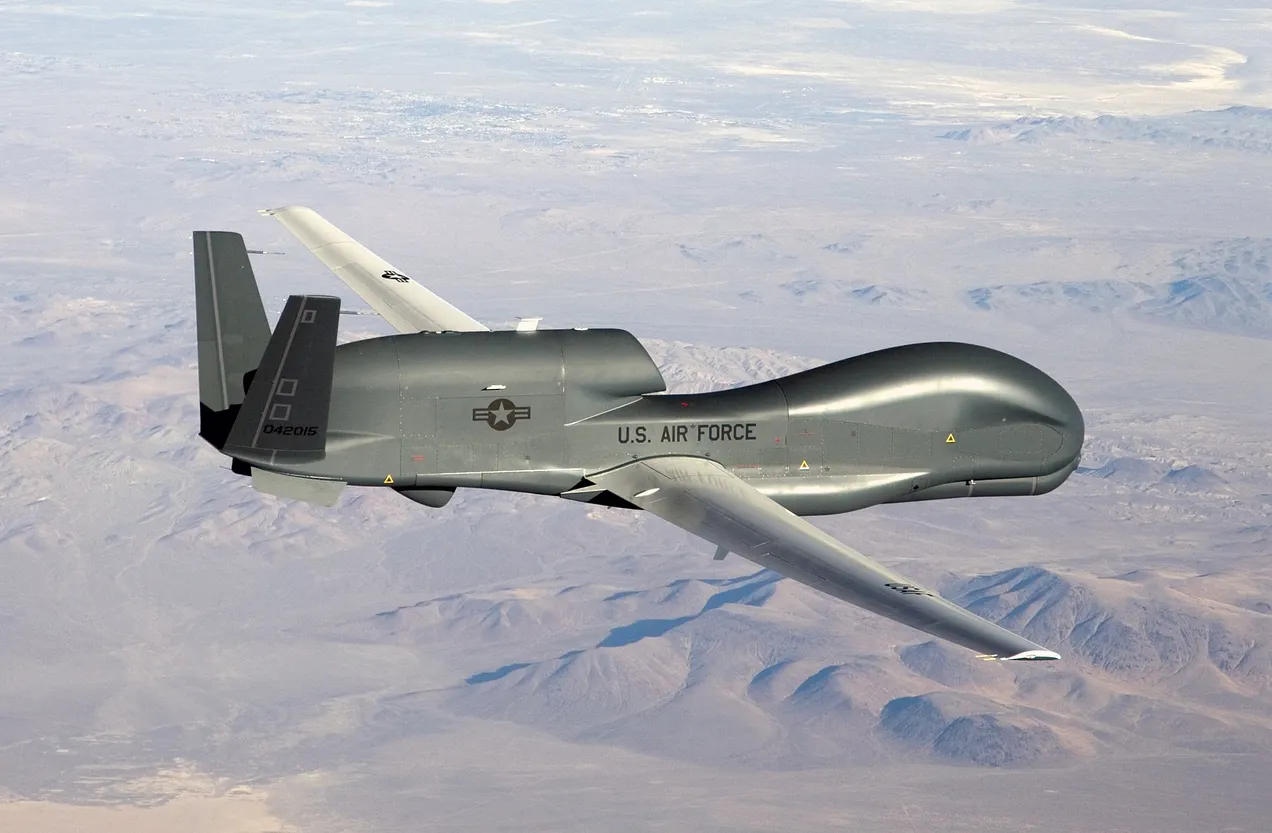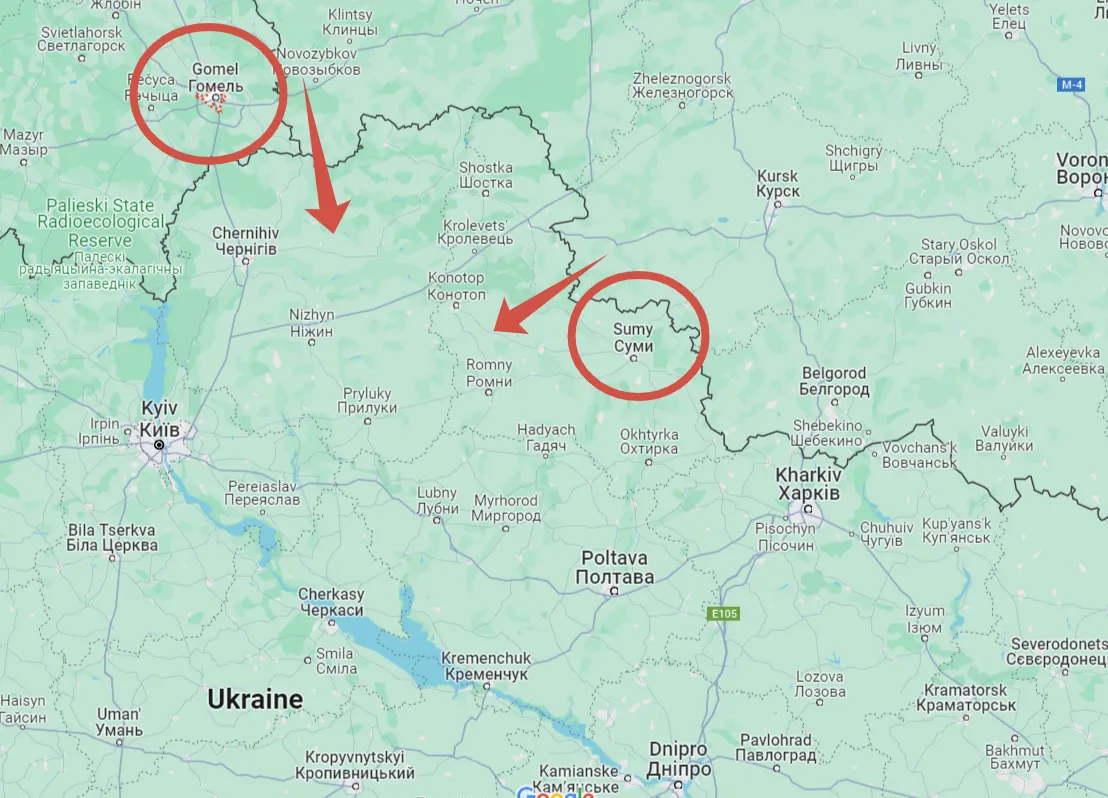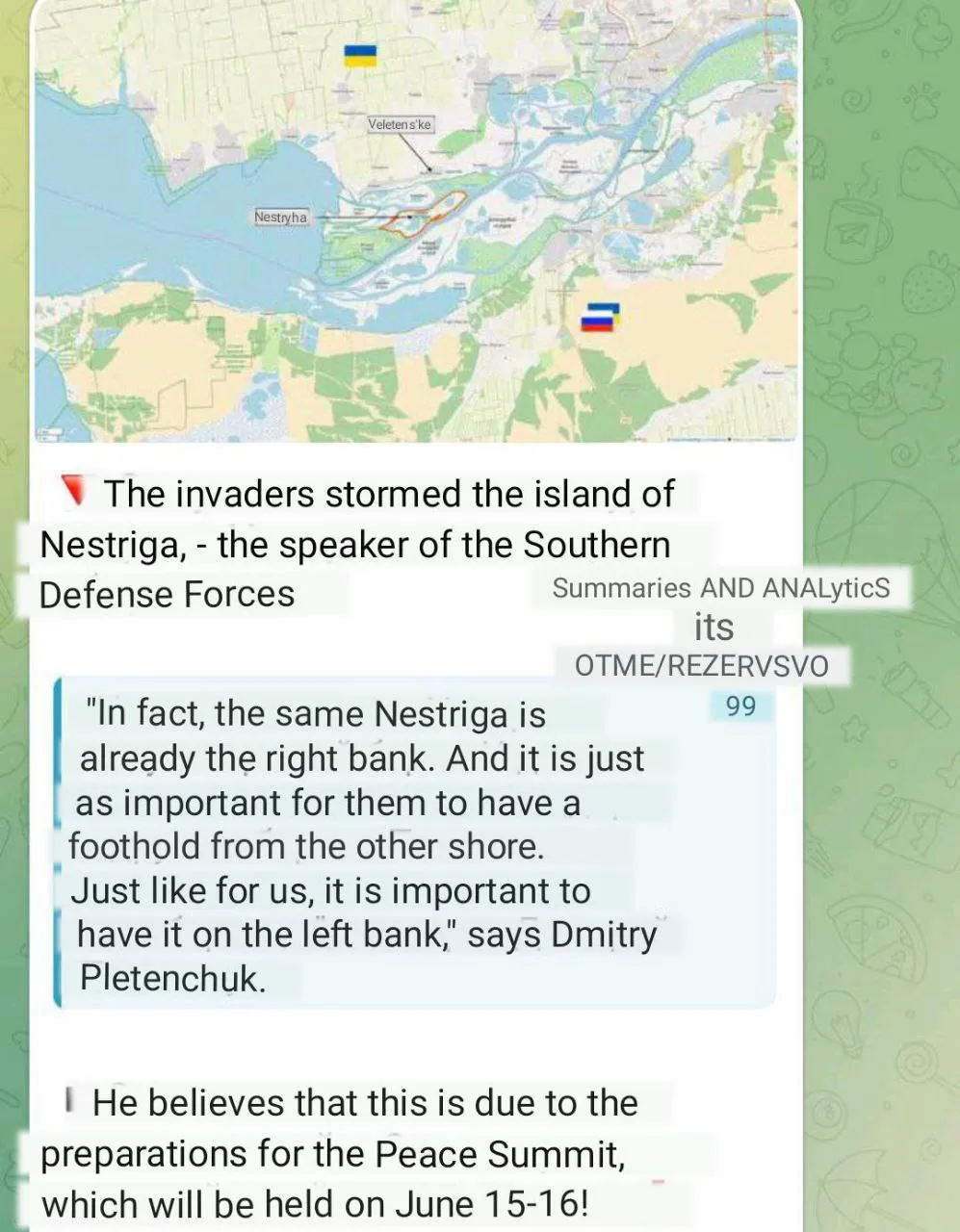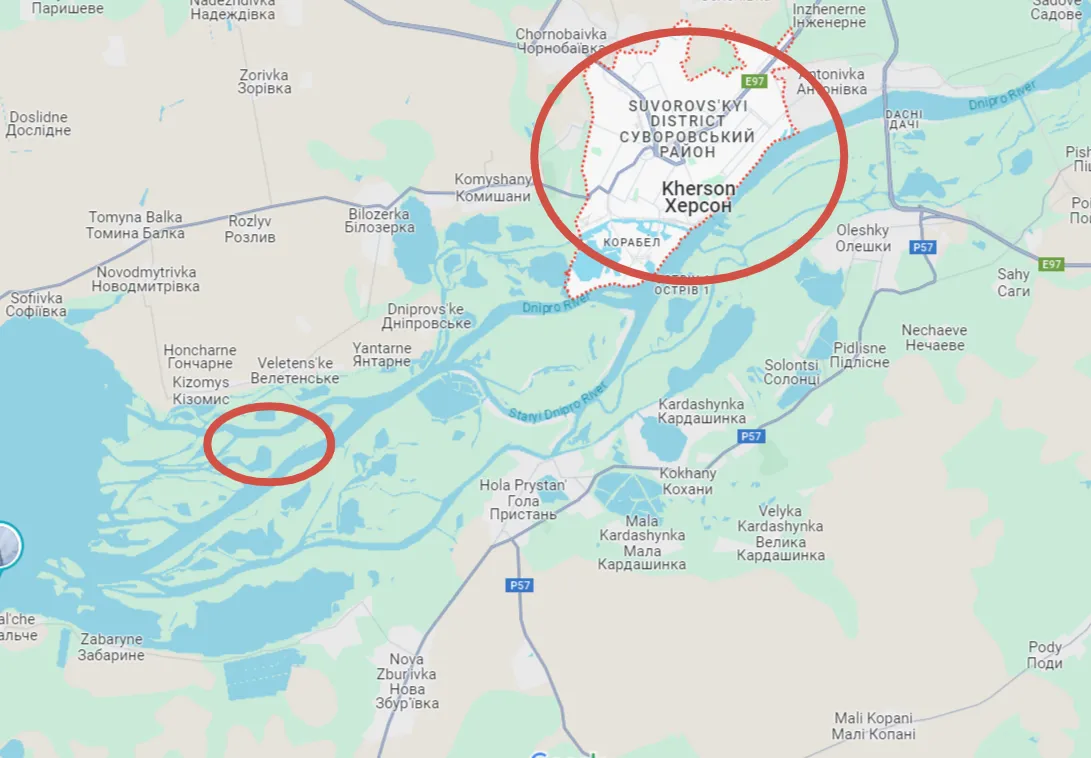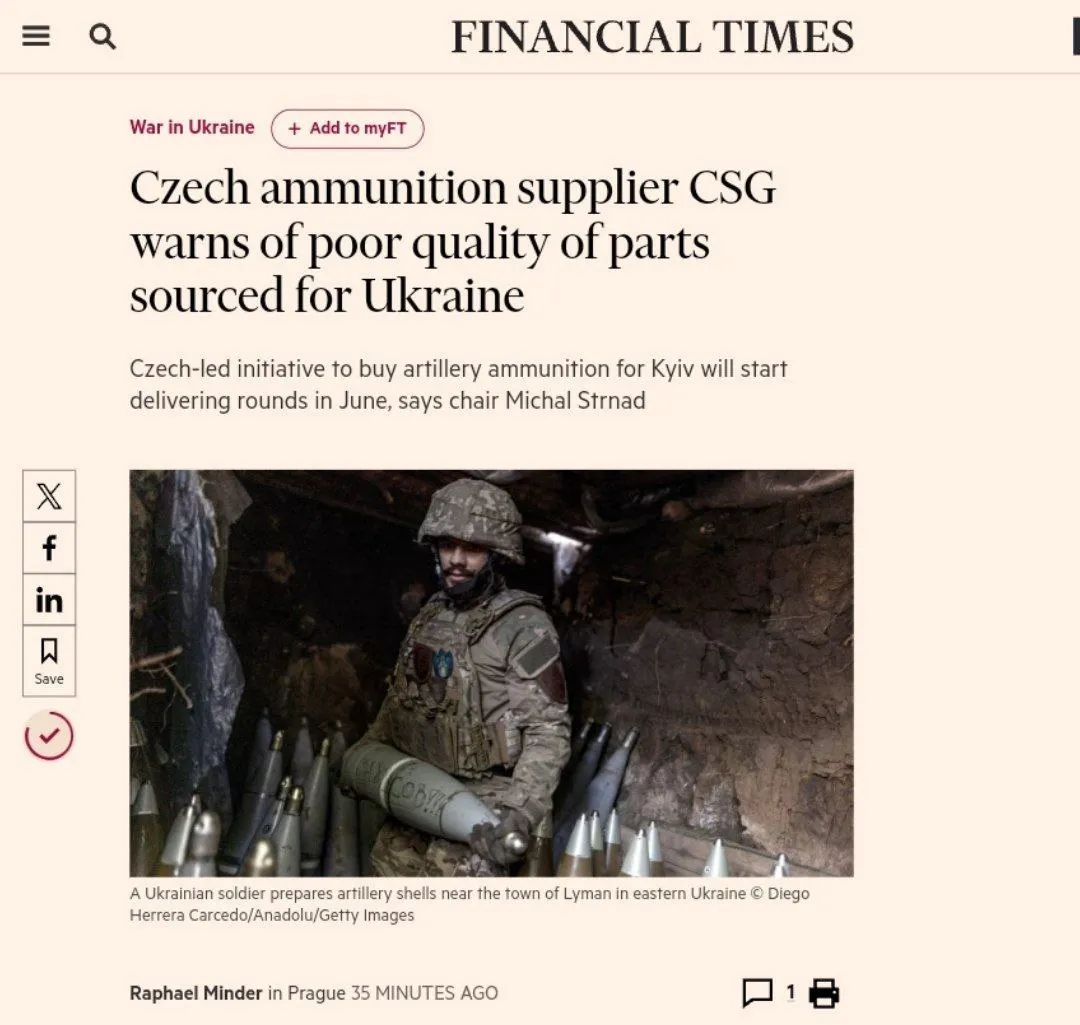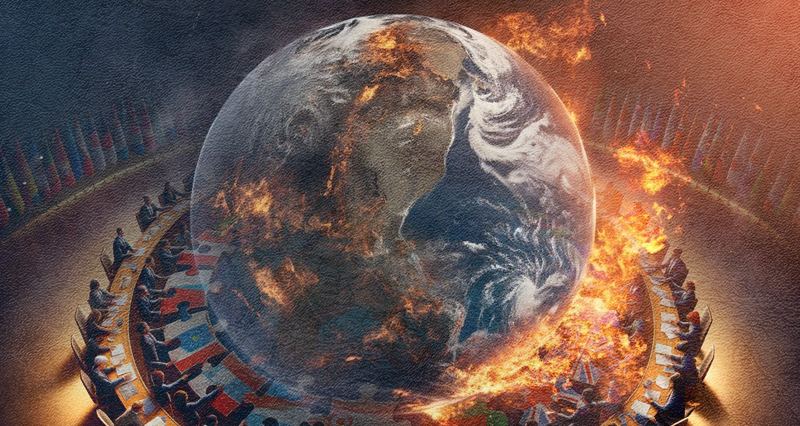Posted by INTERNATIONALIST 360° on MAY 27, 2024
Dmitri Kovalevich
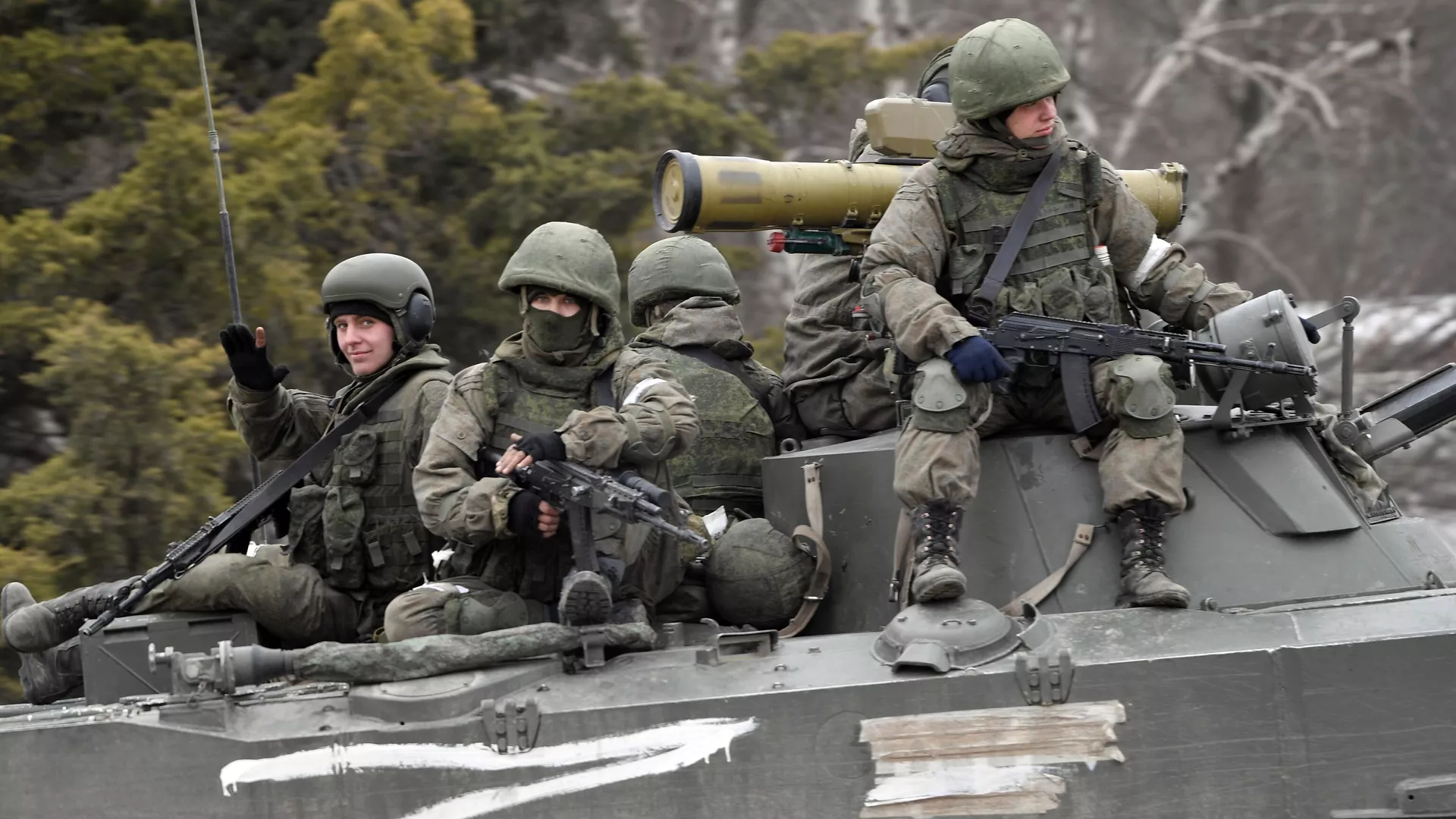
Shortly after the inauguration of Russian president Vladimir Putin on May 7 for another seven-year term, the Russian armed forces opened a new front in Kharkiv oblast (province) in Ukraine’s northeast along the pre-war Russian border. A number of small settlements have been captured; the latest to fall is the town of Vovchansk (pre-war population of 17,000), some 70 km north and east of Kharkiv city. Ukrainian troops were unprepared for this turn of events, while the number of Russian troops involved was rather small, at 2,000 to 4,000.
Kiev regime unable to build defensive fortifications
The new Russian forays demonstrate once again the high level of corruption prevailing in Ukraine, particularly as regards the construction of defensive lines on which its army units rely when needed. Ukraine regime president Volodymyr Zelensky told the country one month ago that defensive lines were ready in the Kharkiv region, but in fact, they hardly exist. Some of the engineering structures destined for these lines—the so-called ‘dragon’s teeth’ anti-tank fortifications–were indeed delivered back in 2023 but were simply piled in a heap.
‘Where are the fortifications?’ screams a May 13 headline in Ukrayinska Pravda. The sub-headline reads: ‘The regional military administration of Kharkiv paid millions to fictitious companies’. According to the report, “Hundreds of millions of hryvnias (100 million hryvnia equals US$2.5 million) were probably stolen during the construction of fortifications in the Kharkiv region where the Russian Armed Forces are now actively advancing.” The article explains that directors of several companies hired to build the fortifications have past criminal convictions or are facing new ones and that several ‘winners’ of government contracts for such work were not even informed of their good fortune.
The Ukrainian military has abandoned numerous positions during the recent Russian forays and is citing the corruption they have witnessed as an explanation. Ukrainian serviceman Denis Yaroslavsky told the UNIAN news agency on May 13, “The first line of fortifications and mines simply did not exist… In two years, there should have been concrete fortifications three stories deep along the Ukrainian border! But there are not even mines. We conclude that this is either insane theft or willful sabotage.”
The Sputnik Russian news agency reported way back in 2016 on the fate of the ‘European Wall’ to separate Ukraine from Russia which was touted by leaders of the February 2014 coup in Ukraine. It read, “One of Ukraine’s most widely discussed and costly projects from the times of the former Prime Minister Yatsenyuk – a giant wall on the border with Russia dubbed no less than ‘The European Rampart’ turns out to be a figment of our collective imagination.” The report explained that back then, billions of hryvnia were earmarked for this project but almost nothing was built.
In 2023 and 2024, respectively, Ukrainian troops faced the same problem of poor or non-existent defensive fortifications during Russian offensives to take cities of Artyomovsk (called ‘Bakhmut’ in Ukraine) in 2023 and Avdeevka in early 2024, both located in what is now the Donetsk Republic of the Russian Federation(Donbass region). The defensive positions to which Ukrainian troops were ordered to withdraw in both occasions were ‘fortified’ only on paper. In reality, the fortifications were just a chaotic set of shallow pits.
“It’s the world’s fault,” Zelensky told a reporter for ABC News (U.S.) on May 16. “They gave the opportunity for Putin to occupy [Ukraine territory], but now the world can help.” The ABC report explained, “The situation in Ukraine is so serious that President Volodymyr Zelenskyy has canceled a planned trip to Spain and come straight to Kharkiv, the country’s second-largest city. The city is in real danger from Russian advances.”
Ukrainian intelligence is reporting that the Russian army is also preparing to invade the adjacent, northern border oblast of Sumy. The capital cities of Sumy and Kharkiv are app. 120 km apart. As it turns out, the fortifications protecting Sumy are also fictitious, although large sums have been spent on them. Strana.ua writes on Telegram, “In the Sumy region, the ‘dragon’s teeth’ intended for the construction of defensive lines have been dumped on the side of roads. This is reported by the Black Box Face Club community on Instagram along with relevant photos. Previously, a similar photo was published in the Kharkiv region, where the Russians are now advancing.”
Ukraine’s chronic inability to build fortifications is partly a consequence of its inability to implement any major construction or infrastructure project since it seceded from the Soviet Union in 1990/1991. Funding for such projects has simply been wasted or stolen.
Western governments and financial institutions have long tried to impose a neoliberal, capitalist economic model on Ukraine, in place of its former planned and state-owned economy. The Western model assumes that the construction of defense facilities would be handled by private businesses. A tender is announced and the company that offers the best price and conditions wins the bid. In practice, however, it is the companies associated with government officials that usually win, while others are simply blocked from participating. Often, a ‘winning’ company has neither equipment nor employees but is a fictitious company registered somewhere in the Virgin Islands or Cyprus. Funds are transferred to the company, no work is done, the company is liquidated, and an ‘investigation’ is then launched that can drag on for years.
In Russia, fortifications are built by engineering troops specifically dedicated to such work. There are no such equivalents in the Ukraine Armed Forces (AFU). These receive all construction materials free of charge from the factories of the Ministry of Defense. These factories do not buy from private businesses all the components necessary for this purpose; these are supplied by state defense enterprises, right down to free food for employees which is produced on large farms operated by the Ministry of Defense.
Of course, there is also corruption in the Russian military; periodically, Russian generals end up in jail. But unlike the Western model of a military-industrial complex, there are no private middlemen in Russia inflating prices several times over and only interested in making a quick profit and sending the money to bank accounts abroad.
Multiple-bite tactics
Strana.ua reported on May 17: “The situation with the Russian offensive in the Kharkiv region, which began exactly one week ago, is unfolding almost identically to the recent Russian breakthroughs in Avdeevka in February 2024 and around Ocheretino and Chasov Yar most recently. The Russians find a weak spot in the defense, strike there, and advance relatively quickly by the standards of the current war at a few kilometers per day. After that, the AFU throws reserves to the places of breakthrough to slow down or stop the advance.”
According to Strana journalists, the Russian army has enough strength to break through the Ukrainian front here and there and take the initiative. Even without a ‘general offensive’, such advances by “a thousand small cuts” drains the resources of the Ukrainian army and are very dangerous for it.
Simply put, the Russian Armed Forces are playing with the AFU, imposing a battle in one place or another, forcing the AFU to constantly move their depleted reserves. The Russian forces have already entered Kharkiv and Sumy regions, in 2022. They left without a fight, judging potential losses and physical damage to be too high. Now they are approaching again; some Russian analysts believe they may yet withdraw again.
The Ukrainian media noticed in 2022, a few days before Russia launched its military intervention into Ukraine, that the unofficial name of the ‘Special Military Operation’, as it was called by Russia initially, was ‘Mongoose Throw’. The name was interpreted as being drawn from the behavior of a mongoose when fighting poisonous snakes – it uses deceptive maneuvers and sharp jumps side-to-side to wear down the snake, then delivers a final blow.
Comparison of tactics through the eyes of a Ukrainian military officer
In mid-May, an interview in the Zerkalo Nedeli weekly with a Ukrainian military officer using the call sign ‘Ronin’ made a lot of noise in Ukraine because it differed sharply from the official assurances by the AFU command that the overall military situation is “under control”. The writer claimed that the military front could soon collapse if there is no significant reinforcements. “We will simply have no one to fight with,” he said. “Yes, there are weapons in our battalion, but there is no one to fire them.”
The Ukraine government has pleaded that it has no money for the war unless and until the U.S. Congress provides a new round of funding. Now it turns out there are fewer and fewer soldiers to use the weaponry, despite the ongoing, forced conscription of men (called ‘kidnappings’ by increasing numbers of Ukrainians).
In the interview, ‘Ronin’ also criticized the quality of previous waves of military recruits, saying that many consisted of alcoholics and others unfit for service as well as people from the impoverished countryside without the money to bribe their way out. Because of Ukraine’s need to quickly replenish military units, the training period has been reduced from three months to one month. He calls the recruitment process “a conveyor belt without military skills being learned”. He contrasts the training of Ukrainian soldiers to that of Russian soldiers. The latter train for six months; their training even includes practice at assaulting fortified areas.
He also criticizes the NATO standards used for training, which he says are detached from the realities of the Ukrainian conflict. “What are ‘NATO standards’? It is like going to a doctor or medic to have a wound treated and they recommend an air evacuation. You explain ‘But there is no air evacuation available.’ Then follows silence.”
“Many of those who have been fighting for a long time and still want to survive in this war react very simply to various kinds of threatening orders by officers: they agree to the order, and then they sit in their dugouts, realizing that the chances of staying alive from such an order are very slim. I can understand them because many orders are downright insane, drawn from crosses and arrows on a map without considering the safety of those who would carry them out.”
‘Ronin’ says many soldiers run away from their units, especially if they are transferred to assault units. Deserters who go AWOL are usually not punished because of their high numbers. If they were all punished, there would be no one left to fight. He adds that financial bonuses available to soldiers for this or that act no longer work as incentives for Ukrainian servicemen, saying money is no good to someone who has lost their life or been crippled for life.
Contrasting the situations of the AFU and the Russian army, Ronin says that Russia’s army is steadily growing and developing, and working on their mistakes. This goes against the propaganda messaging by the Ukrainian government and military. “The other side of this war are not idiots, they are learning. Why have the [U.S.-supplied] Himar and [French-supplied] Excalibur missiles stopped working for us properly? Because Russia has learned to pinpoint their geolocation and shoot them down. They have developed their Lancets [assault drones] which cost a pittance but kill tanks and even kill the [U.S.-supplied] Paladin [self-propelled howitzer], a very costly armament.”
The most dangerous thing for the AFU, according to the Ukrainian military officer, is that the Russians are fighting systemically. “Their paratroopers have already realized what not to do as they are trying to take care of their men. Their technique is as follows. They try to hit the entire front, and when they see a weak spot, they start hitting there with all their forces. They know very well how to dig in quickly. As soon as they become engaged, they dig in. They may lose people, but it is very difficult to force them out of there.”
In Ukraine, ‘Ronin’ says, the government and military are guilty of confusing the ‘reality’ as presented by media with reality itself. “The media president has become the president of the country, but he continues to live a media reality,” the Ukrainian military officer says in reference to Zelensky, who was a television star before entering politics in the 2019 presidential election.
Kidnappings on Blinken’s orders
Against the background of the failures near Kharkiv, United States Secretary of State Anthony Blinken urgently came to Kyiv on May 14 and issued a call for more Ukrainians to be conscripted. Forcible conscriptions in Ukraine have taken on the character of daily kidnappings from homes, streets, and workplaces, accompanied by beatings of those who resist being taken. Along Ukraine’s border, police and border guards have begun shooting Ukrainians fleeing the country. On May 15, a man trying to cross into Romania ignored ‘warning shots’; one of them happened to strike him in the head and kill him.
The Western media has long talked about the totalitarian regime of the former East Germany [German Democratic Republic] which prevented Germans from leaving the country by building a wall. Ukraine’s ‘wall’, or the idea of one, is treated much differently today, very favorably.
Viktor Andrusiv, a former adviser to the head of the Interior Ministry of Ukraine, calls fugitives from Ukraine “gypsies”, using an old Nazi term and tradition of arousing racist animosity. “If you are an evader [conscription evader], you deliberately ran away. So you have no right to say that you are Ukrainian; you are a Gypsy. You chose the Gypsy life. Some believe that evaders who fled abroad are ‘happy’. Happy about what? Living in some shipping container for the rest of their lives? Working only in black market jobs because they don’t know the language or their qualifications are not recognized? These are people who in the course of saving their lives have condemned themselves to dishonor.”
Failure of the strategy to pressure the Global South
Blinken’s unexpected visit to Ukraine on May 14 was linked to preparations for a so-called ‘peace summit’ to take place in Switzerland in June. Zelensky is trying to get as many countries as possible from the Global South to attend. He told media on the day of Blinken’s visit, “We discussed preparations for the Global Peace Summit. It is important to us that the United States, President Biden, participate, and that America’s role in maintaining a rules-based global order does not weaken.”
Unfortunately for Zelensky, for his government, and for his Western backers, countries are declining to participate, including China, Brazil, and South Africa. They have said from the beginning that Ukraine should negotiate with Russia if it wants a peace agreement. They say there is no point in holding an international conference to which the Russian Federation is not even invited. Ukrainian media is reporting that of 160 countries invited to Switzerland, only 50 have so far accepted to participate, and almost of these are wealthy Western countries. Russia says even the location is flawed because it no longer considers Switzerland to be a neutral party to the conflict.
A ‘peace summit’ has special importance for Zelensky because his election term as president expires on May 20. Such a summit with him in official attendance would legitimize his continued but now unelected rule.
Ukraine’s rulers are looking backward to the future, staking the country’s future on a subordinate economic, political, and military association with the European Union and the NATO military alliance. But that collection of countries and their ‘rules-based international order’ is in decline, offering nothing more than war and second-class economic status to countries such as Ukraine that are not already members of the select club of imperialist countries.
The outlook held by Russians is quite different. The people of the Russian Federation now consider the Western countries to offer nothing to them—economically, culturally, and spiritually. An example of where Russians are looking for ideas for the future was recently offered by Sergei Naryshkin, director of the Foreign Intelligence Service of Russia and chairman of the Russian Historical Society. He spoke to an academic conference in Moscow in May and said, “Today when Russia is at the forefront of a global change in the world order, very useful applied lessons can be drawn from the experience of the Communist International.”
He said the ideas of the ‘Comintern’ have not stood the test of time, but they were not destructive in their time. In its own way, he says, the Comintern program was “progressive and creative”. He says the popularity of the Communist International was greatly due to its opposition to fascism and Nazism, explaining how in 1923, the organization’s leadership created the World Committee for the Struggle against Fascism, and how the seventh (and last) congress of the ‘Comintern’ in 1935 declared that “an irreconcilable fight against fascism was the task of all left forces.”
In addition, the Comintern experience helped to inspire the anti-colonial and anti-imperialist struggles in Asia that saw China, Korea, and Vietnam win their independence and embark on socialist revolutions.
The conference in Moscow took place in the former headquarters of the Executive Committee of the Communist International in the city. Today, the building is part of the Russian State Social University in Moscow. Sergei Naryshkin is a permanent member of Russia’s Security Council and served as speaker of the State Duma (legislature) from 2011 to 2016.
https://libya360.wordpress.com/2024/05/ ... ple-bites/
*****
THE DAILY TELEGRAPH (UK): WHY SHOULD I RETURN TO FIGHT?’ UKRAINIAN MEN LIVING ABROAD SAY
MAY 26, 2024
By Roland Oliphant, The Daily Telegraph (UK), 4/28/24
When Russia invaded Ukraine two years ago, Vladimir sent his ex-wife and their four-year-old son abroad for safety.
Like most Ukrainian men, he stayed behind, barred from leaving by martial law. But after two years alone, and having been declared medically unfit to serve, he decided to join the family in Germany.
“A child needs a father,” he said.
Now, he could be stranded after a controversial law stripped fighting age men abroad of consular assistance. Those between 18- and 60-years-old will only be able to replace their passports in the Ukraine, meaning they will have to return to the country – and risk the draft.
The move, designed to help plug a dire manpower gap in the country’s armed forces, addresses long-running tensions over men who managed to evade a ban on foreign travel for the duration of the war. But critics, including some serving soldiers, have warned it may be unconstitutional and will simply encourage those who are already overseas to stay away. Poland has suggested it could even deport Ukrainian men back to their home country for conscription.
For his part, Vladimir, 39, will not be heeding the call and returning: “It was morally difficult [to leave] but I decided my family needs me. I don’t feel any kind of pressure from family or friends to go back. My mates all understand my situation.”
Units undermanned
Ukraine’s military commissariats, or local recruiting offices, were overwhelmed with volunteers in the first months of the invasion. But ebbing enthusiasm and high casualties over the past two years have left many units dangerously undermanned.
Ukrainian and Western military planners have identified the manpower shortage as one of three critical issues that must be addressed if Ukraine is to resist the current Russian offensive and eventually regain the initiative.
“The immediate focus has been on munitions, especially air defence artillery, on fortifications, which includes proper defensive lines, and thirdly, on this question of manpower,” one Western official said of recent talks with Ukraine.
“As far as putting people on planes goes, we have not been asked about that and I don’t imagine being asked about it either,” the official added when asked if his government would send Ukrainian men home.
The Ukrainian government has taken a number of measures to raise new recruits, including lowering the draft age from 27 to 25.
But Wednesday’s announcement appears to have caused some confusion within the Ukrainian government. One Ukrainian official told the Telegraph that they were not entirely sure how the law would work because issues like exemptions for those legitimately unable to fight – such as Vladimir – do not seem to have been addressed.
Dmytro Lazutkin, the press secretary of the Ukrainian ministry of defence, said there were no plans to issue conscription notices overseas.
“The ministry of defence cannot comment on the actions of the foreign ministry. I think it’s pretty unrealistic,” he told Radio Free Europe.
It has also drawn a mixed reaction from Ukraine’s allies. Wladyslaw Kosiniak-Kamysz, Poland’s defence minister, said “Ukrainian citizens have obligations towards the state”, and that Warsaw would help “in ensuring that those who are subject to compulsory military service go to Ukraine”.
German authorities have said some Ukrainian men will be able to extend their residency in the country even if their passports expire as long as there is some way to identify them.
Men between the ages of 18 and 60 have officially been banned from leaving Ukraine since the president Volodymyr Zelensky introduced martial law on the first day of the Russian invasion in 2022.
In practice, many were able to obtain exemptions, either by being declared unfit for military service, having three or more children, or by gaining special permission to travel from the government. Others have tried to leave illegally, some by smuggling themselves across Ukraine’s western borders. Mr Zelensky cracked down on officials abusing exemptions to travel last year. The bar for being passed fit to serve has also been lowered.
The European Union’s statistics agency, Eurostat, says 4.3 million Ukrainians are living in EU countries, 860,000 of them men 18 years of age or older. The British government says it has issued 256,200 visas under its scheme for Ukrainian refugees. It is not clear how many of them were for fighting age men.
Ukrainian men living abroad told the Telegraph they had no plans to return to fight and considered the law unfair.
“The law is not fair”
“My passport is still valid,” 39-year-old Vladimir said, “but I think for many people who came here from occupied areas like Mariupol, the situation is a bit insulting. Russia destroyed their homes, and now their own country is taking a stick to them.”
Volodymyr, a builder from Western Ukraine who has been living and working in the Czech Republic for most of the past eight years, said: “The law is not fair. And all my Ukrainian friends from the Czech Republic, Lutsk and Kyiv think so. Nobody is happy with it. The government is forcing us, and with such laws we will step away from them. We will take citizenship in other countries.”
“People won’t return. The longer the war goes on, the more laws like this are passed, the more people hate Ukraine and the government. Why should I return to fight? For what? Why didn’t the government care about labour migrants like me before the war?”
“Every day we have less and less territory and fewer and fewer people. Some have been killed, others swam the Tisza river just to escape.” The Tisza, a tributary of the Danube, marks a 10-mile stretch of Ukraine’s border with Hungary.
One man, who admitted leaving the country illegally and is currently in Indonesia, said he felt no obligation to fight for the country and considered himself an observer rather than a participant in the war.
Perhaps surprisingly, the law has even drawn criticism from some soldiers. “I absolutely agree with them,” said Nikita Rozhenko, a recruiting sergeant with Ukraine’s Kharkiv-based 113th brigade, when asked what he thought of their opinions. “To tell them they left Ukraine so they are not Ukrainians any more is not normal. We need to invite people back, to greet them gladly, and not tell them they are not Ukrainians. It’s bulls***.”
“This law won’t work properly. It is a political compromise and no one wants to take responsibility. It is not good for the military and it is not good for civilians. It is for everyone and no one.”
Sgt Rozhenko, who lost an eye in the first year of the war but like many wounded is still deemed fit for service and cannot demobilise, admits current recruitment is dire. While his ideal soldier would be 27- to 30-years-old, the average candidate is around 45 or 50, from the social and economic margins of society, and often in poor health.
“The doctors pass them as capable. When they get to their units the commanders see people who are tired, with bad health, some with chronic diseases,” he said.
The fix, he argues, is not threatening people overseas, but allowing people to choose their units.
“No one has listened to the military. The military wants straight recruitment to the brigades without going through the commissariats. It will be much more effective and much fairer. This will lead us to victory and the people will serve where they want, how they want, and with people they want,” he said.
“Lots of people want to serve, they just don’t want to be assigned to a ‘meat brigade’,” he said, using soldier’s slang for units where “low level commanders and high level commanders don’t give a f*** about their people.”
He refused to give examples, but said all soldiers knew who the good and bad units and commanders were.
“Brigades who understand people are very valuable and must be kept alive” would naturally expand and grow stronger, while the poorly one units would wither and eventually disappear, he argues. Ultimately Ukraine would end up with a more efficient and professional military.
“It would be like free market recruitment – and now we have the USSR.”
https://natyliesbaldwin.com/2024/05/the ... broad-say/
(If you had the USSR you would have something worth fighting for, shiteyes.)
*******
About EW...
... and war as continuous process of adaptation.
KYIV — Many U.S.-made satellite-guided munitions in Ukraine have failed to withstand Russian jamming technology, prompting Kyiv to stop using certain types of Western-provided armaments after effectiveness rates plummeted, according to senior Ukrainian military officials and confidential internal Ukrainian assessments obtained by The Washington Post. Russia’s jamming of the guidance systems of modern Western weapons, including Excalibur GPS-guided artillery shells and the High Mobility Artillery Rocket System, or HIMARS, which can fire some U.S.-made rockets with a range of up to 50 miles, has eroded Ukraine’s ability to defend its territory and has left officials in Kyiv urgently seeking help from the Pentagon to obtain upgrades from arms manufacturers. Russia’s ability to combat the high-tech munitions has far-reaching implications for Ukraine and its Western supporters — potentially providing a blueprint for adversaries such as China and Iran — and it is a key reason Moscow’s forces have regained the initiative and are advancing on the battlefield.
Those reports are " confidential" only for Western public, in Russia the performance of NATO (and Russian) weaponry is generally well covered in terms of generalities and Russia's EW capabilities have been characterized as "eye-watering" 7 years ago by none other... than Ben Hodges (before his brain completely melted and he turned into a clown).
A lot has been said about Russian Electronic Warfare Systems in recent years. A good summary might have been offered by Lt. Gen. Ben Hodges, commander of U.S. Army in Europe: He has described Russian EW capabilities in Ukraine as “eye-watering”.
As it is a rule in Pentagon, they discarded those warnings in favor of Hollywood military porn which teaches us that capabilities will stay the same forever, while glorious US SMART munitions will continue to perform as brilliantly as they did on Iraqi outhouses in the desert. Well, life is a bit more complicated than that, and Russia's immense surge capability both industrially and scientifically is still dawning on Washington planners since they simply have no experience whatsoever with what they are observing. Hey, I was on record about this for a while, and here is Lavrov today:
Разговоры официальных лиц США о необходимости разрешить Киеву бить по целям на территории России отражают безысходность Запада и похожи на агонию, заявил министр иностранных дел РФ Сергей Лавров.
Translation: Talk by US officials about the need to allow Kyiv to hit targets on Russian territory reflects the despair of the West and is similar to agony, Russian Foreign Minister Sergei Lavrov said.
Who am I to contradict Lavrov. Read my lips: the US lost the arms race(c).
http://smoothiex12.blogspot.com/2024/05/about-ew.html
******
Kupyansko-Svatovskoe direction: liberation of Ivanovka
May 26, 2024
Rybar

situation towards the end of May 26, 2024
After the liberation of Kotlyarka and Kislovka, the logical continuation of the offensive operation of the units of the Russian Armed Forces was the capture of Ivanovka . First, Russian troops fired artillery at the populated area, after which they managed to advance and establish control over it. It is noteworthy that information about the capture of Ivanovka appeared several days ago, but until now there was no footage clearly confirming this.
Only a video was published on the Internet with servicemen of the 26th Tank Regiment and the flag they unfurled, which was definitely difficult to link to what was happening in Ivanovka . This is largely due to the fact that the settlement is quite small in size, not to mention its poorly developed infrastructure.
The final confirmation of the liberation of Ivanovka came from the enemy, on whose resources footage appeared of attacks on positions of the Russian Armed Forces within the boundaries of the populated area. At the same time, this is already the third occupied settlement in this area, which indicates the revival of hostilities in the Kupyansk direction .
At the same time, it remains unclear whether the Russian Armed Forces have advanced along the railway between Kislovka and Ivanovka . On the one hand, this would be quite logical, on the other hand, the Ukrainian Armed Forces most likely erected strongholds in wide forest belts on both sides of the highway.
Also today, the Russian Ministry of Defense announced the release of Berestovoy . However, so far only footage has appeared on the Internet that shows only partial control. However, judging by them, Russian troops occupied at least half of the village, and Berestovoe is a fairly small settlement, so its liberation cannot be ruled out.
https://rybar.ru/kupyansko-svatovskoe-n ... -ivanovki/
Avdeevsky direction: battles in the Ocheretino - Solovyevo sector, advance of the Russian Armed Forces to Yasnobrodovka
May 26, 2024
Rybar

situation as of 14.00 May 26, 2024
In the Avdeevsky direction , despite the “switch of attention” to the Kharkov region, battles and assault operations of the Russian Armed Forces do not stop.
To the northwest of Ocheretino there was a new attempt to storm Novoaleksandrovka . The armored group reached the outskirts of the village, but came under artillery and UAV attacks. Based on the objective control footage, it is unclear whether they managed to get hold of the building, but the very fact of the attack confirms the absence of the enemy in the forest belts to the southeast of the village.
To the west of Ocheretino, assault groups are advancing through wide forest belts on both sides along the railway, and heavy fighting is taking place. East of Sokol, the situation also remains difficult. The enemy from the 47th mechanized brigade is conducting an active defense, without stopping counterattacks.
According to footage that appeared online, including footage of the evacuation of the enemy, the forest belt south of the railway came under the control of Russian troops some time ago. The enemy’s M2A2 ODS-SA Bradley also moved there, apparently with the aim of landing troops or simply attacking the landing, but was knocked out by an FPV drone strike.
South-west of Solovyevo, Russian attack aircraft are advancing from the south from the Ocheretino gully in the direction of Novopokrovsky , but even here the enemy is actively counterattacking with the support of armored vehicles.
The situation in the “pocket” between Berdychi and Novobakhmutovka remains in the “fog of war.” Taking into account the configuration of the forest belts and the terrain, the presence of the enemy may remain there. Fighting also continues to the west of Semenovka .
After the final capture of Umansky on May 23-24, the Russian Armed Forces advanced in the direction of Yasnobrodovka along the S051801 highway and the adjacent forest belt. Yasnobrodovka itself is a small village, only one of the roads to which remained under enemy control. Next comes a lowland, which may allow increased pressure on Karlovka and somewhat facilitate the advance to Netailovo . However, the western bank of the Karlovskoe Reservoir is much higher than the eastern one and is strongly fortified. The M30 highway also runs there , convenient for the transfer of enemy reinforcements from Selidovo .
https://rybar.ru/avdeevskoe-napravlenie ... obrodovke/
Vremyevskoye direction: advance of the RF Armed Forces in the Staromayorskoye - Urozhainoye section
May 26, 2024
Rybar

situation towards the end of May 26, 2024
Throughout the week, Russian troops continue to expand the zone of control in the Vremyevsky direction , including at the Staromayorskoye-Urozhainoye line .
In Staromayorsky, the assault detachments of the Russian Armed Forces have almost reached the northwestern outskirts of the settlement - at the moment, they only have to occupy about 100 meters on Verkhnaya Street . Meanwhile, in the center of the village, Russian fighters managed to occupy several more houses on Kooperativnaya Street .
Between Staromayorsky and Urozhayny, Russian units finally cleared out the “pocket” in the low-lying bed of the Mokrye Yaly River. Apparently, if Ukrainian formations remained in this area until recently, they were extremely few in number.
In Urozhainy , Russian Armed Forces have established themselves in low-rise buildings on the southern outskirts of the village - Russian troops control several dozen houses (or what is left of them) on Tsentralnaya and Sadovaya streets .
The enemy from time to time attempts counterattacks along the entire front, but each of them is successfully stopped by small arms and artillery fire. At the same time, Russian troops are striking at firing points and strongholds of the Ukrainian Armed Forces along the entire line of combat contact.
https://rybar.ru/vremevskoe-napravlenie ... rozhajnoe/
Donetsk direction: capture of Netailovo, fighting in Krasnogorovka
May 26, 2024
Rybar

situation as of 19.00 May 26, 2024
In the Donetsk direction, Russian troops are fighting in Krasnogorovka and have completed the cleansing of Netailovo . The appearance on the Internet of a video with flags in the center and on the western outskirts of Netailovo indicates the completion of the clearing of the previously occupied part of the village development. The first footage of objective control, indicating access to the outskirts of the settlement, appeared on May 15-16 from the enemy.
Now, Russian attack aircraft have apparently managed to clear the buildings on Naberezhnaya and Kolkhoznaya streets , as well as at least part of the forest on the outskirts of the village south of the eastern part of the Karlovskoye Reservoir .
At the same time, there is no information about the capture of oporniks west of the S051801 highway and north of the Vodyannaya River . There may well remain an enemy presence there. South of Netaylovo there is a complex of farms north of the Domakha ravine , where the presence of Ukrainian formations may also remain. In the first third of May, Russian attack aircraft at least tried to advance south, but the result is unknown.
There is no point in assuming that the enemy will roll back. The Ukrainian Armed Forces rely on the Domakha beam in defense of the heights in the Nevelskoye area , where the presence of enemy forces also remains. This site is important for holding Krasnogorovka for as long as possible , since it offers views of the northern outskirts of the city.
Heavy fighting continues in Krasnogorovka itself . According to some reports, the enemy began to withdraw from the Vostochny microdistrict and the neighboring high-rise buildings near school No. 1 , but there is no footage confirming this yet. At the same time, at least part of the development of the microdistrict along Tsentralnaya Street is already under the control of the RF Armed Forces.
In addition, a few days ago the Russian flag was raised in the complex of buildings of secondary school No. 2 , which also indicates the gradual gnawing of enemy defenses in the building area southeast of the Shevchenko central park .
On the northeastern outskirts, advances of Russian attack aircraft have not yet been observed, at least in open sources. After the capture of the fortified area east of the Kaminsky Garden, further advance to the west is fraught with high losses due to enemy control of the heights to the north, and the area west of the Borisovka pond and north of May 1st Street is a difficult to pass lowland.
https://rybar.ru/doneczkoe-napravlenie- ... nogorovke/
Google Translator
